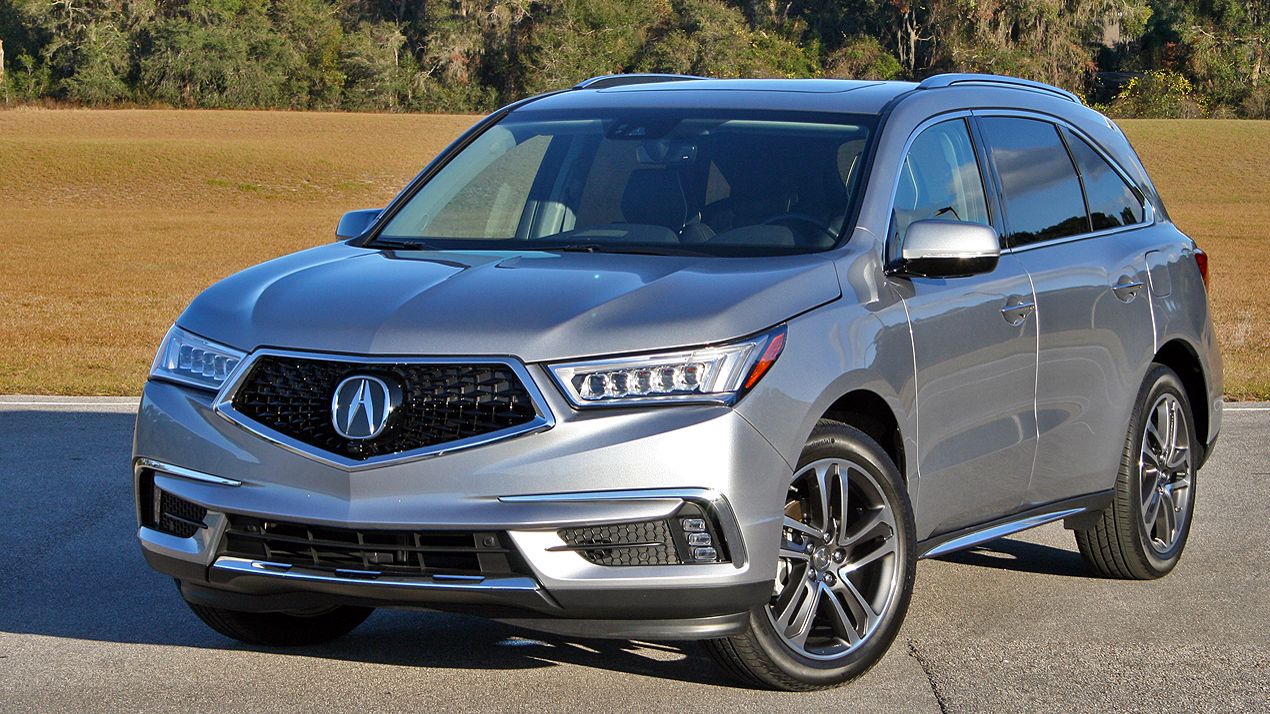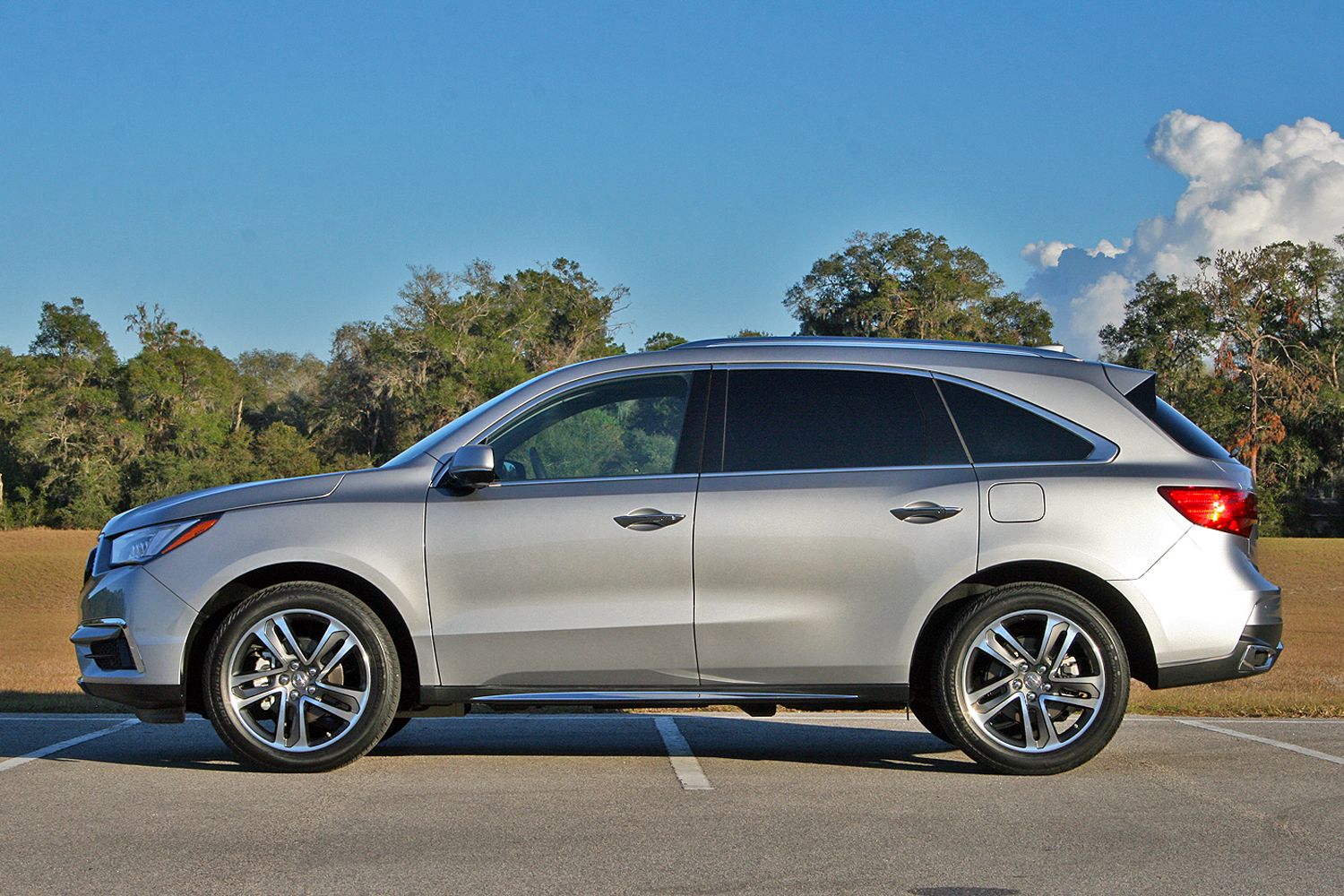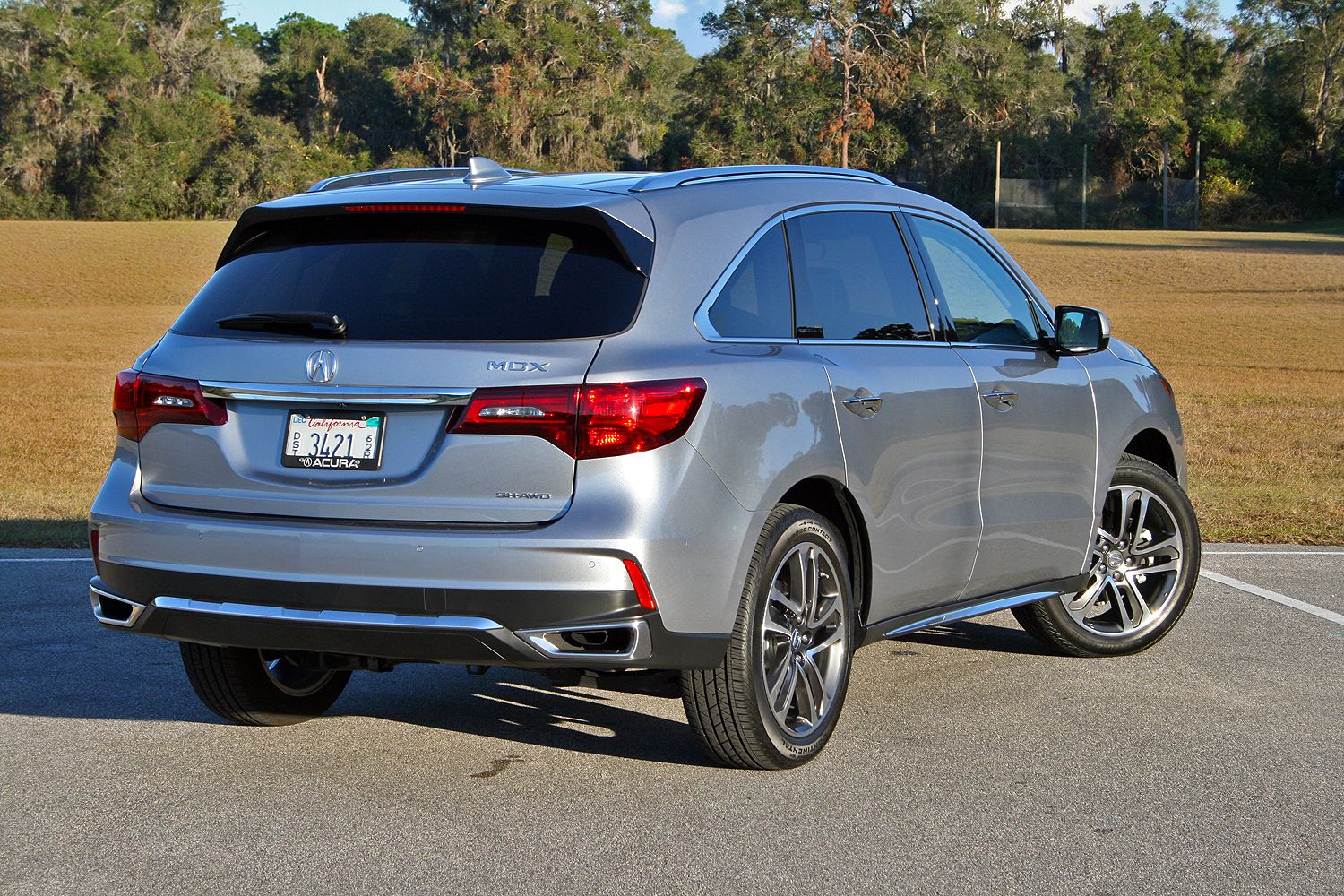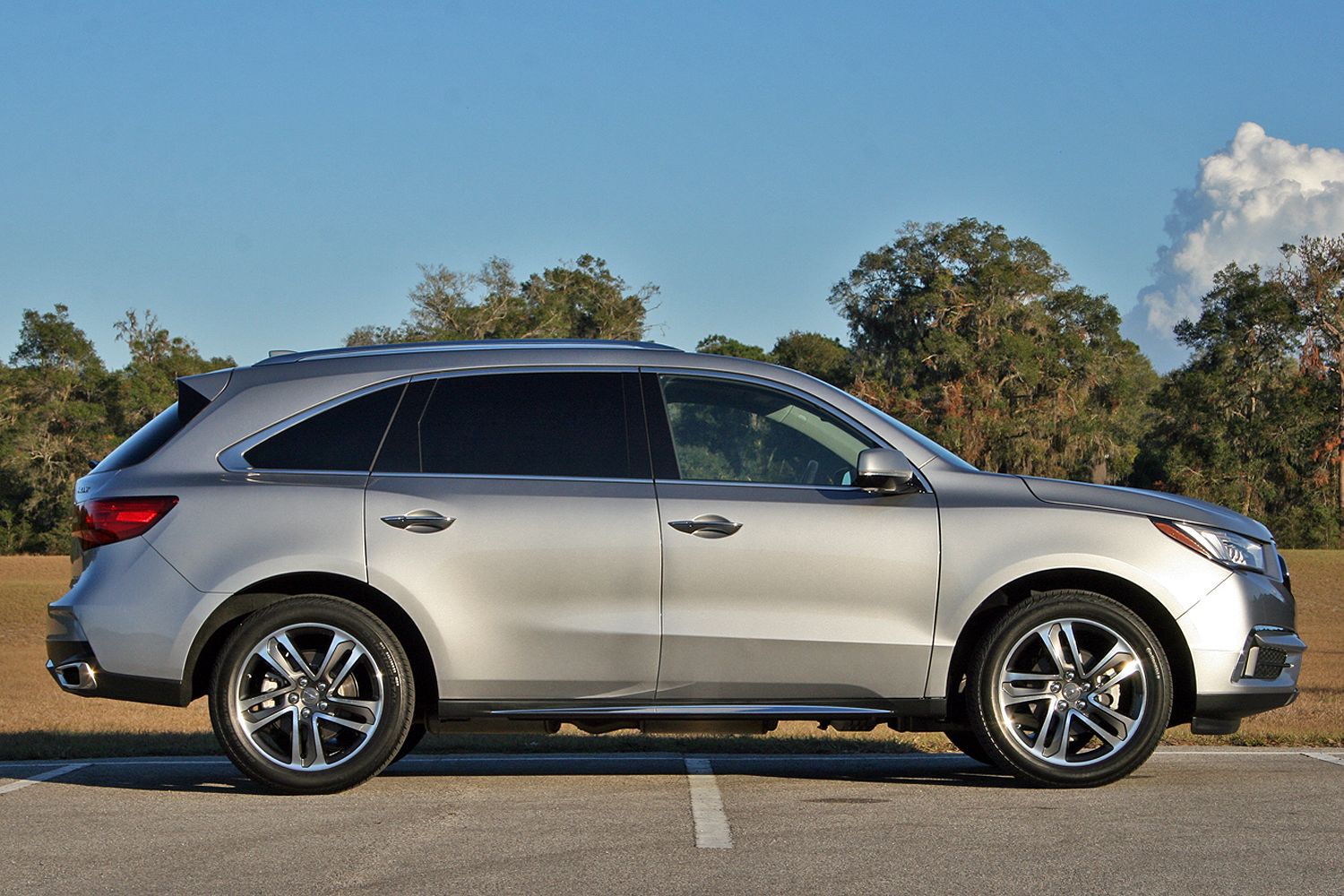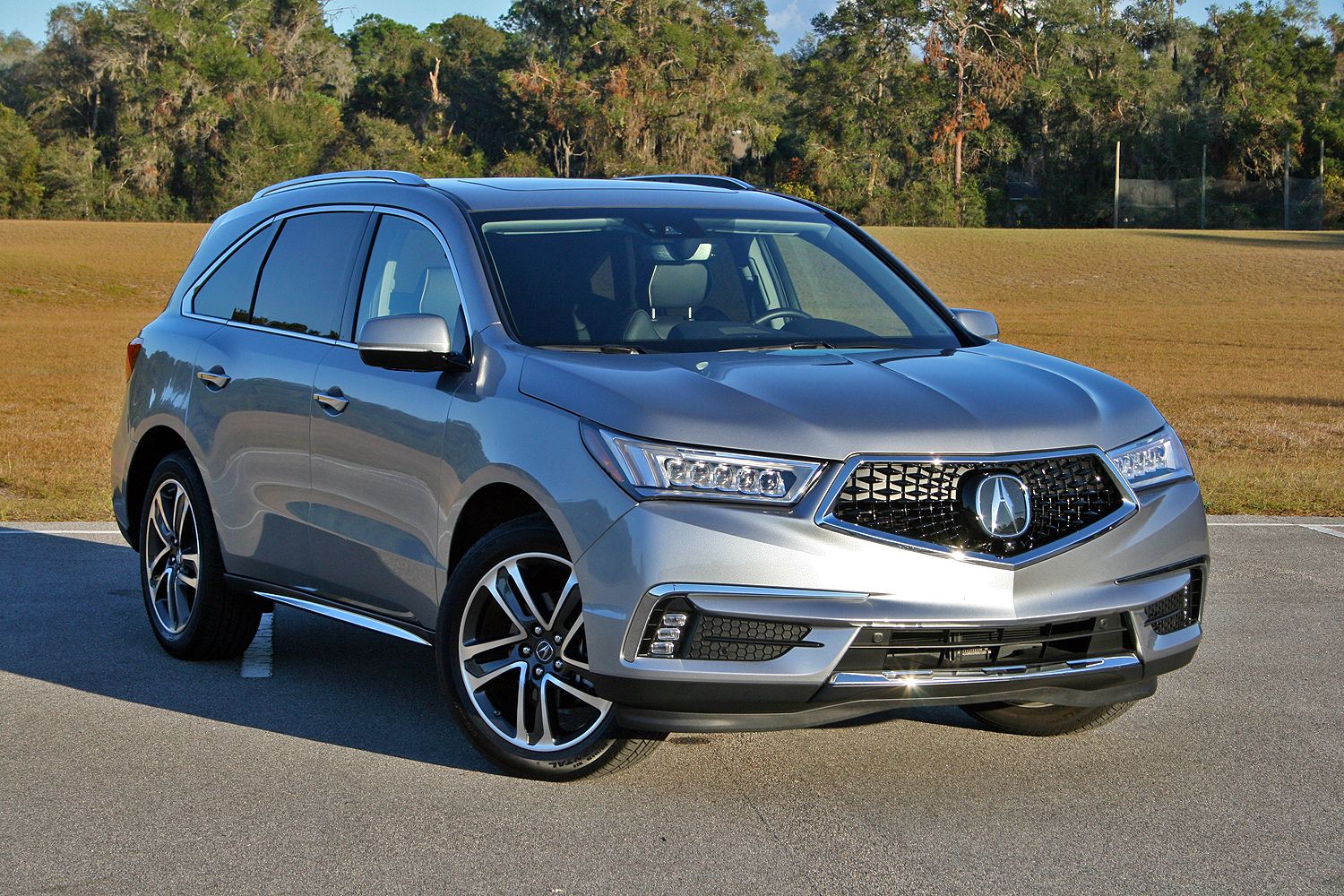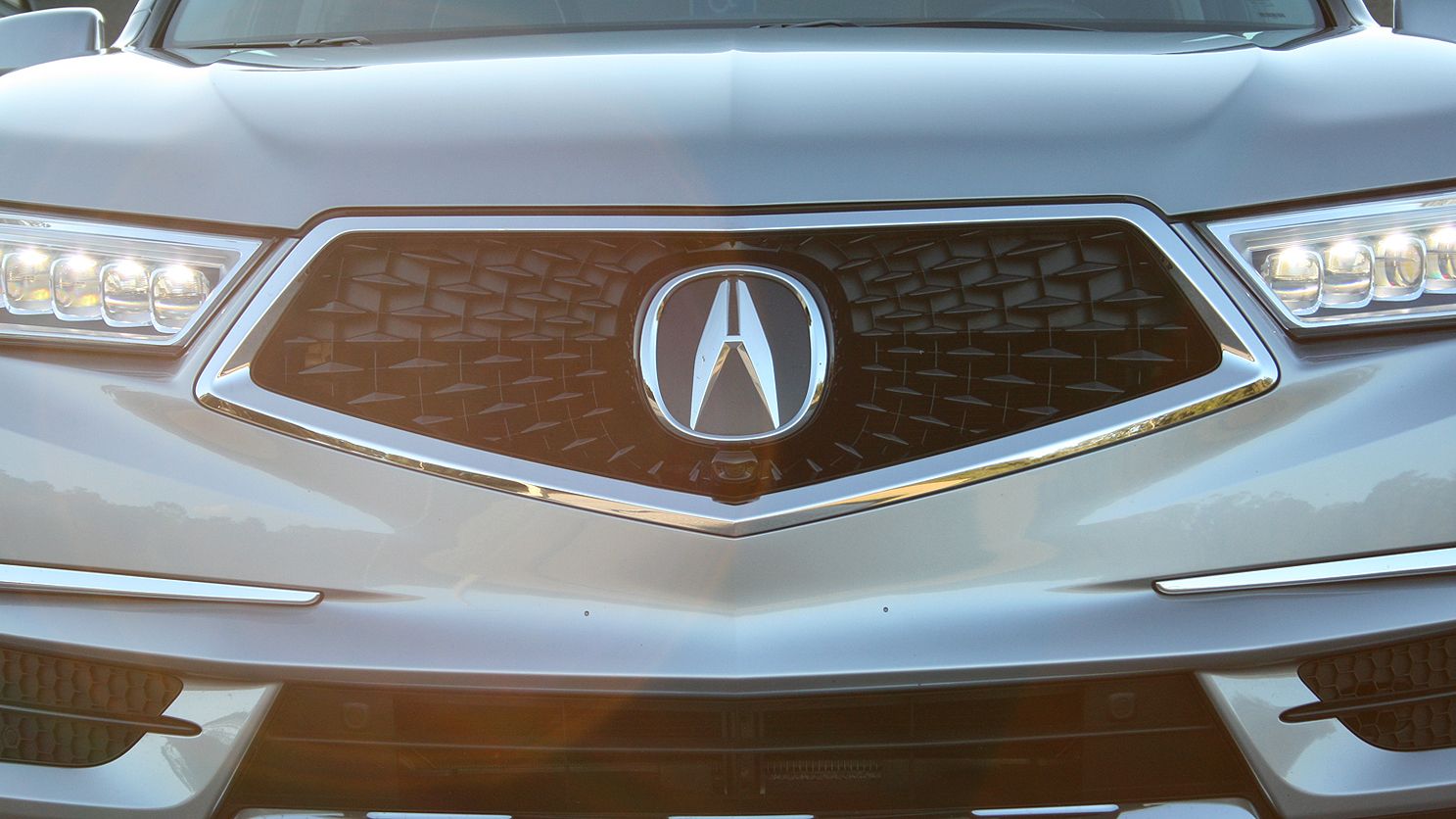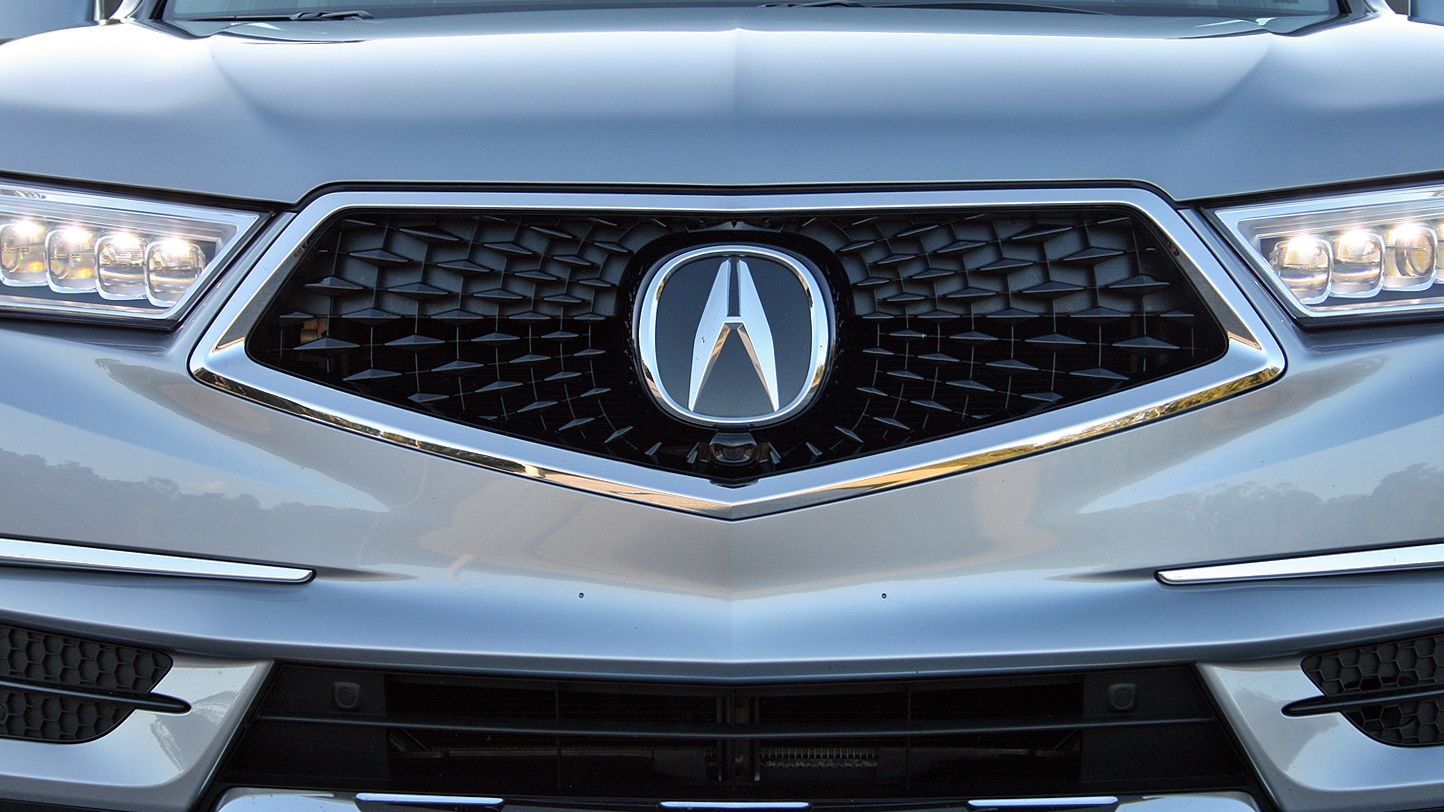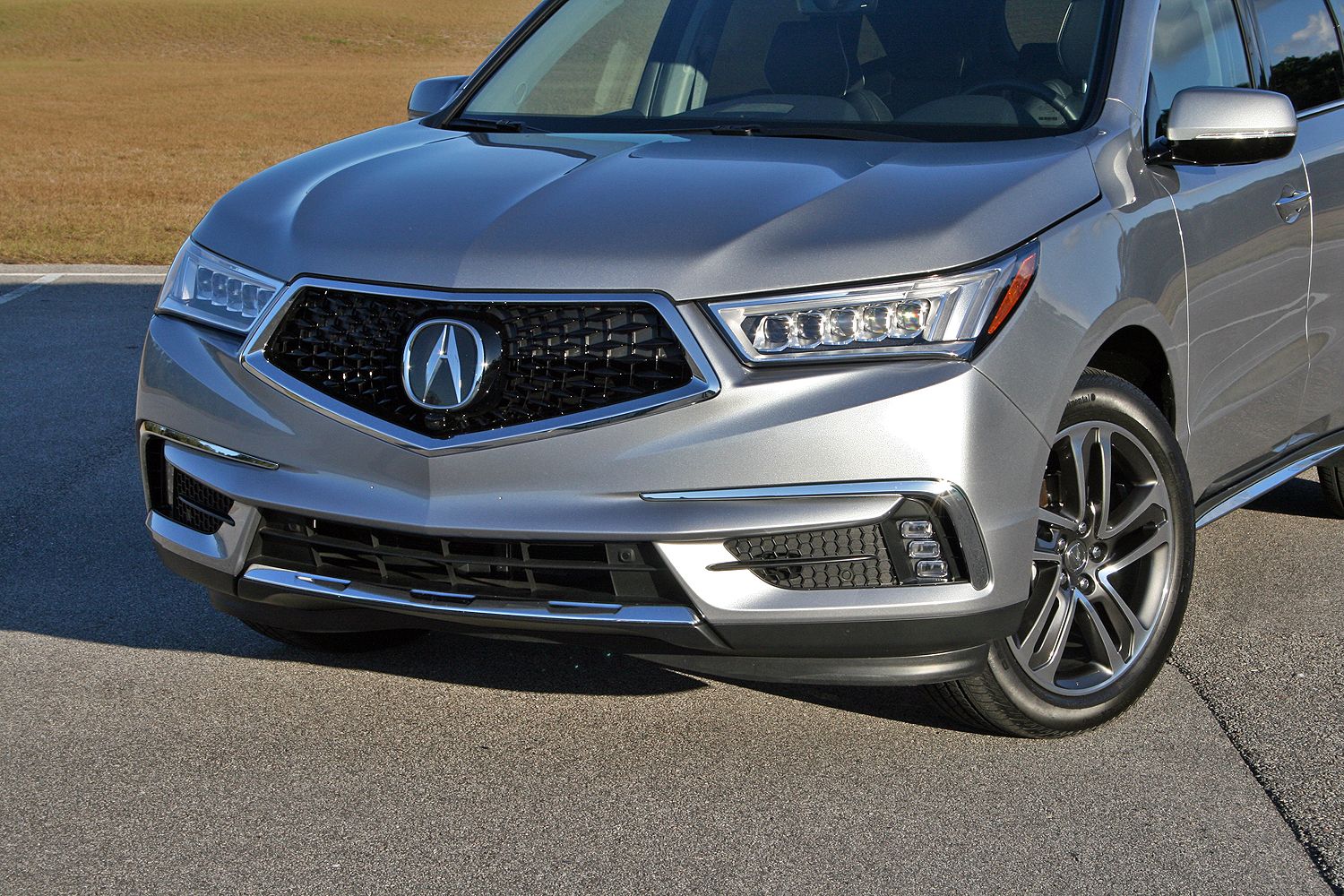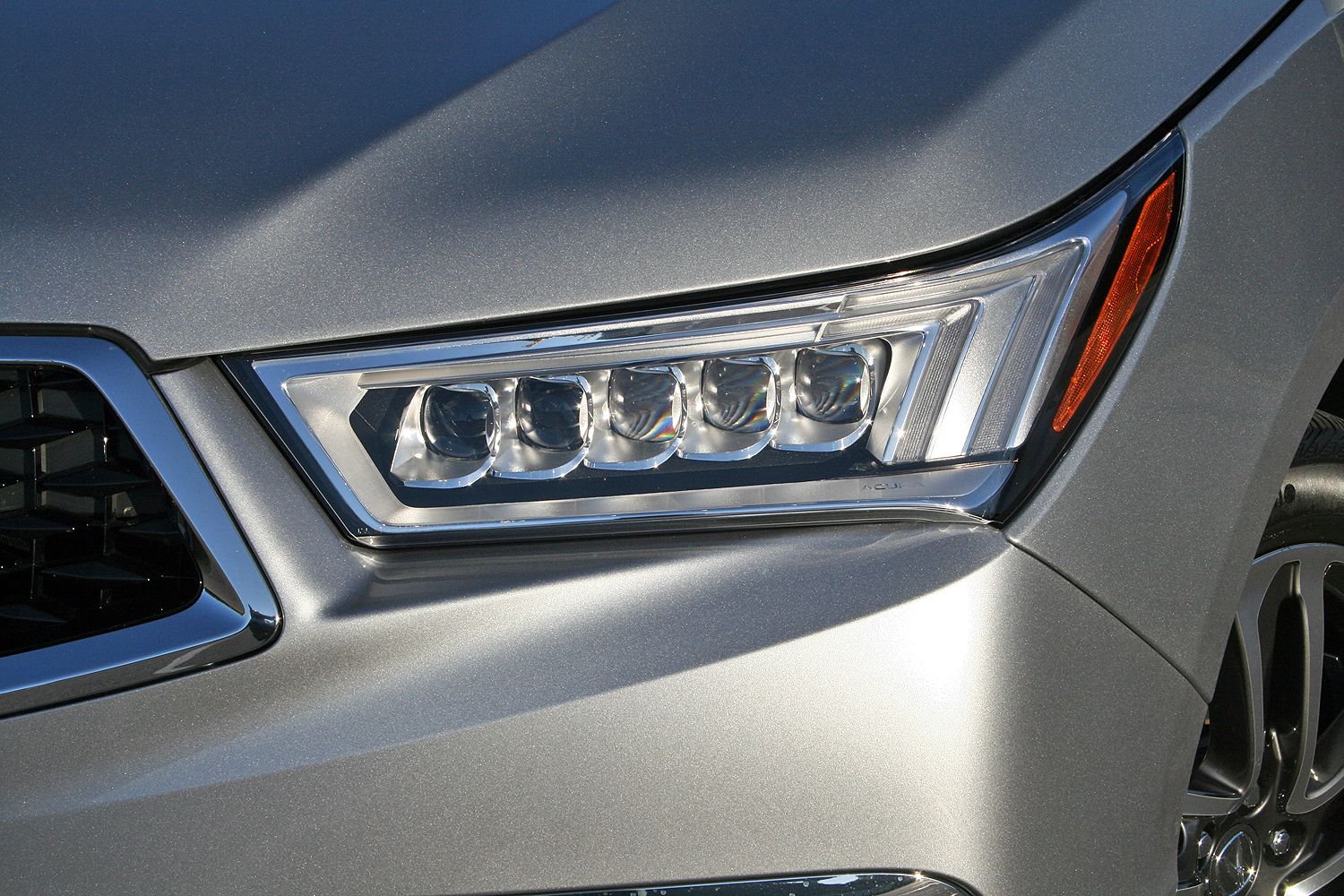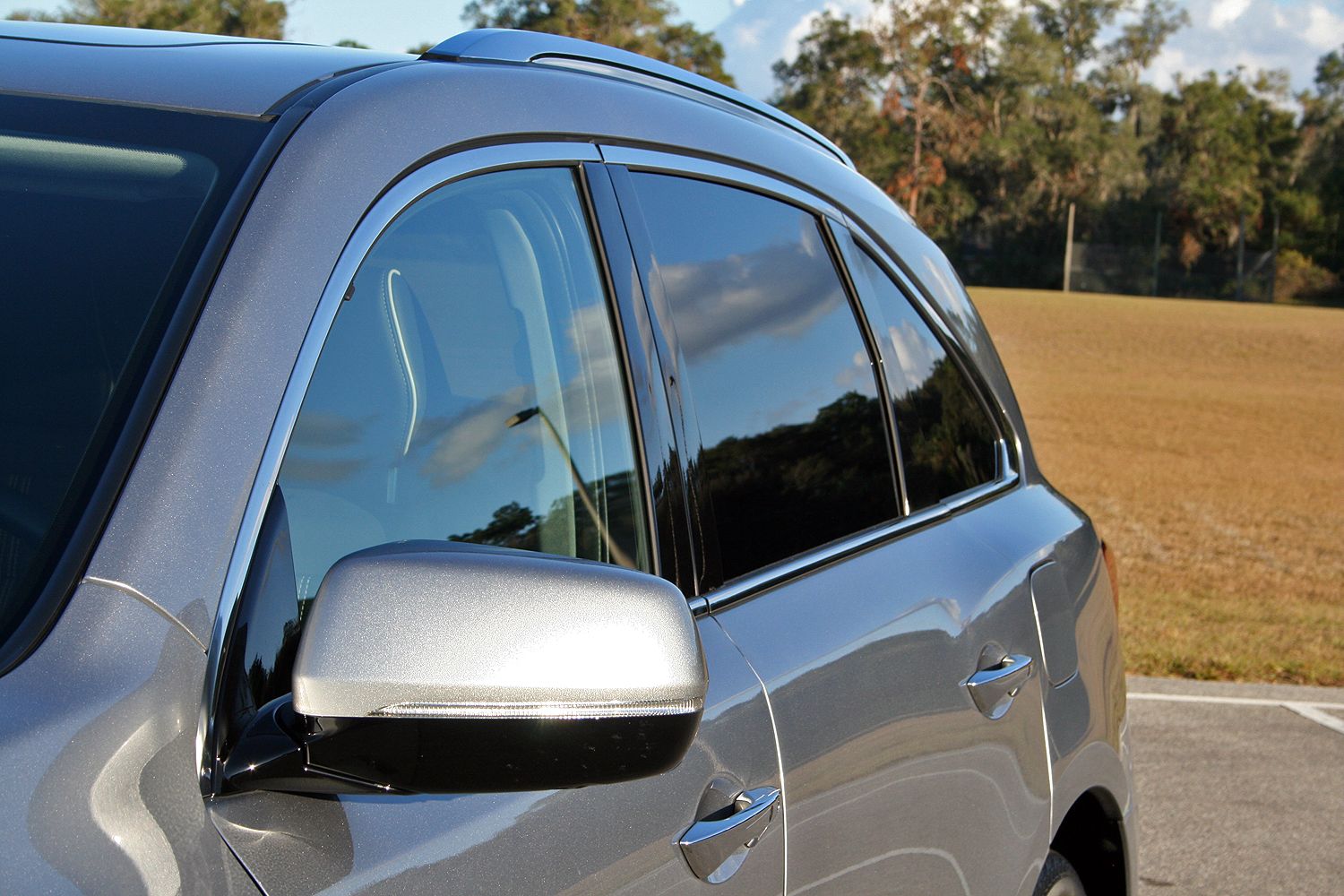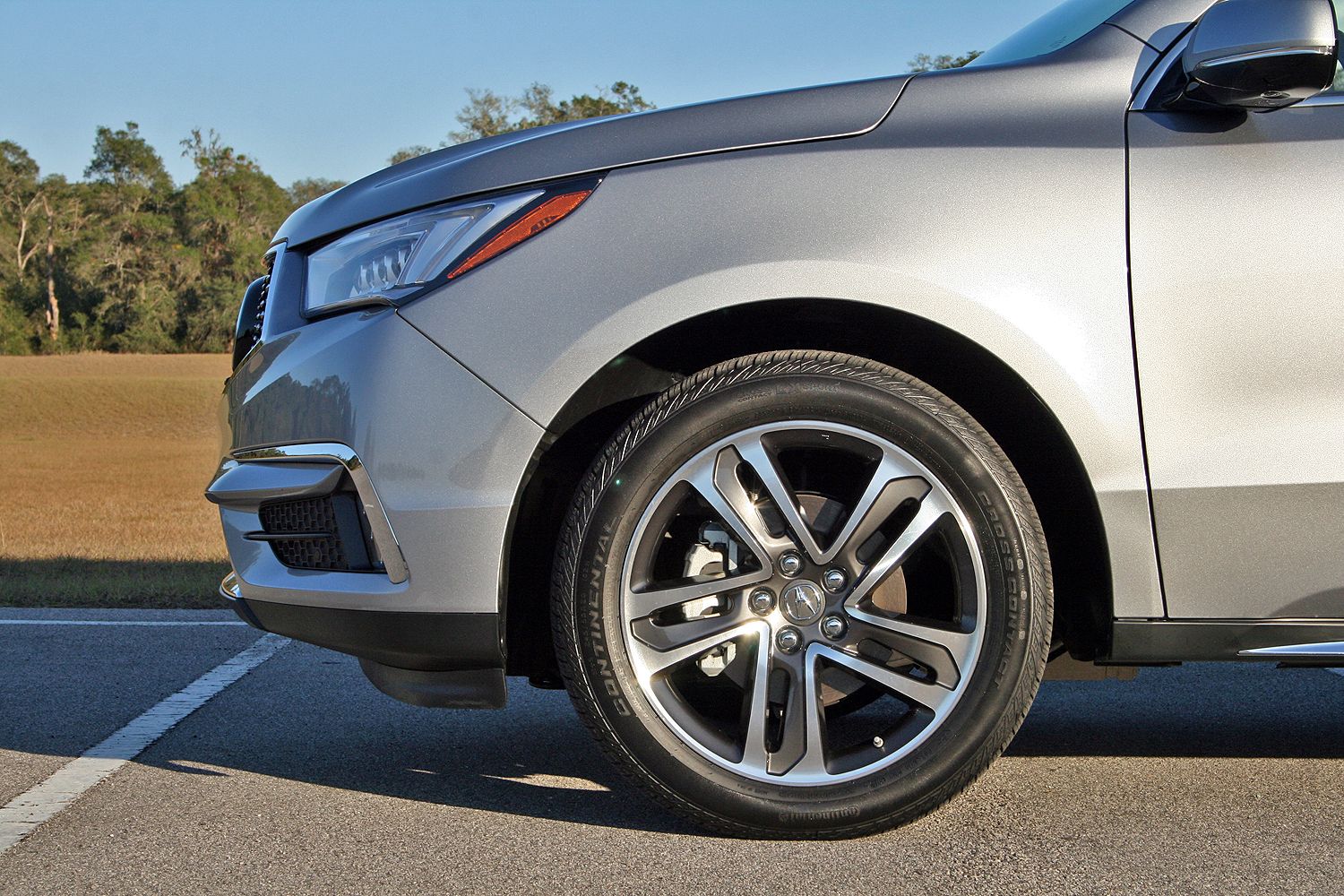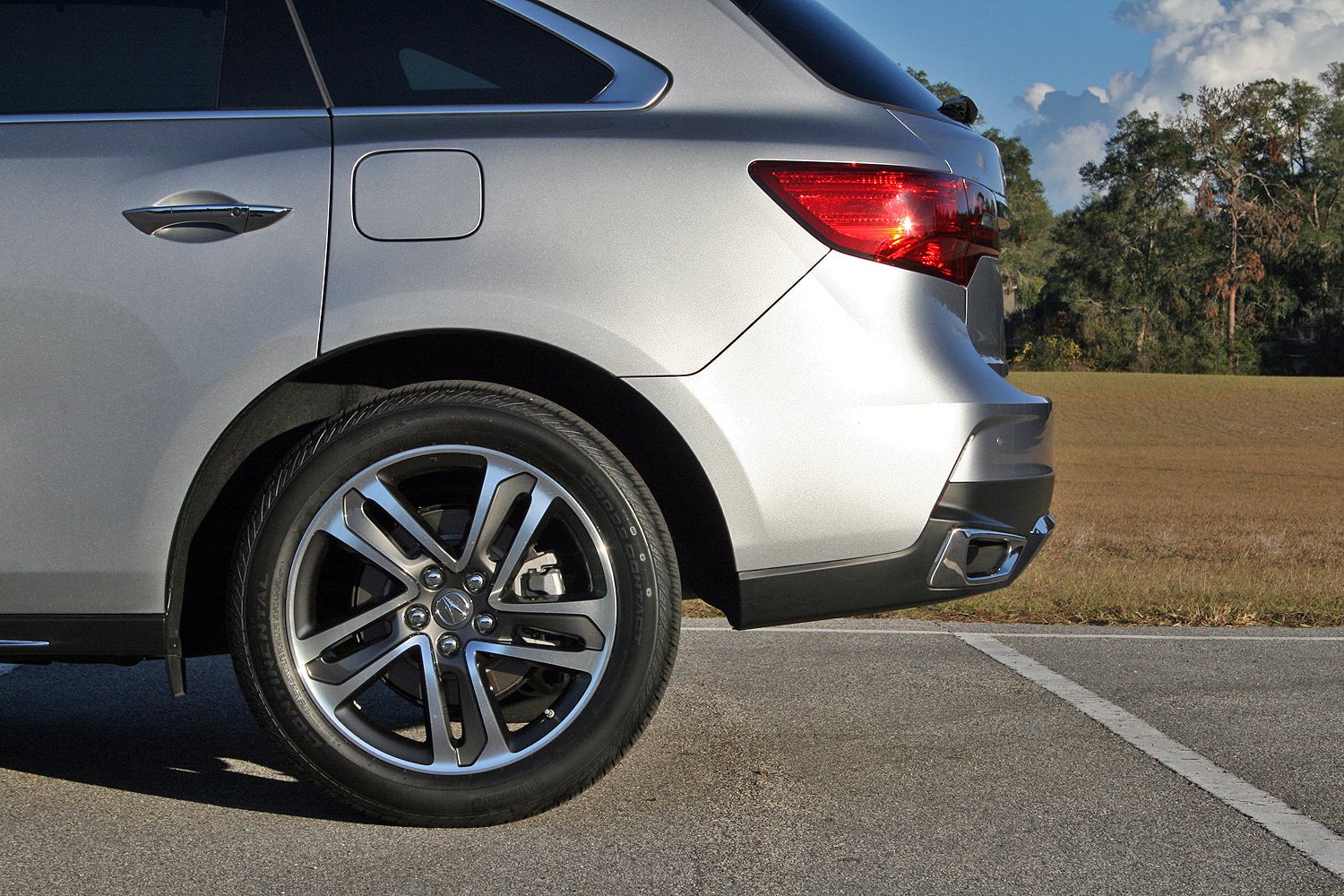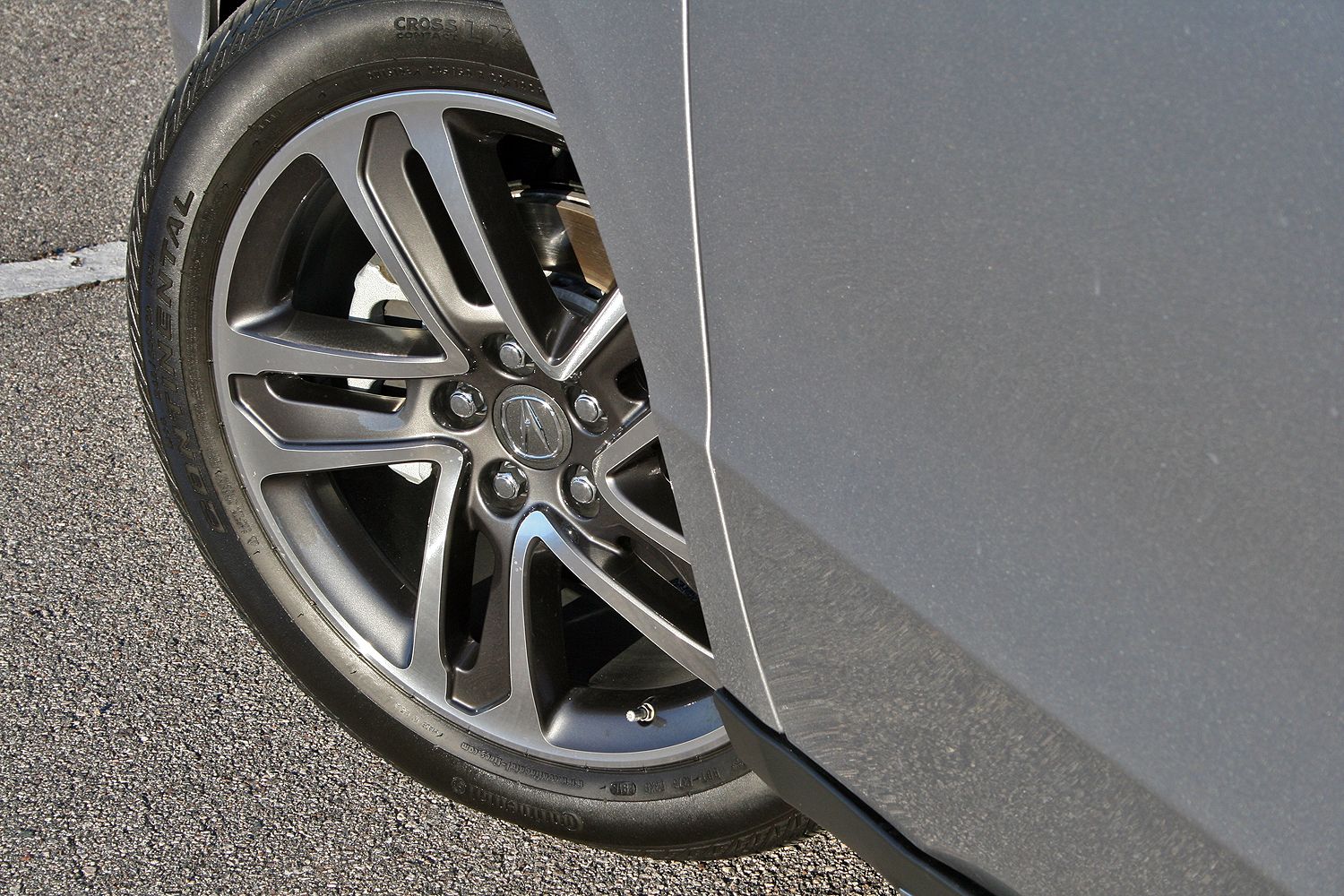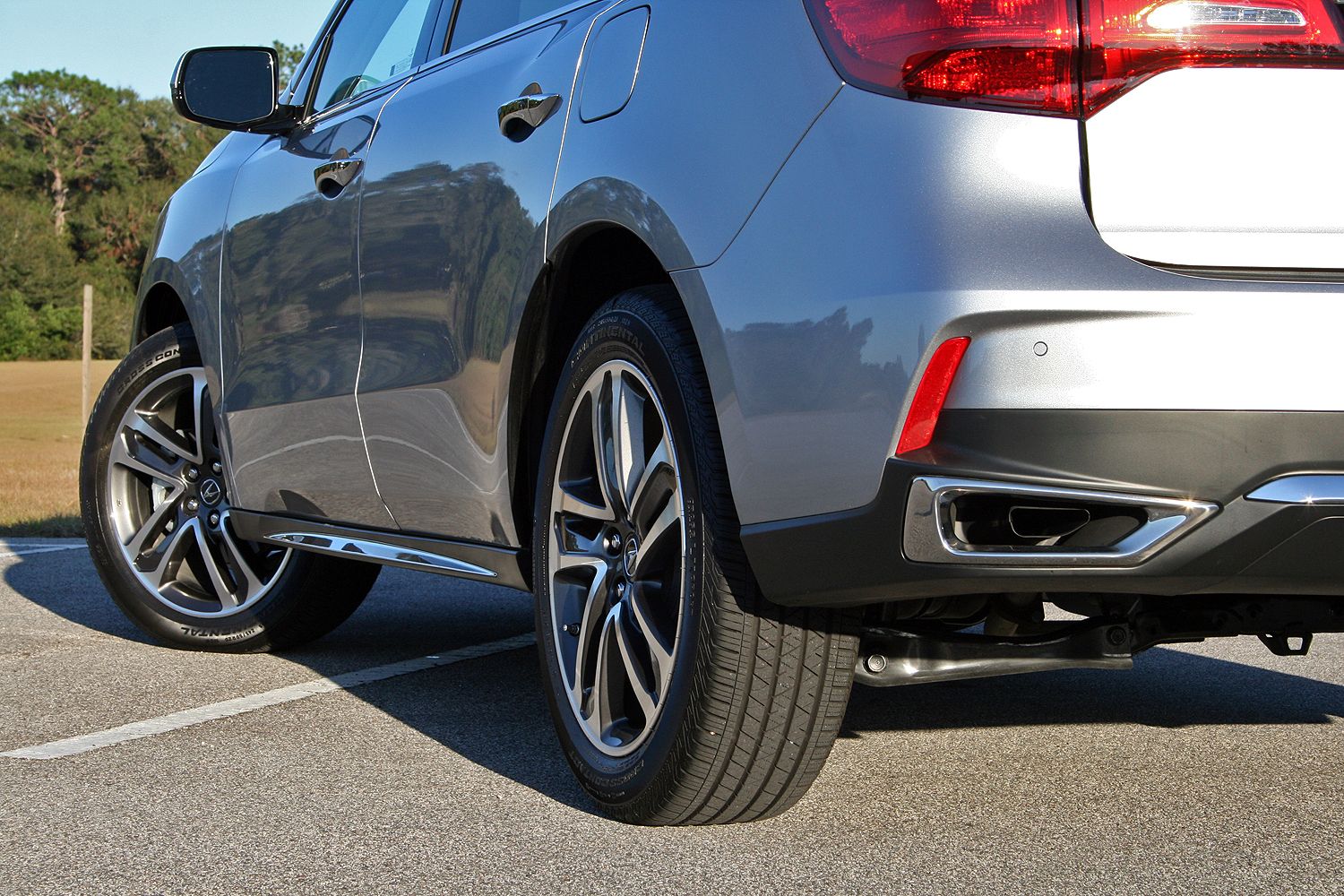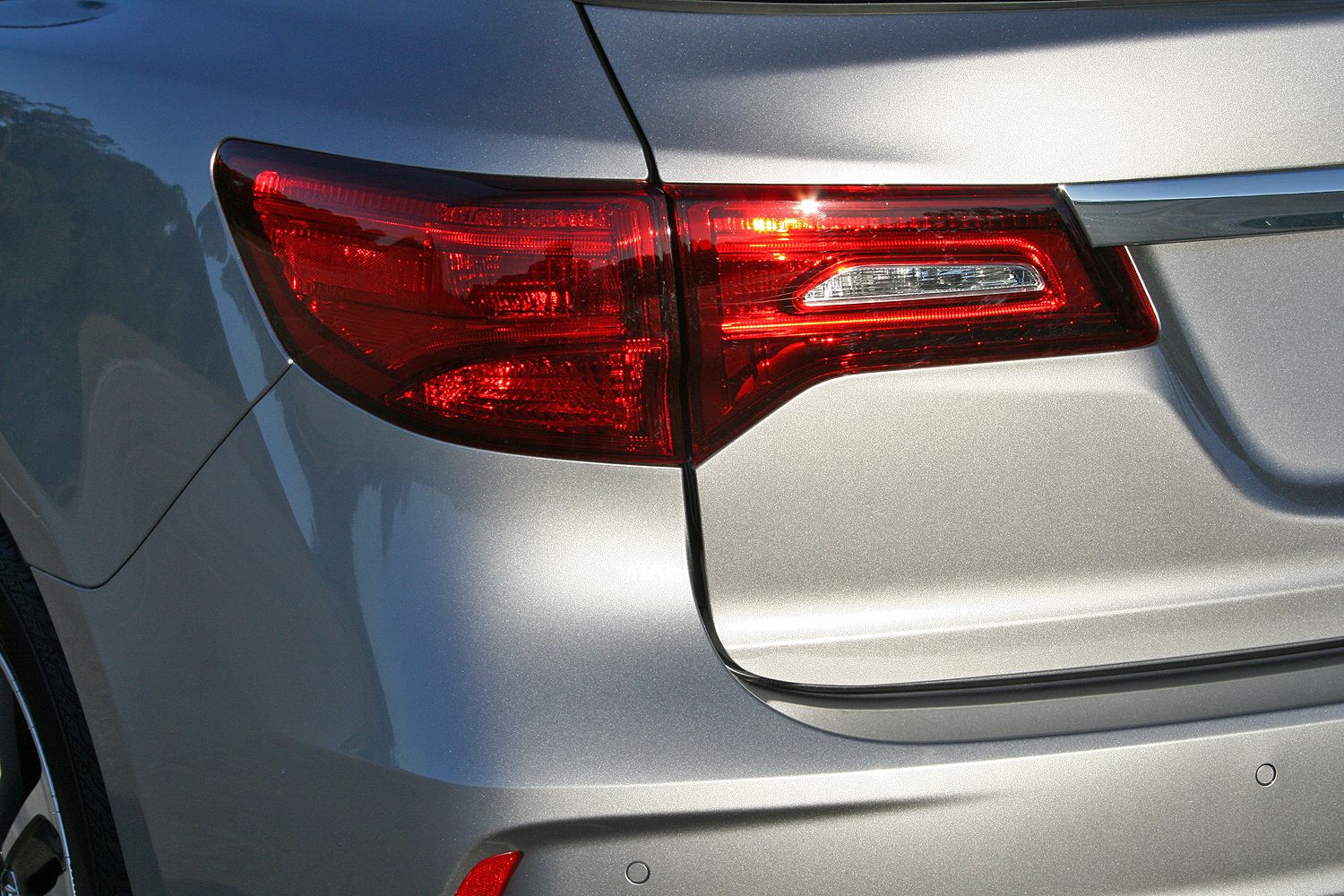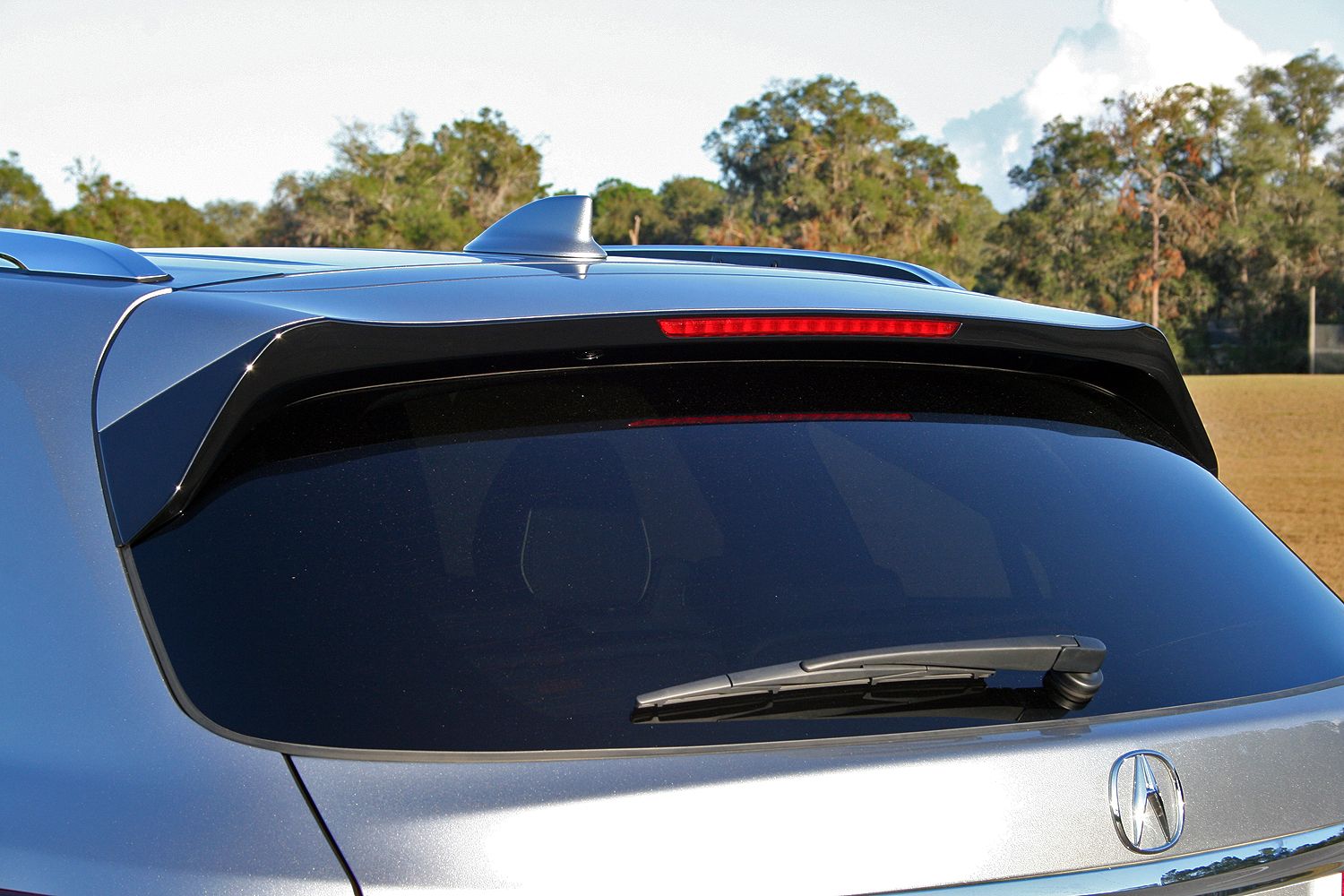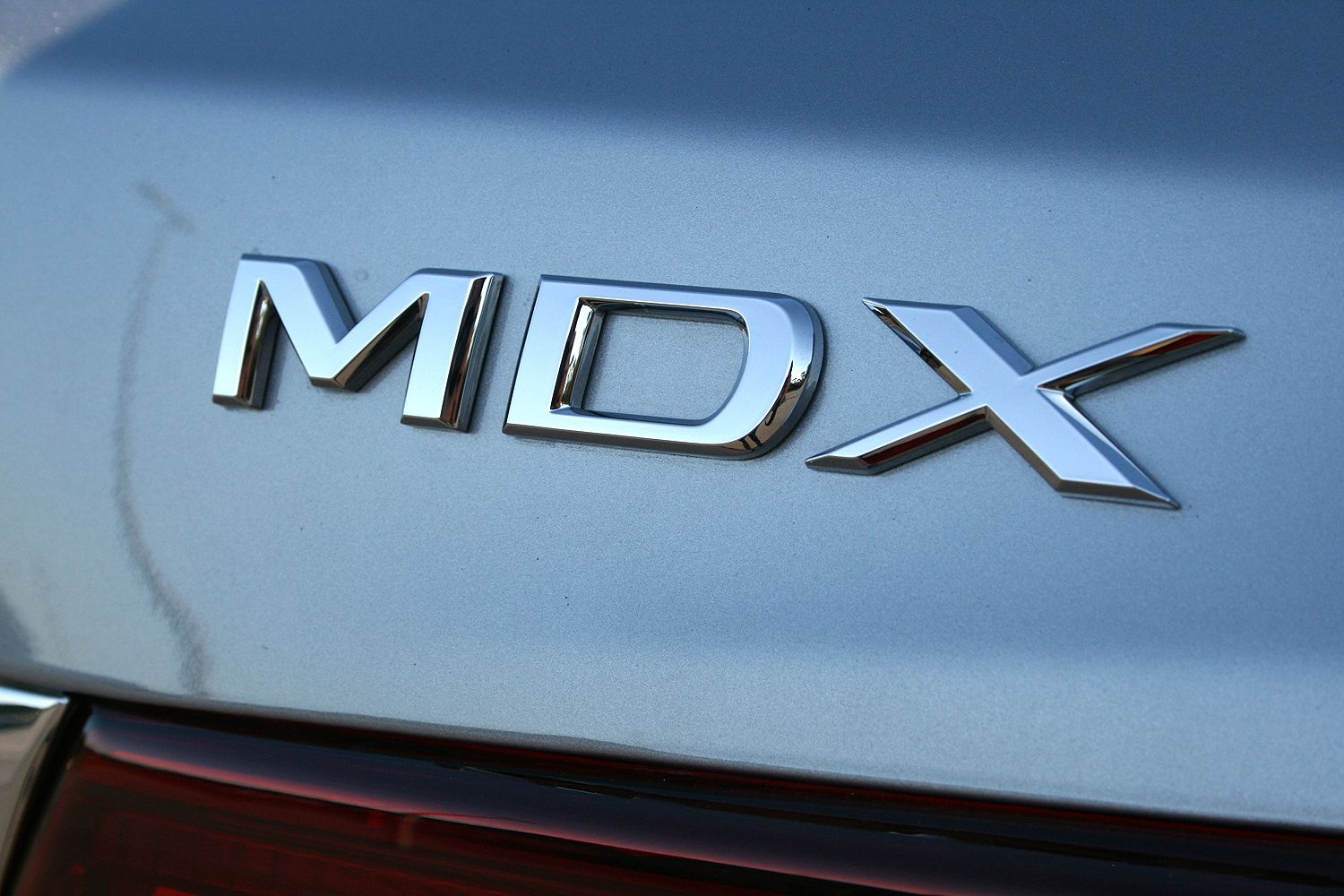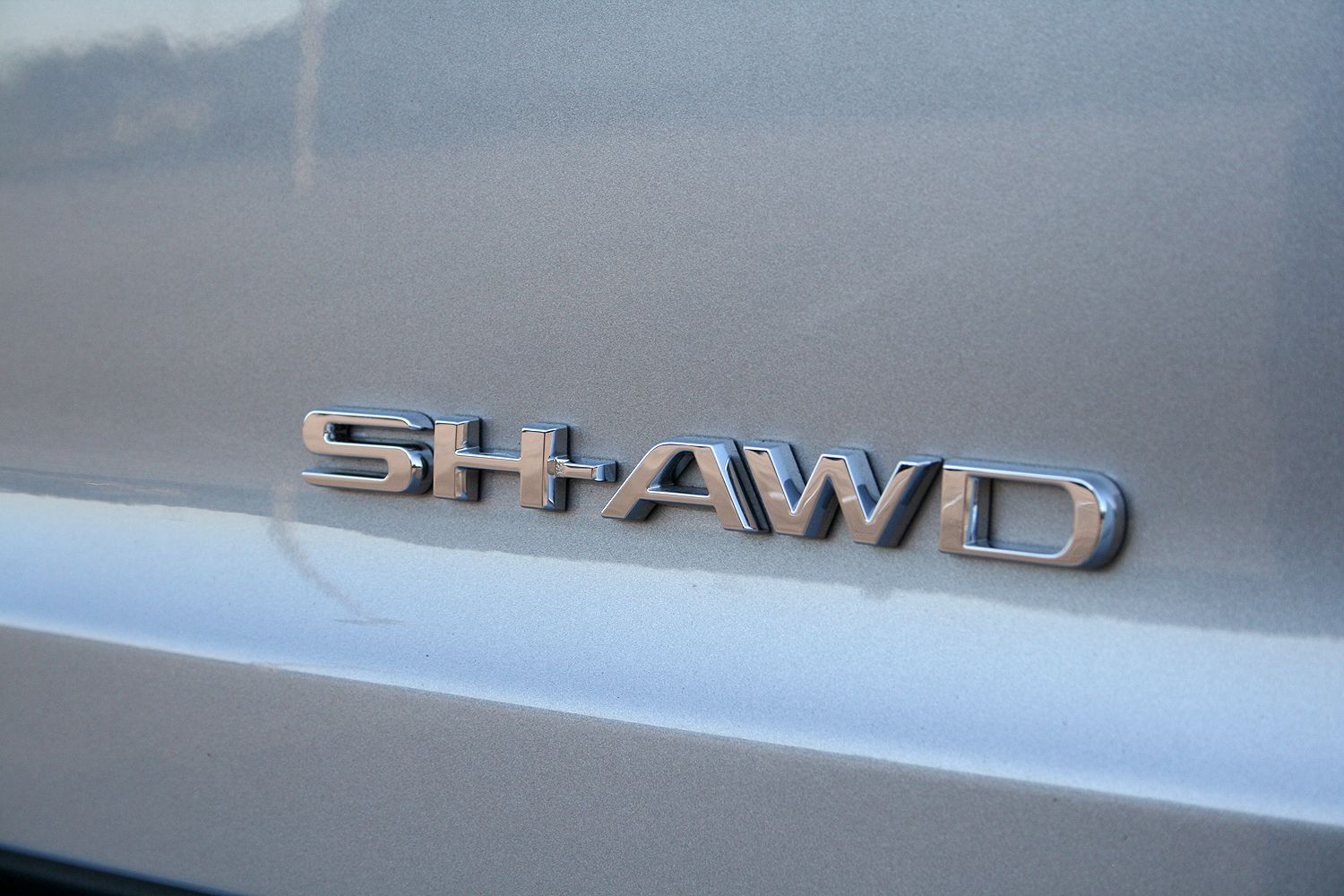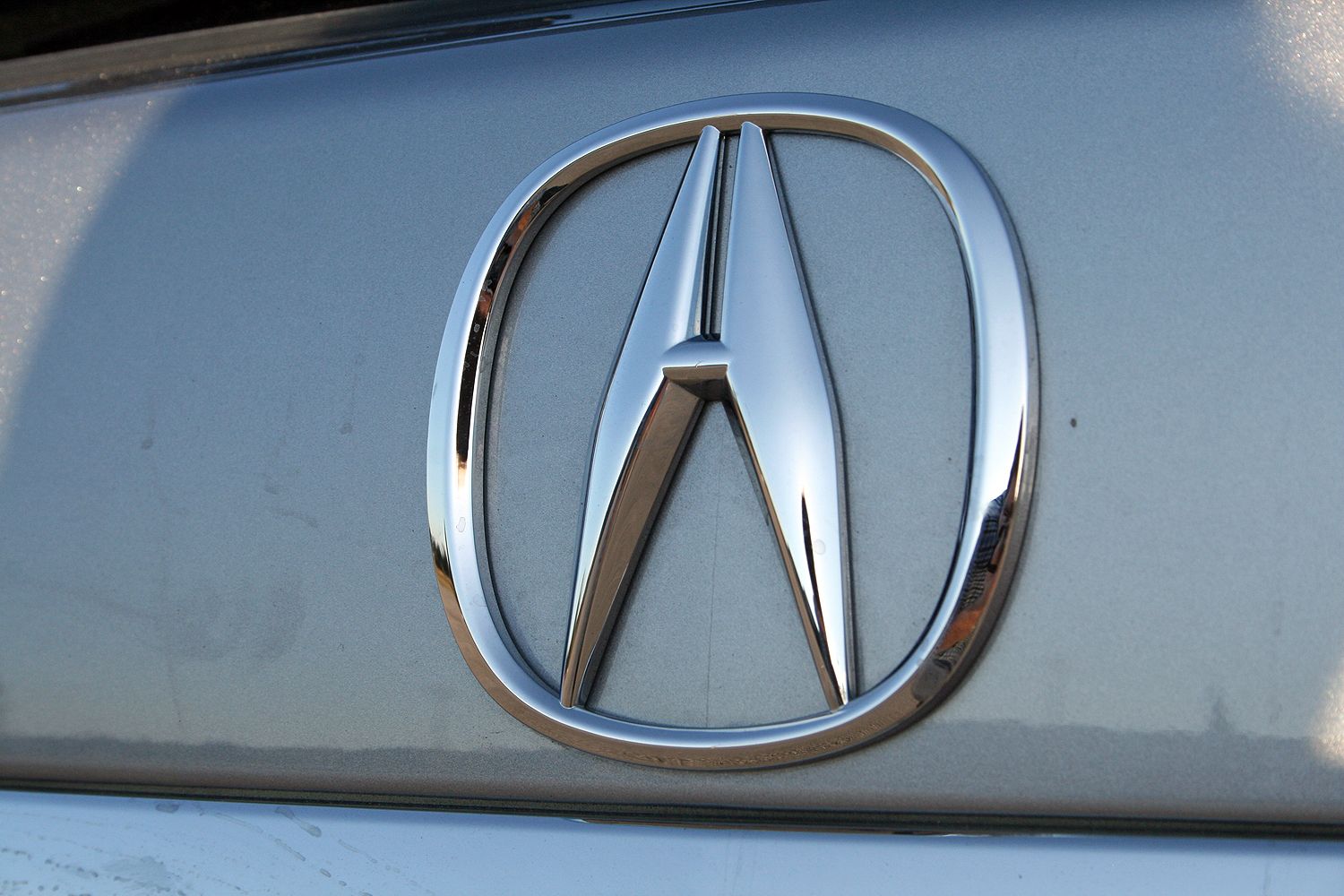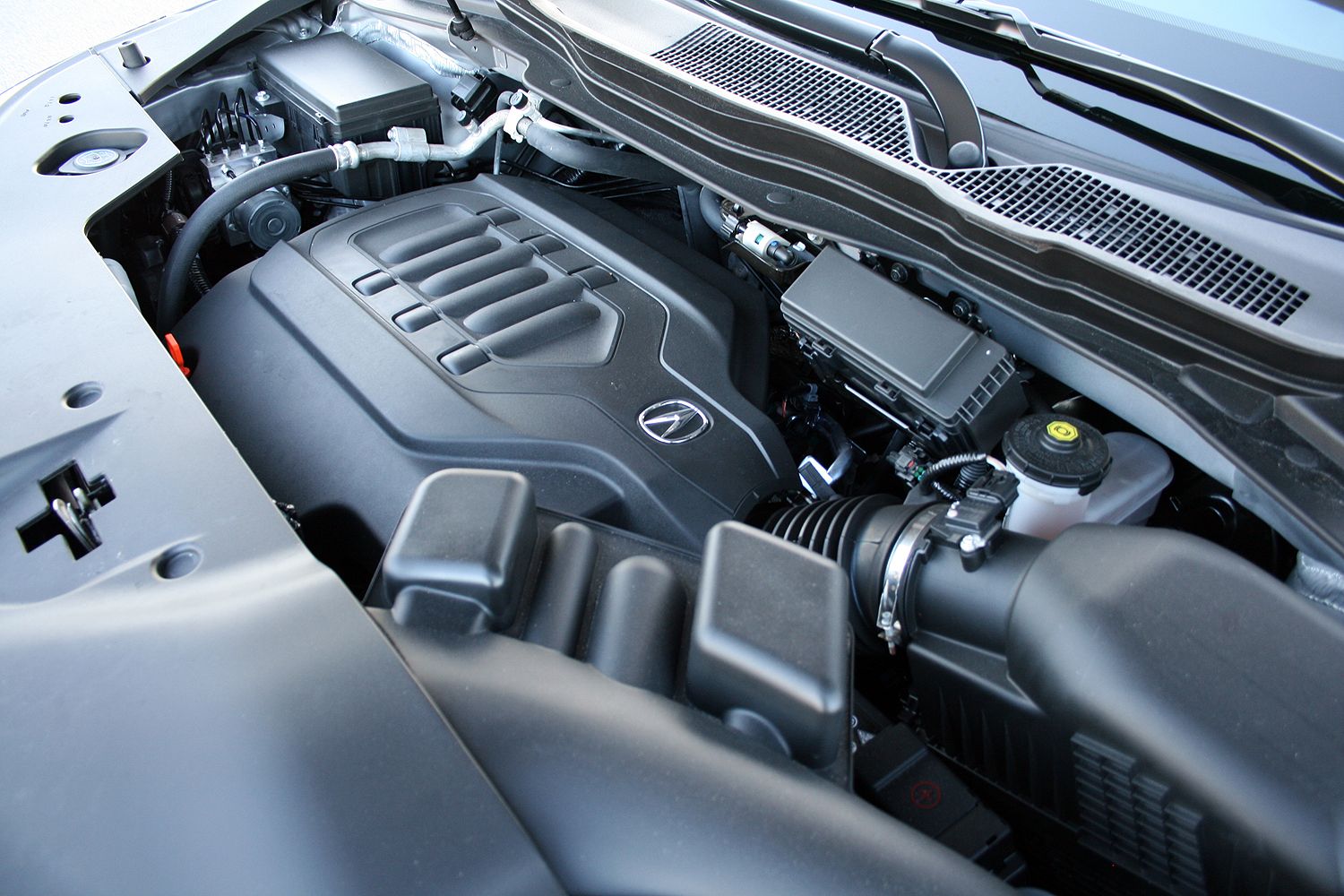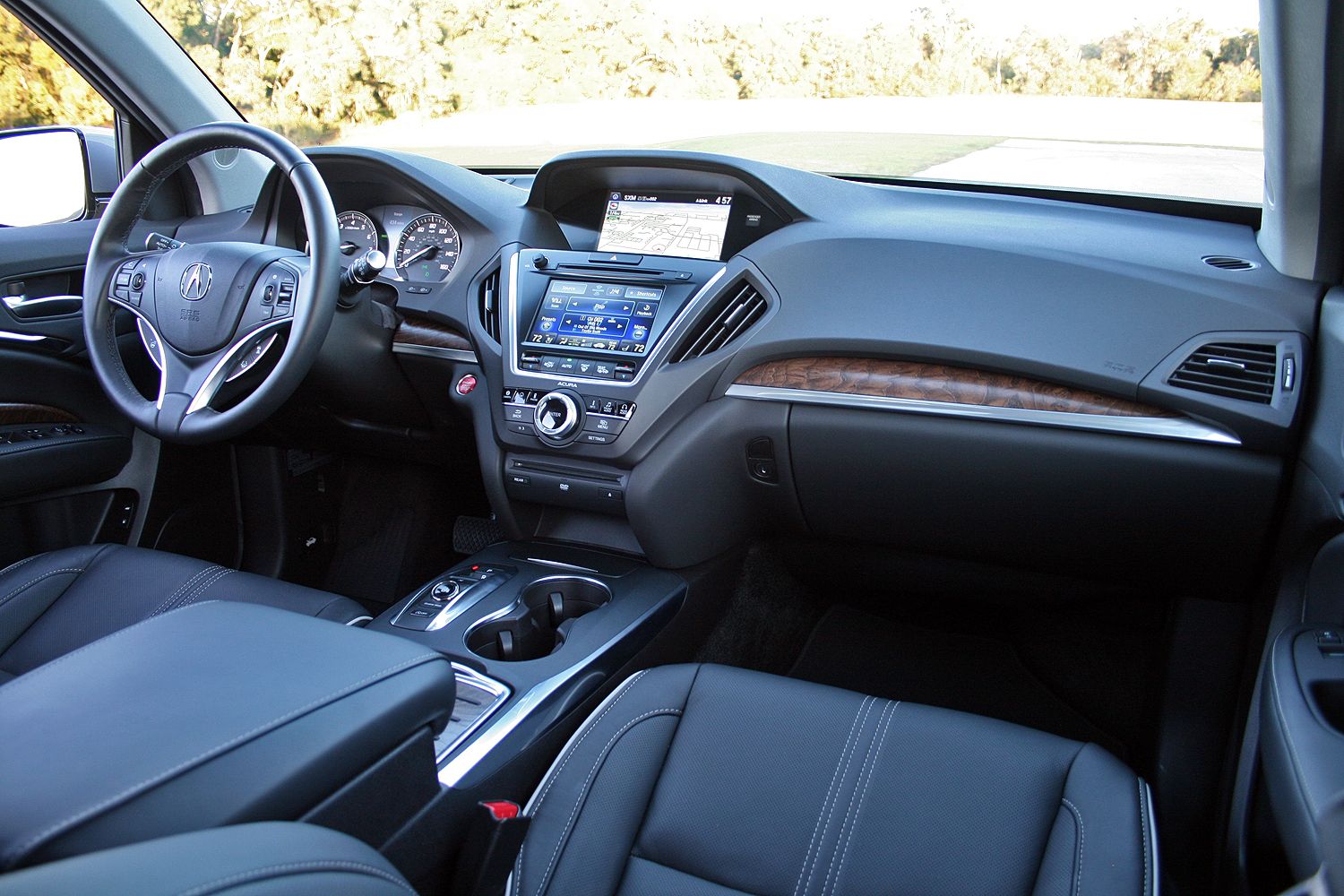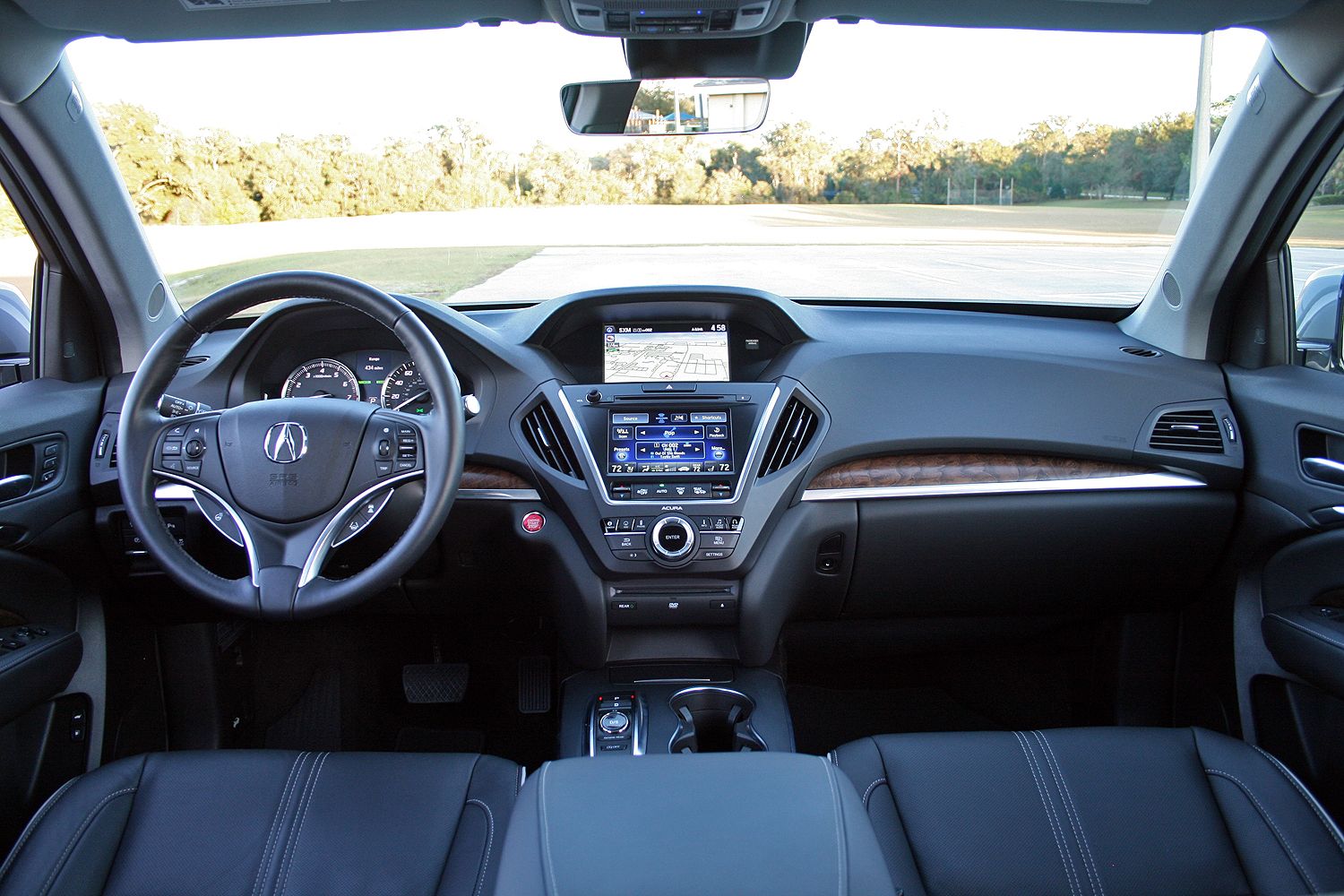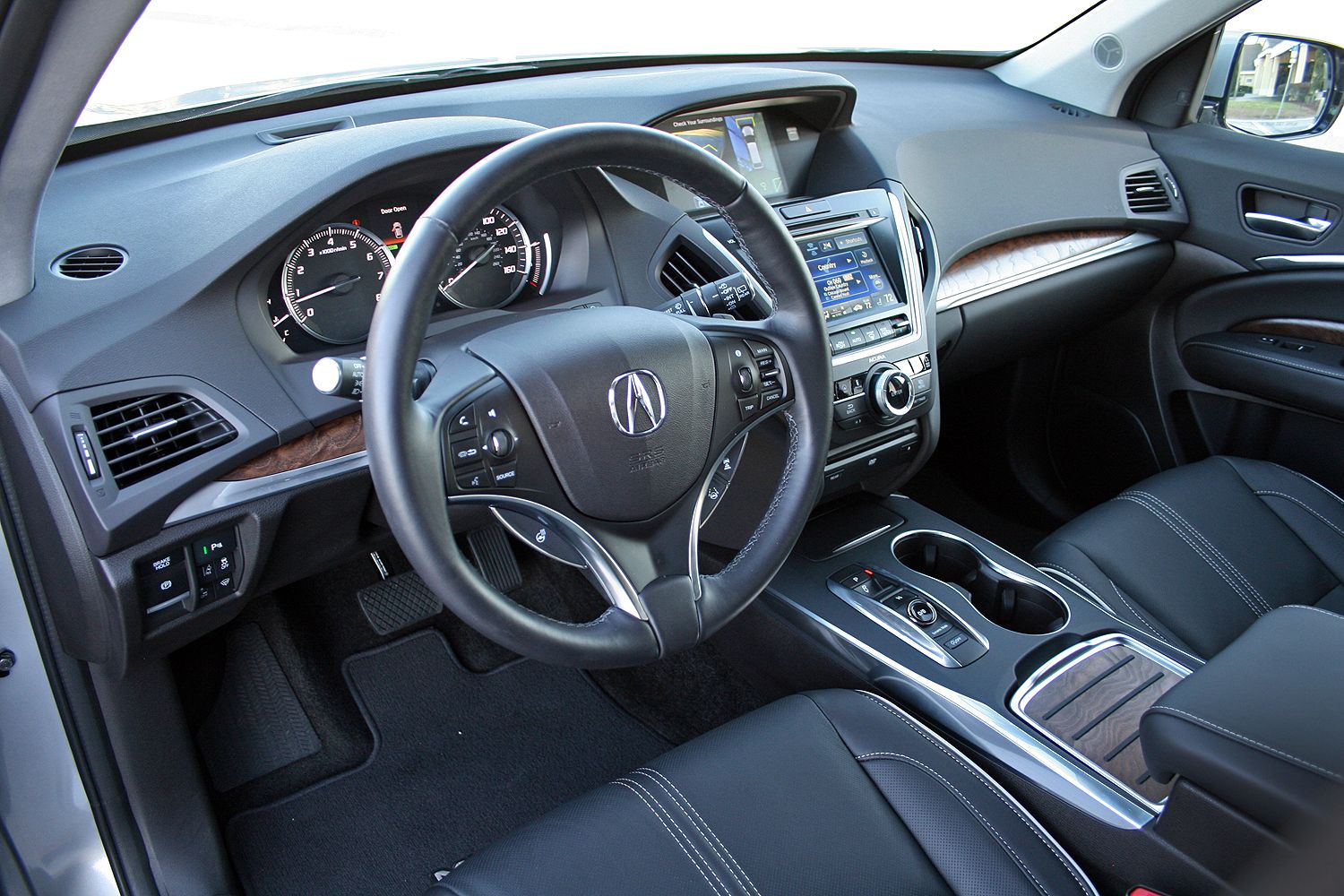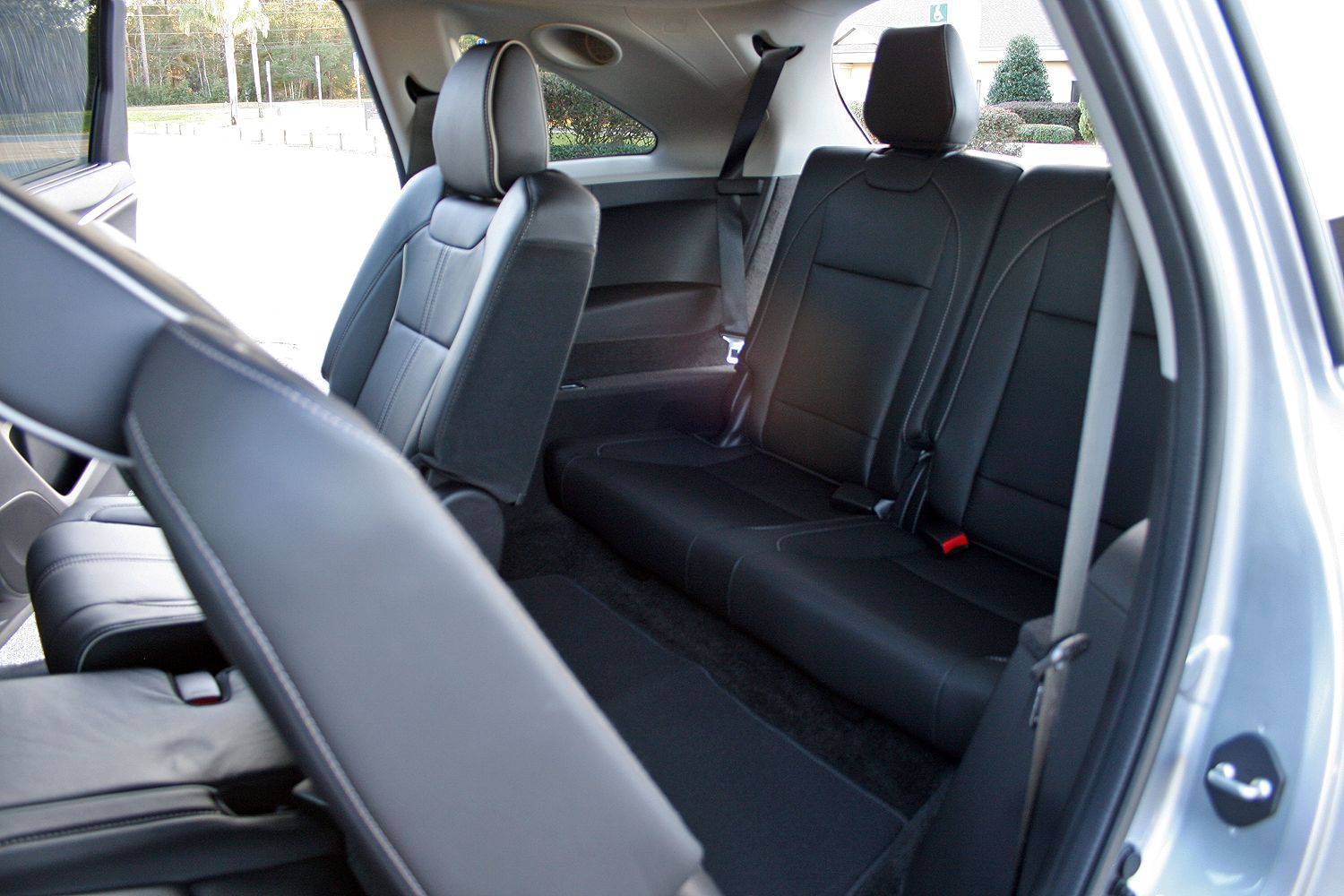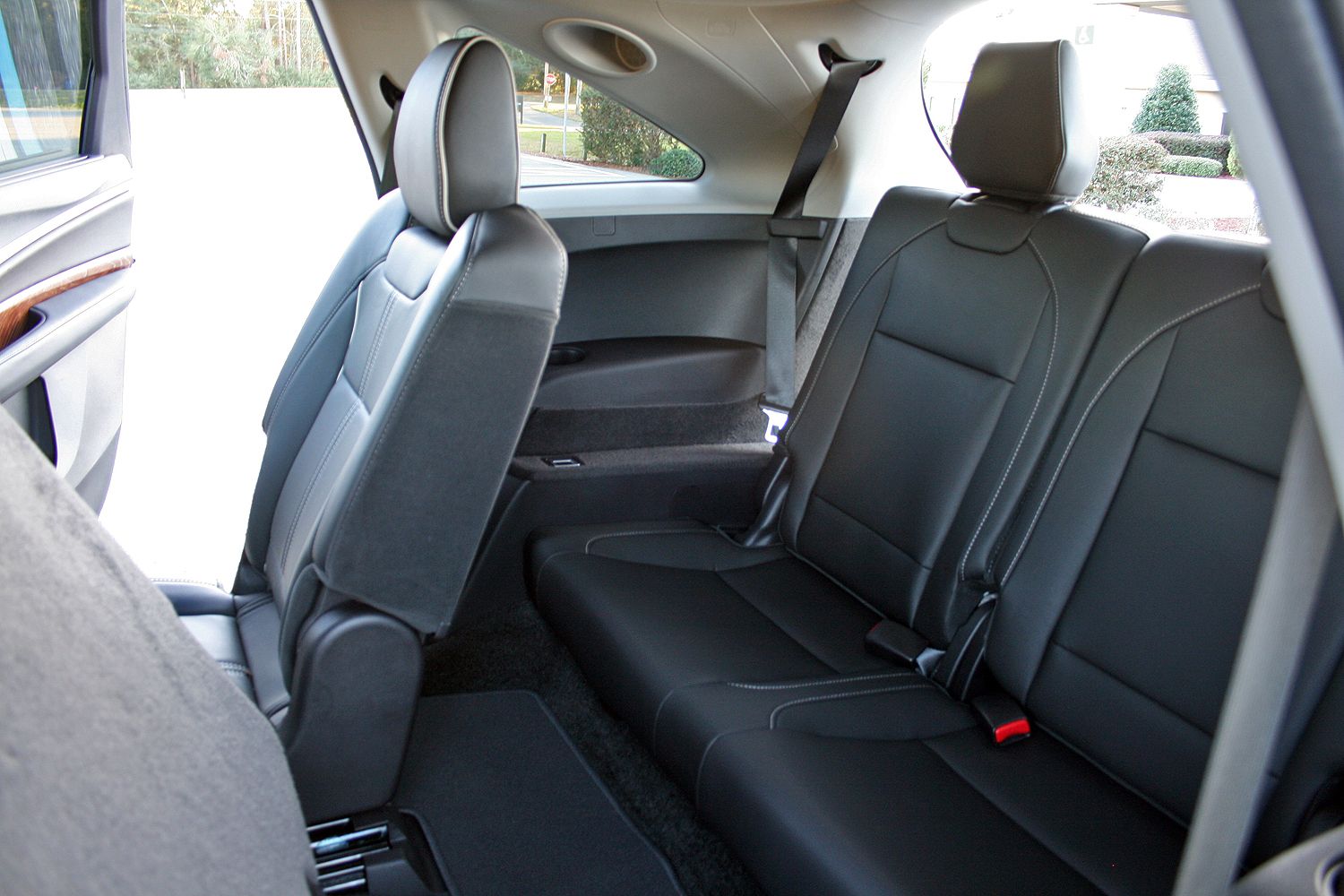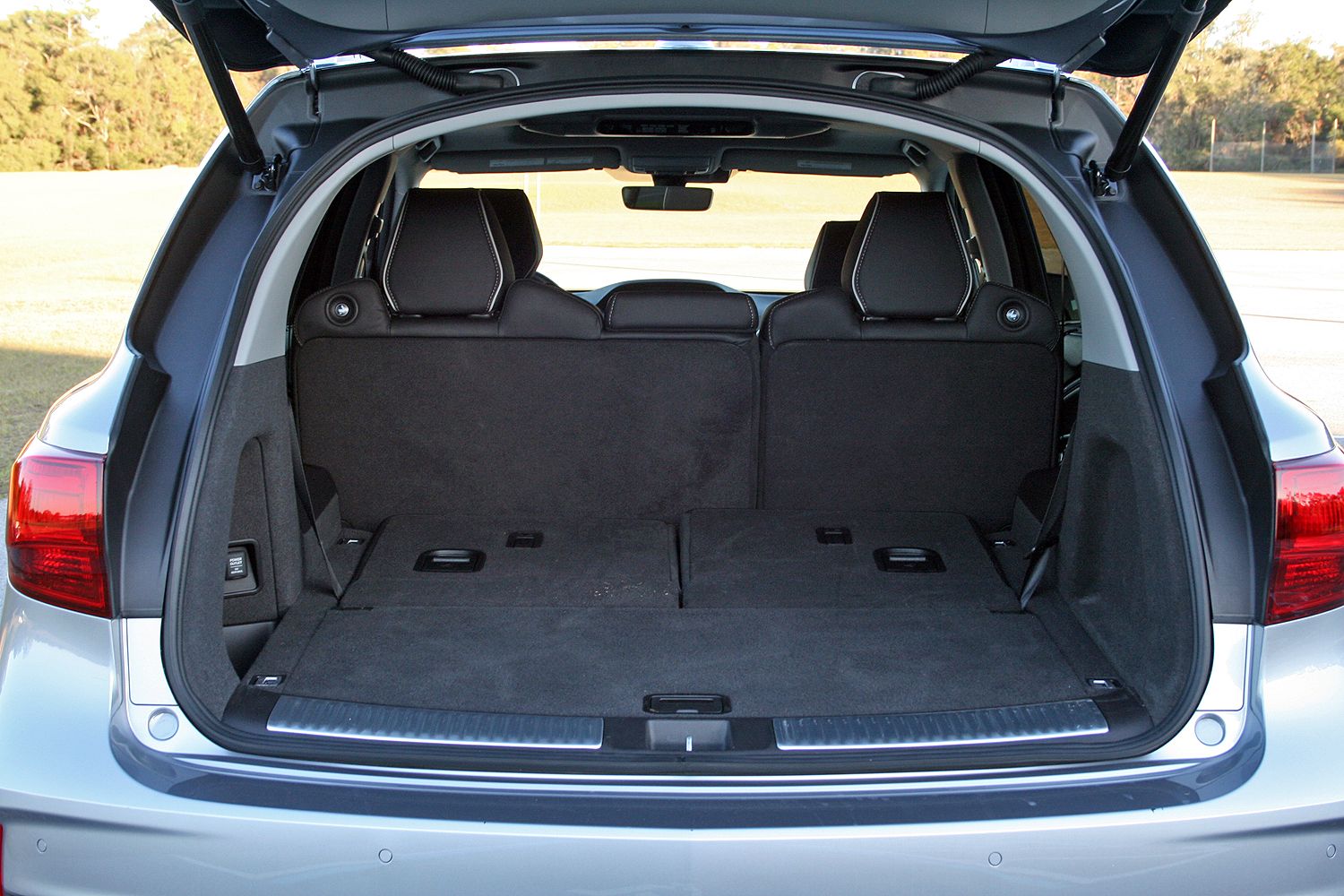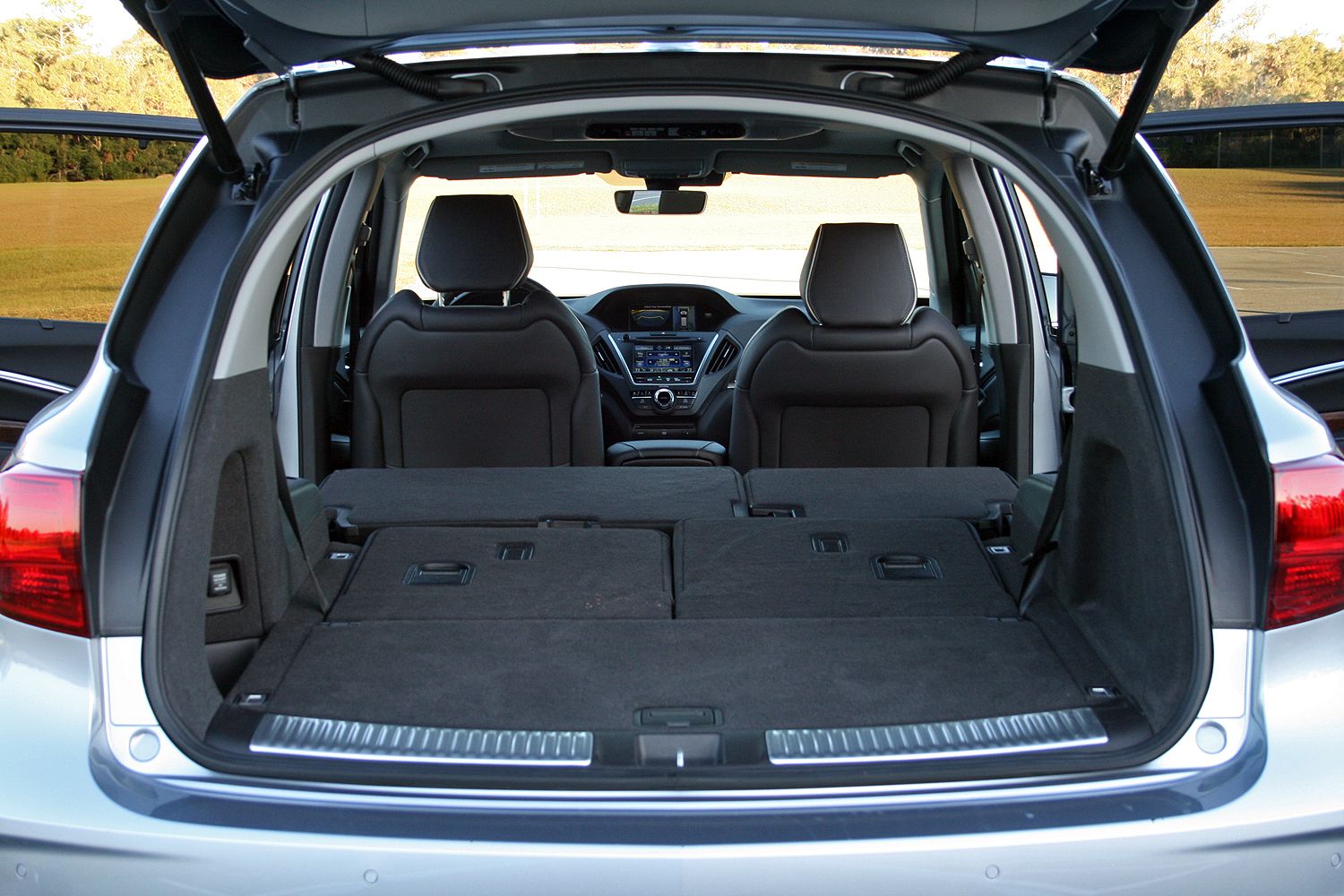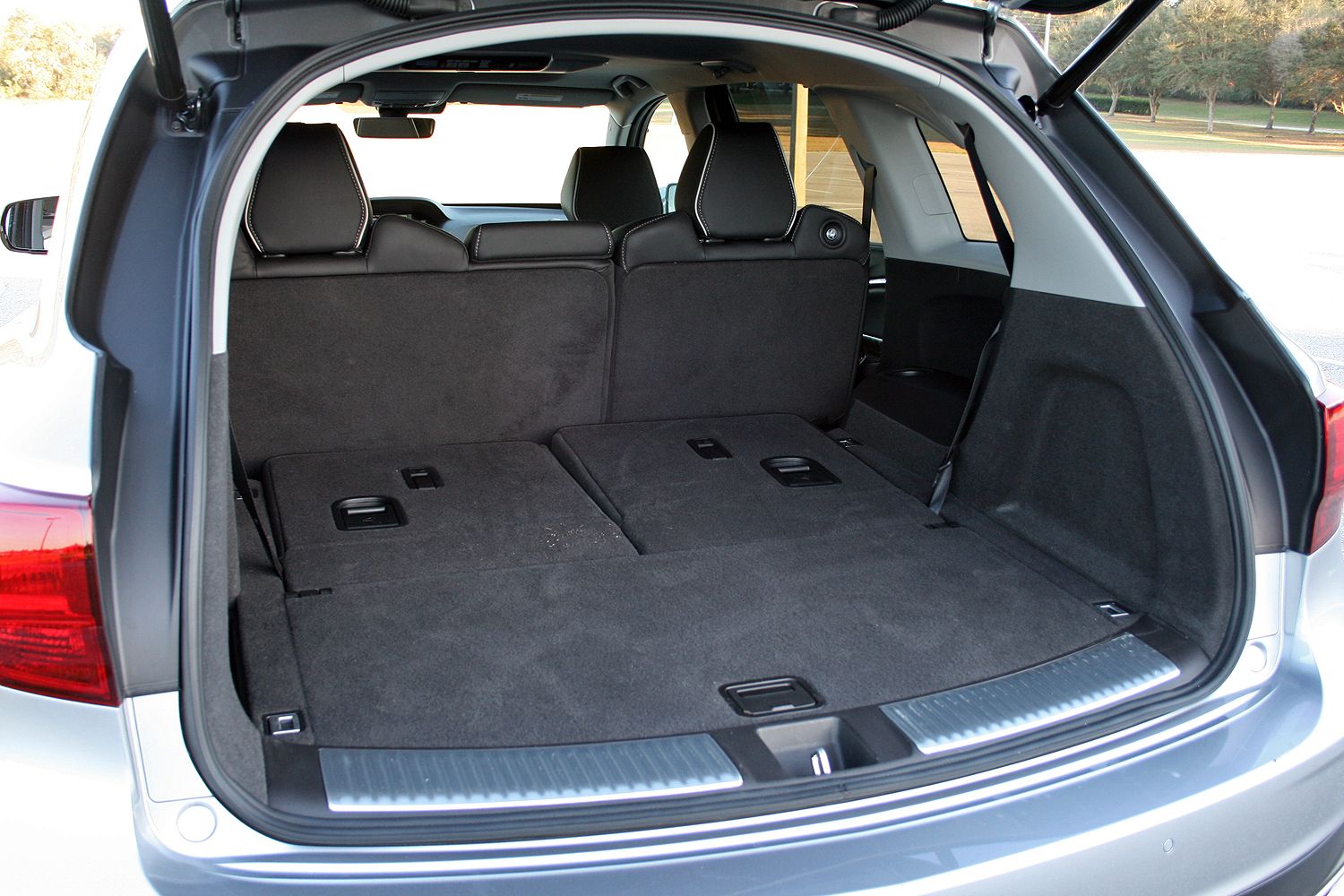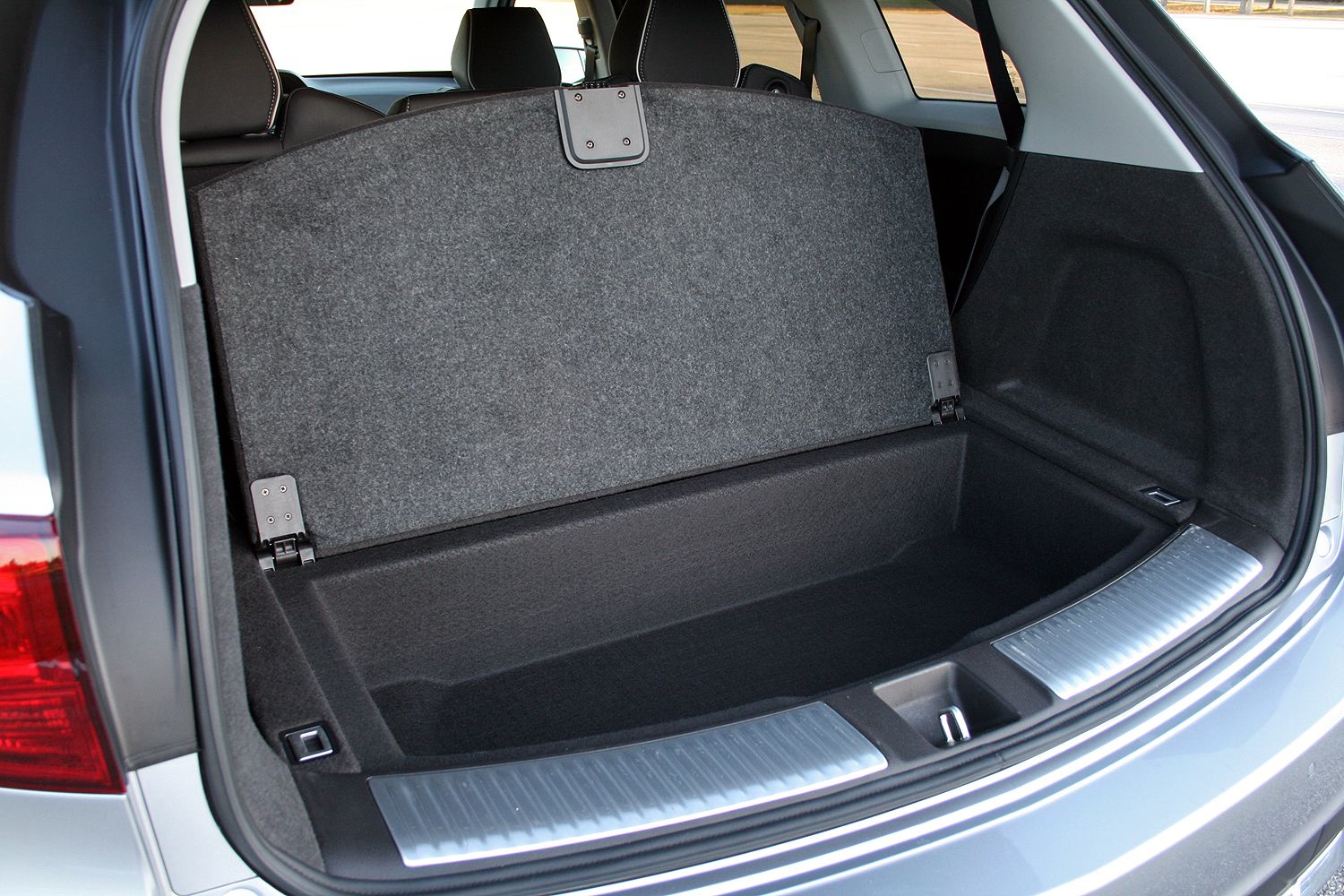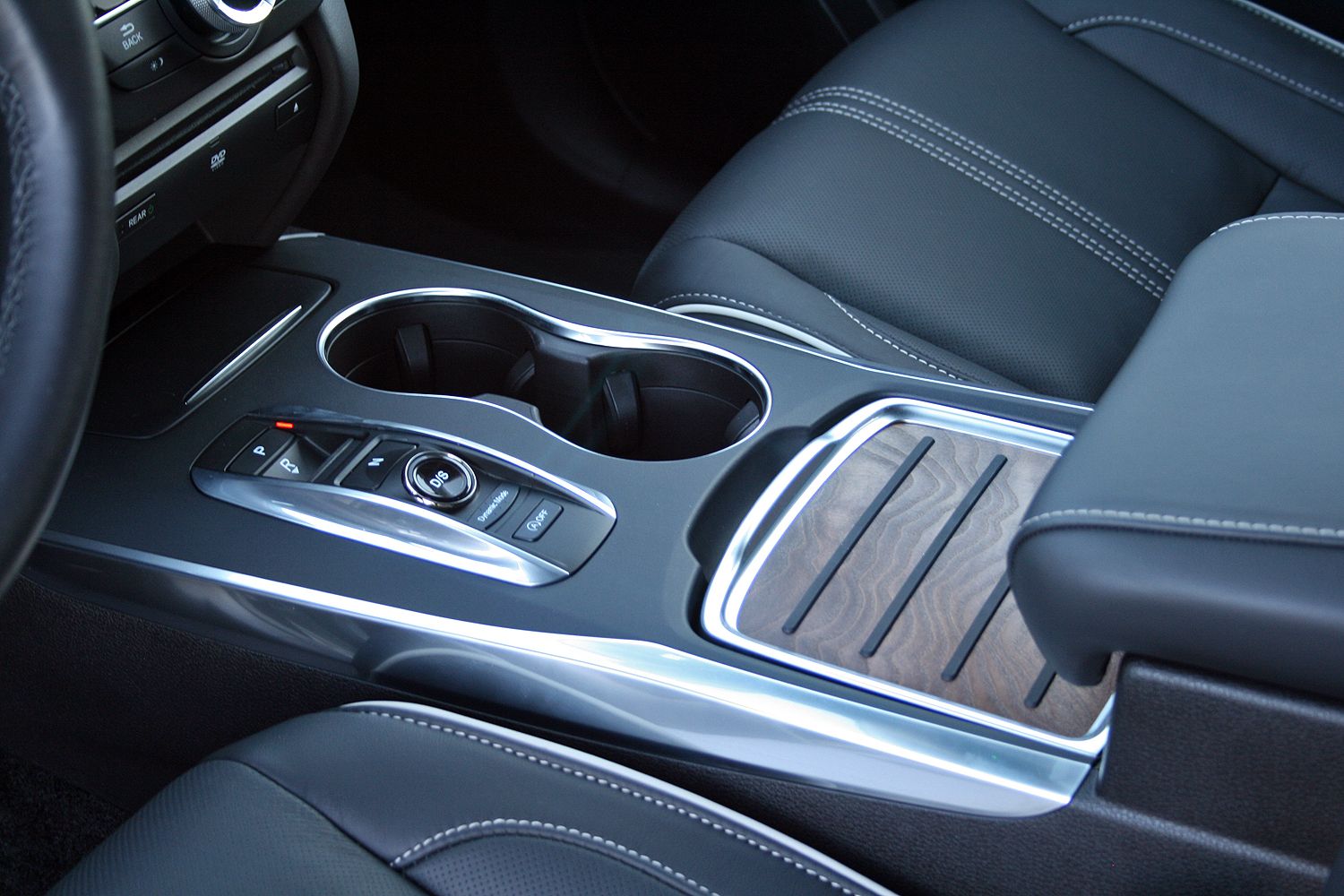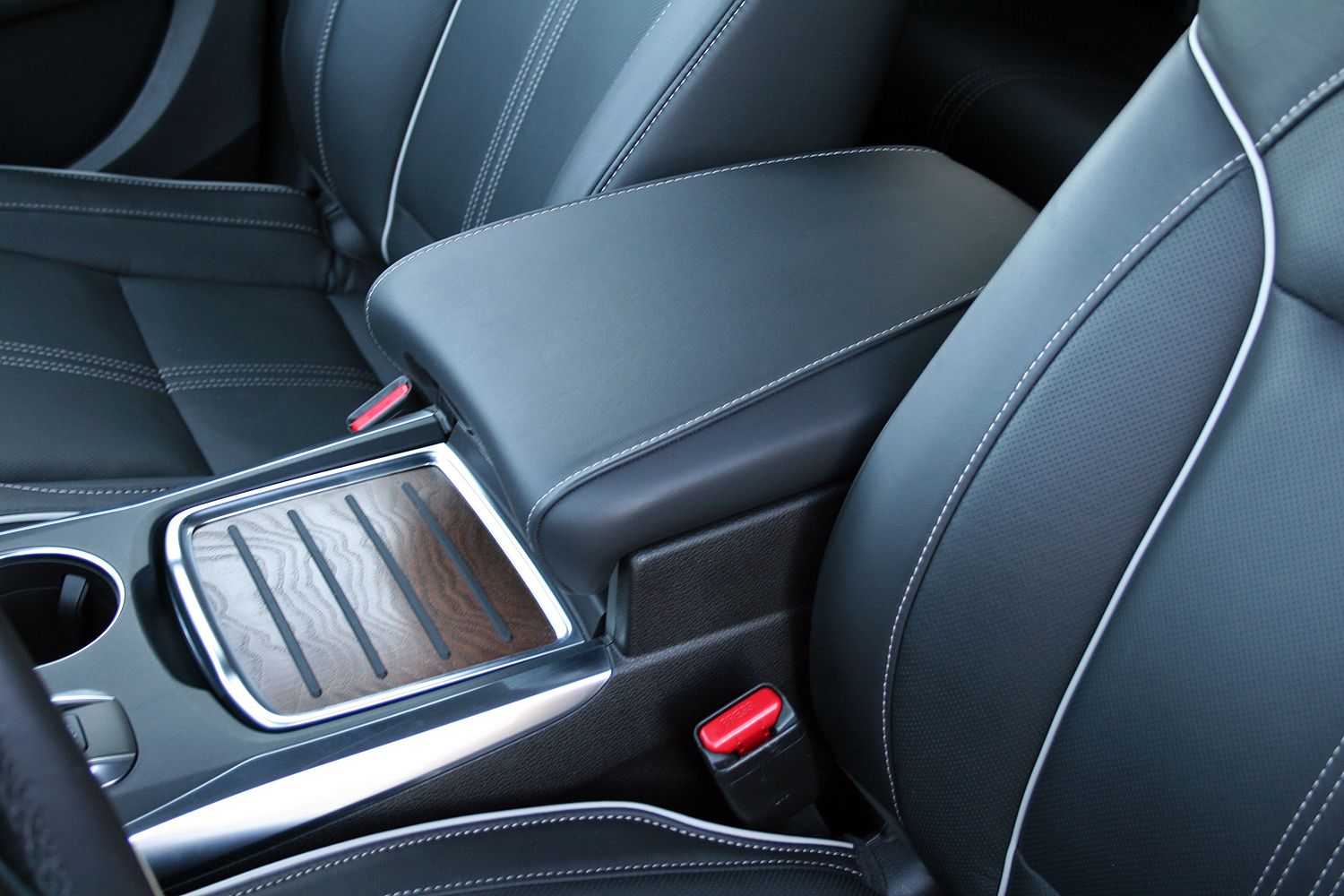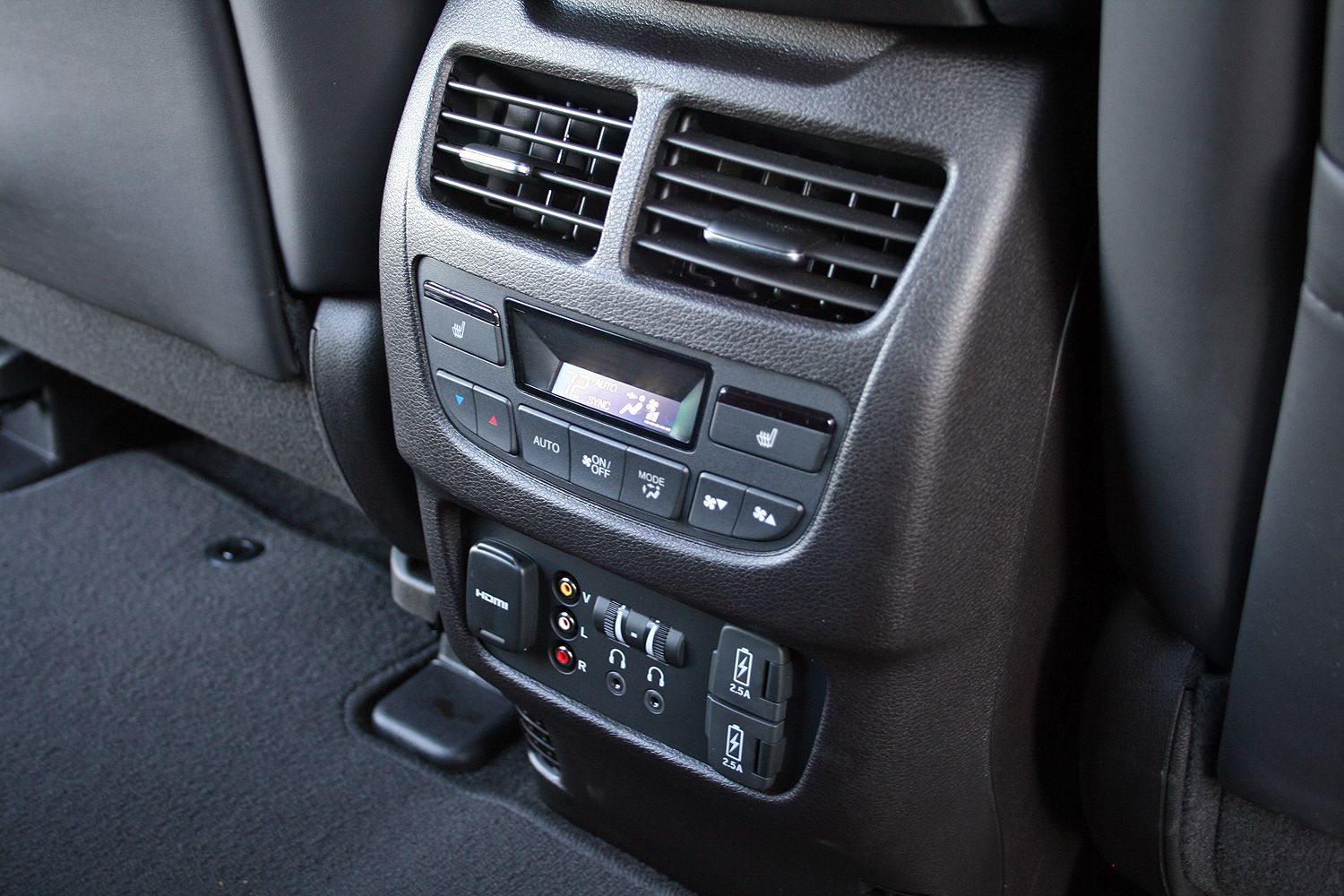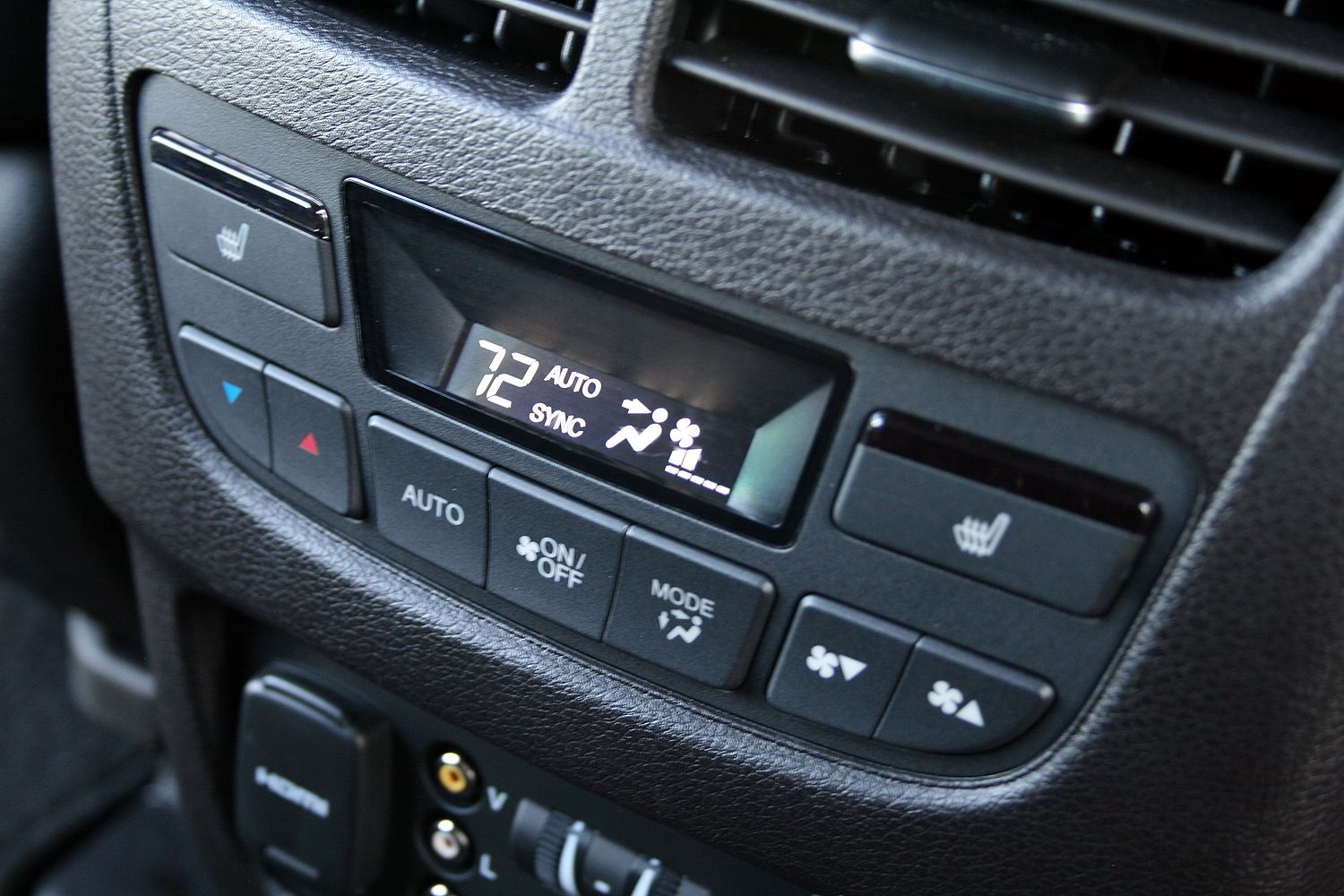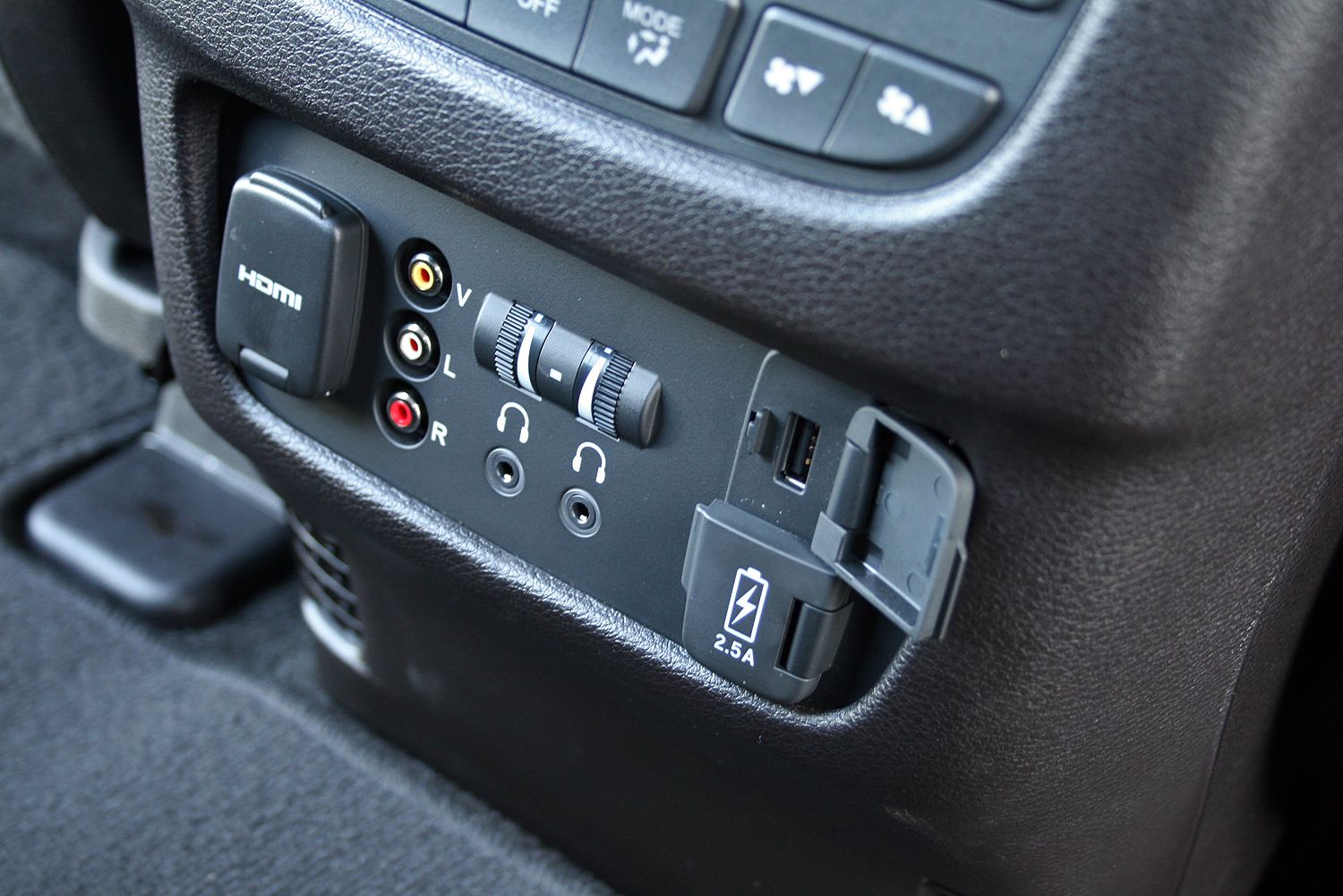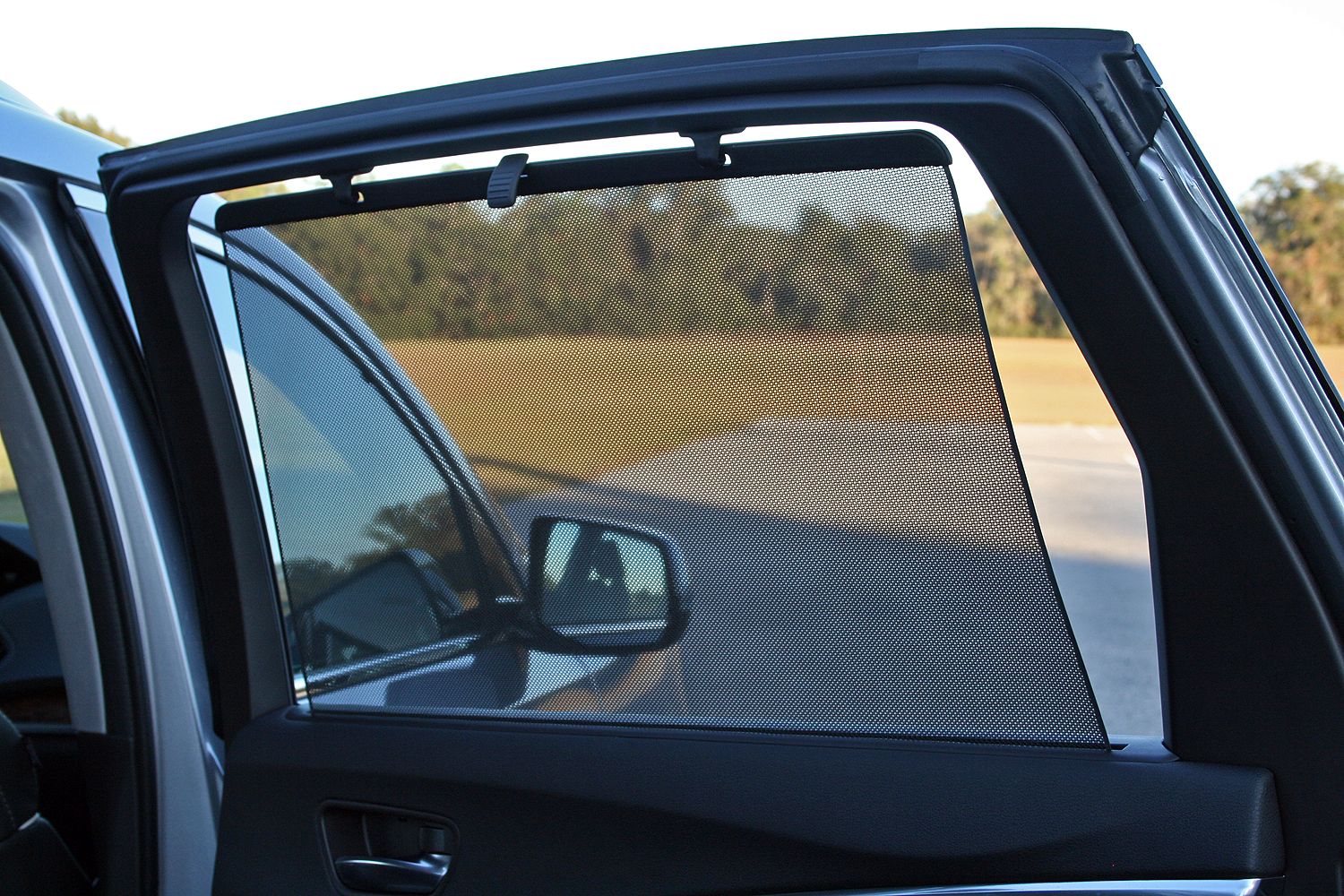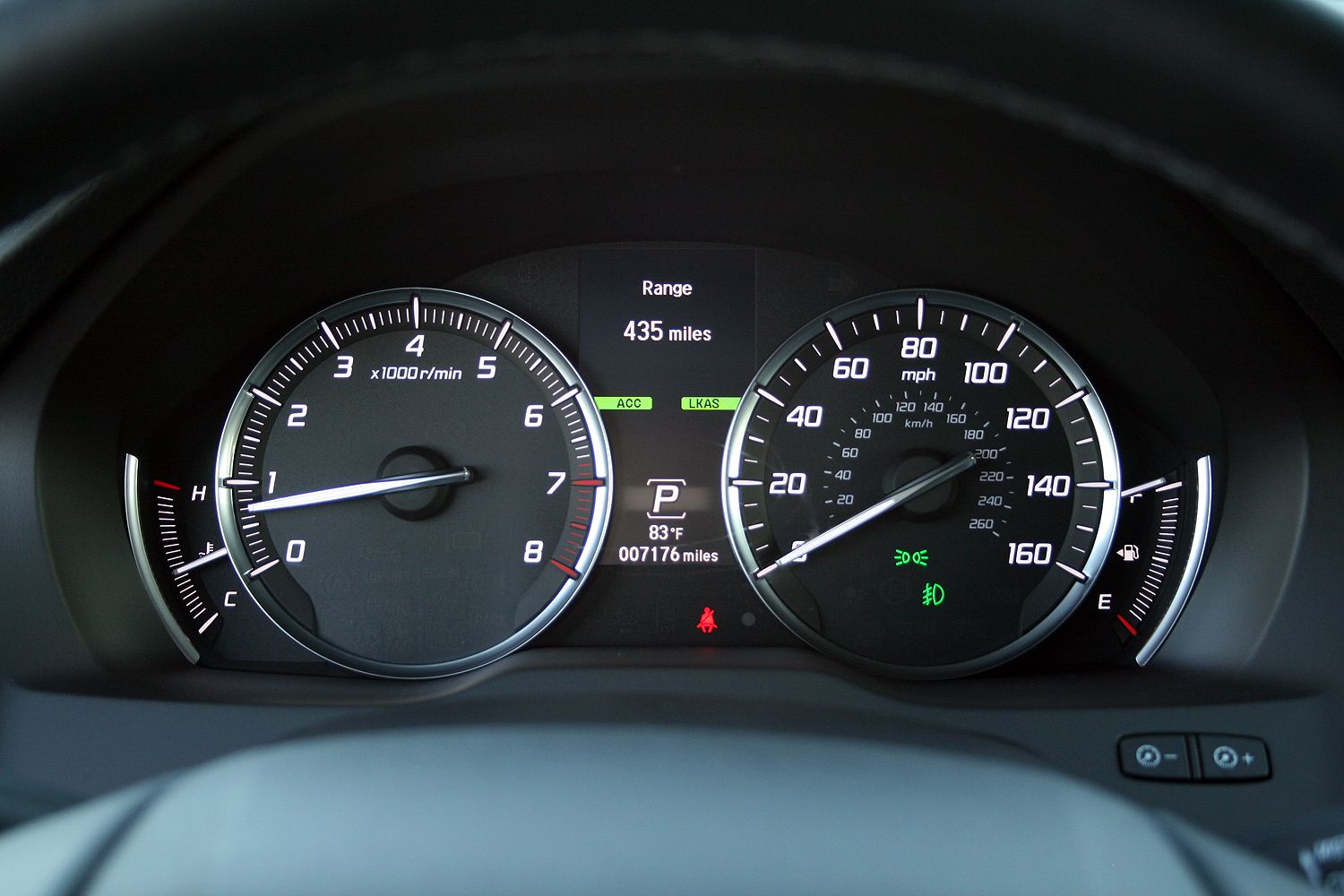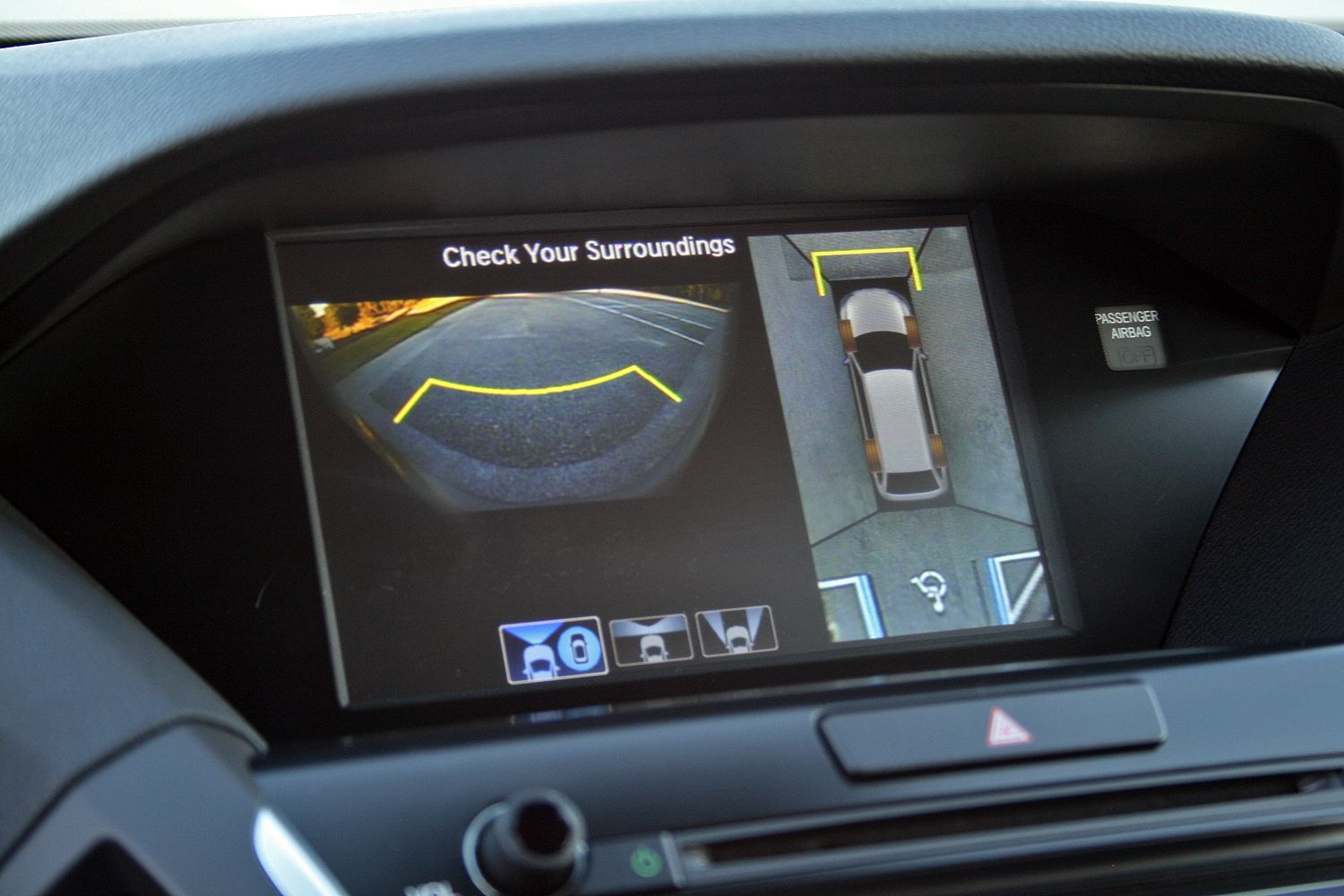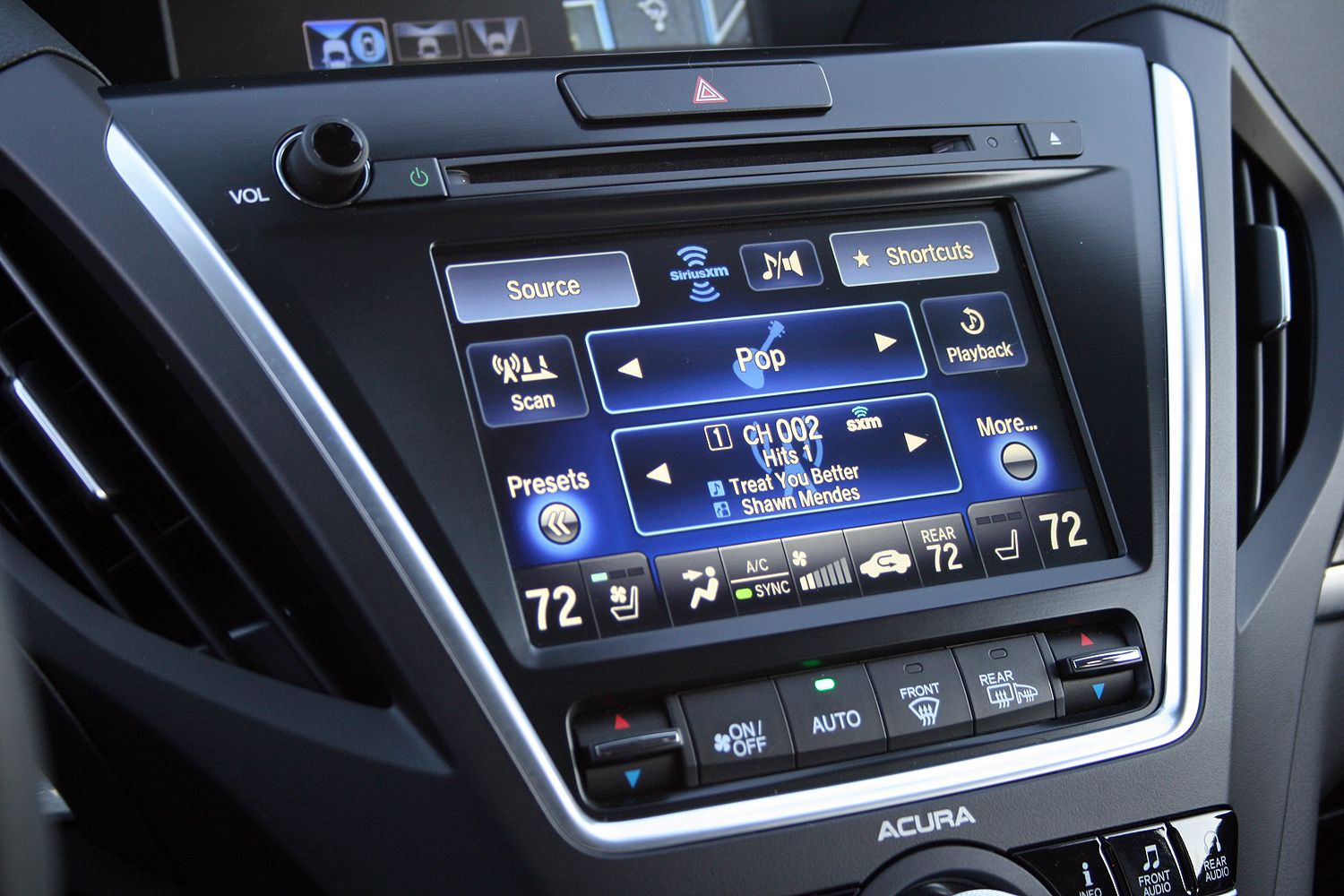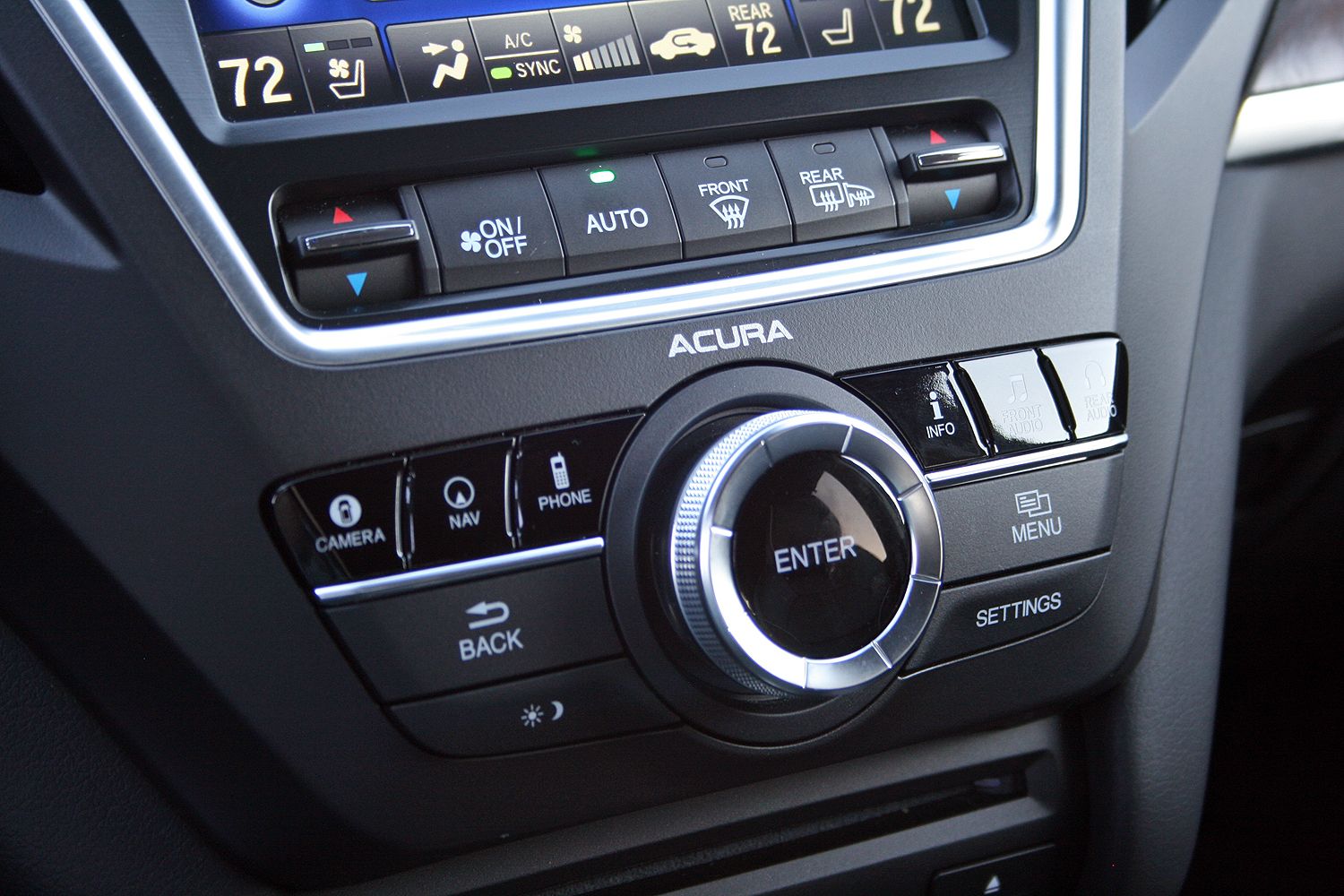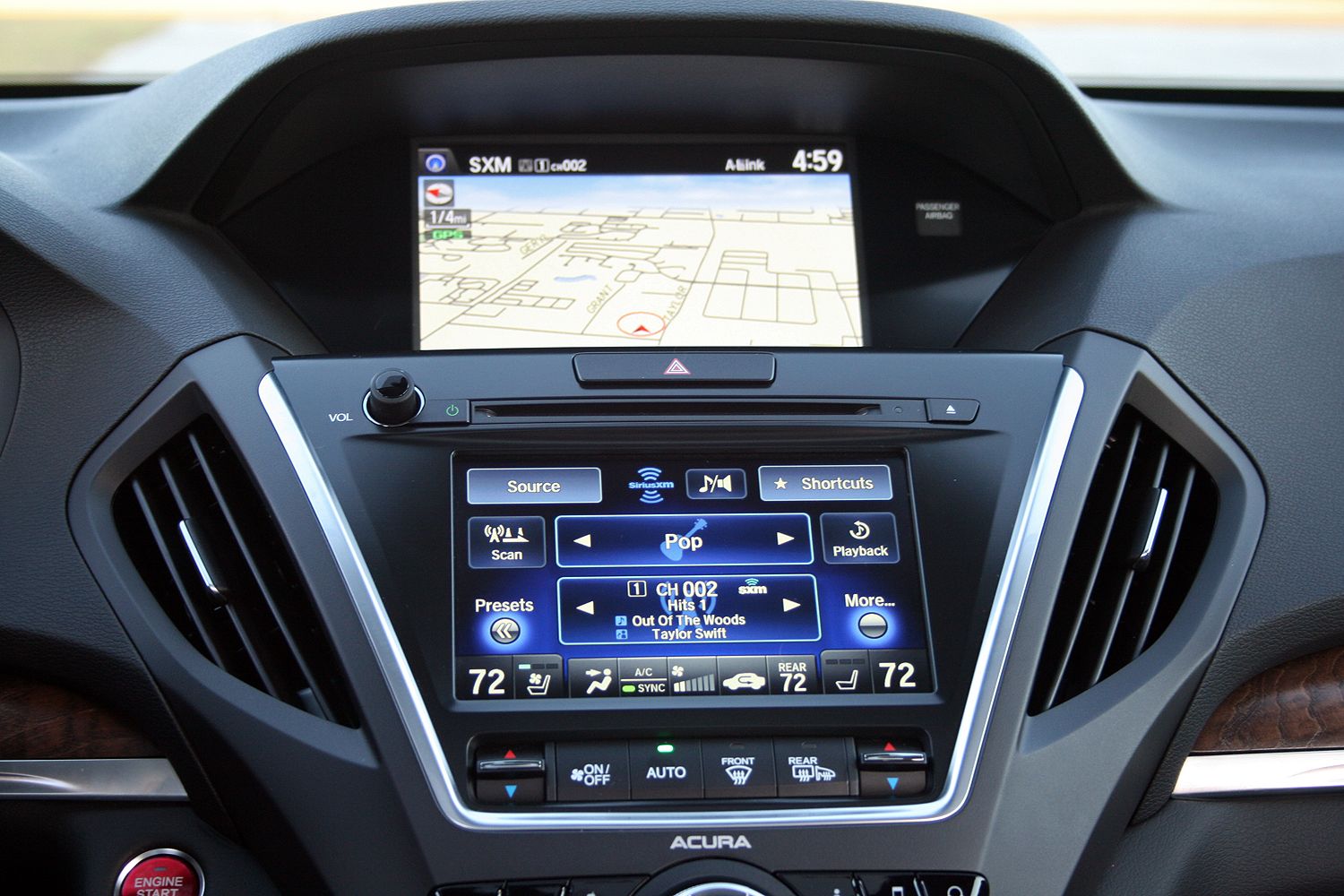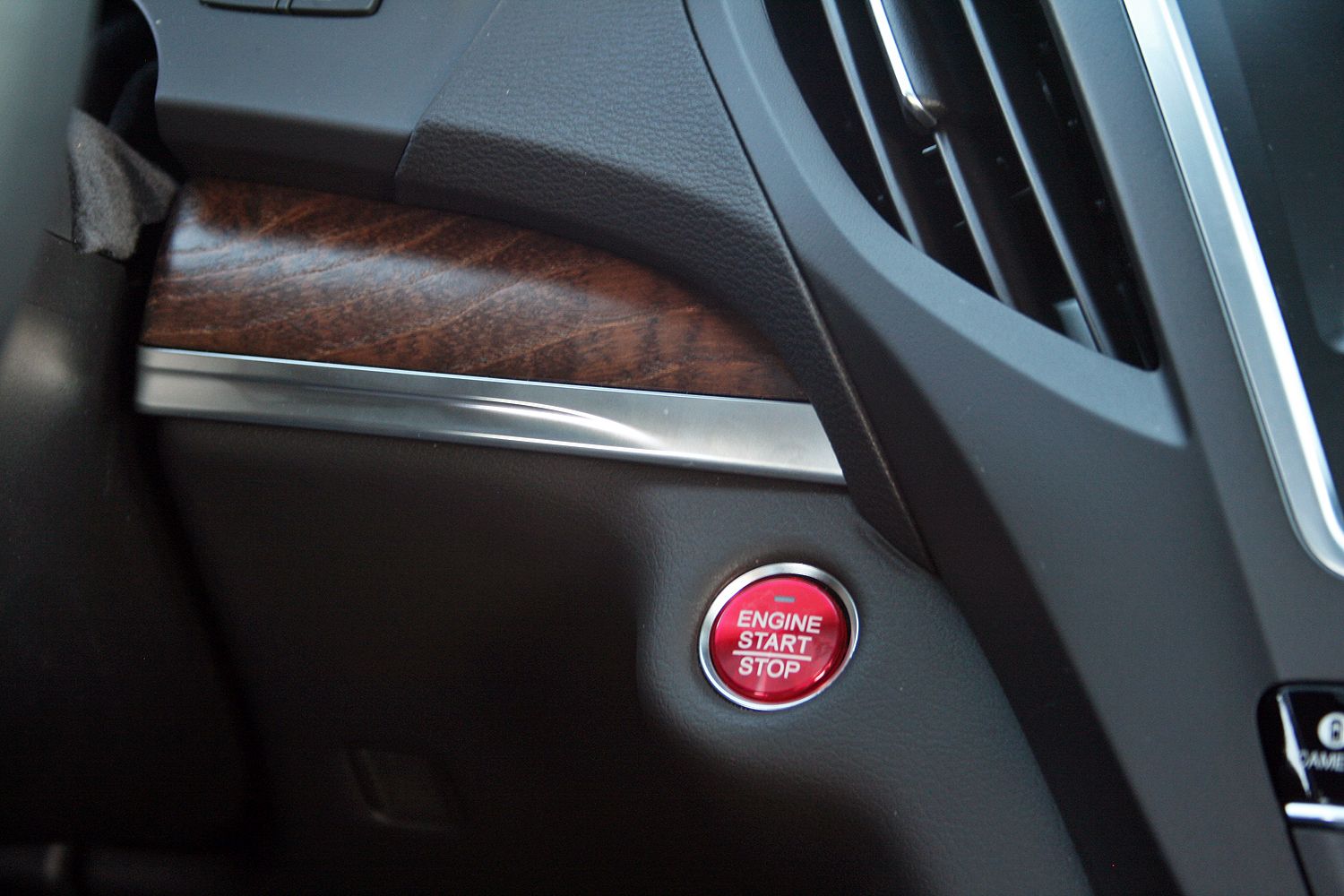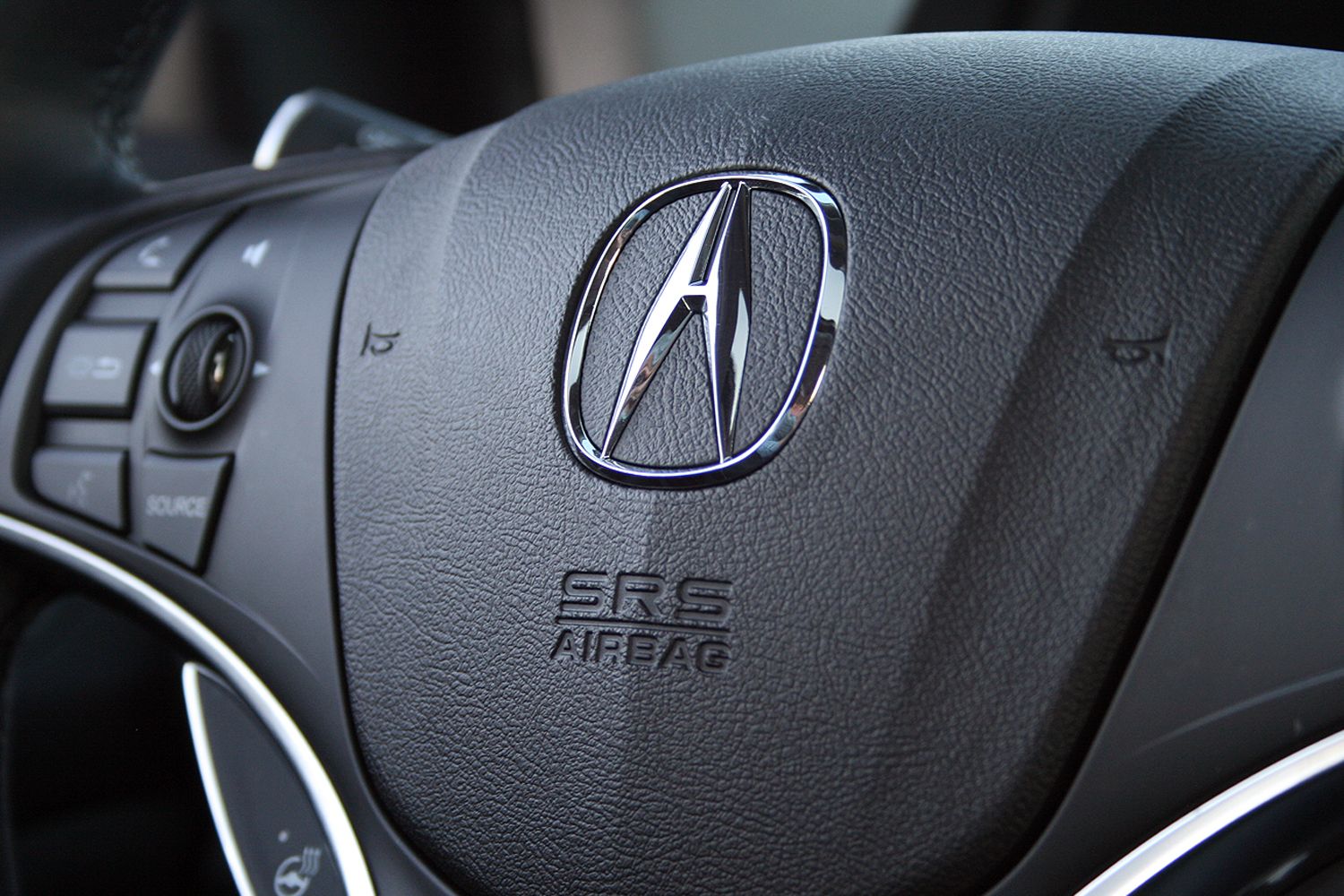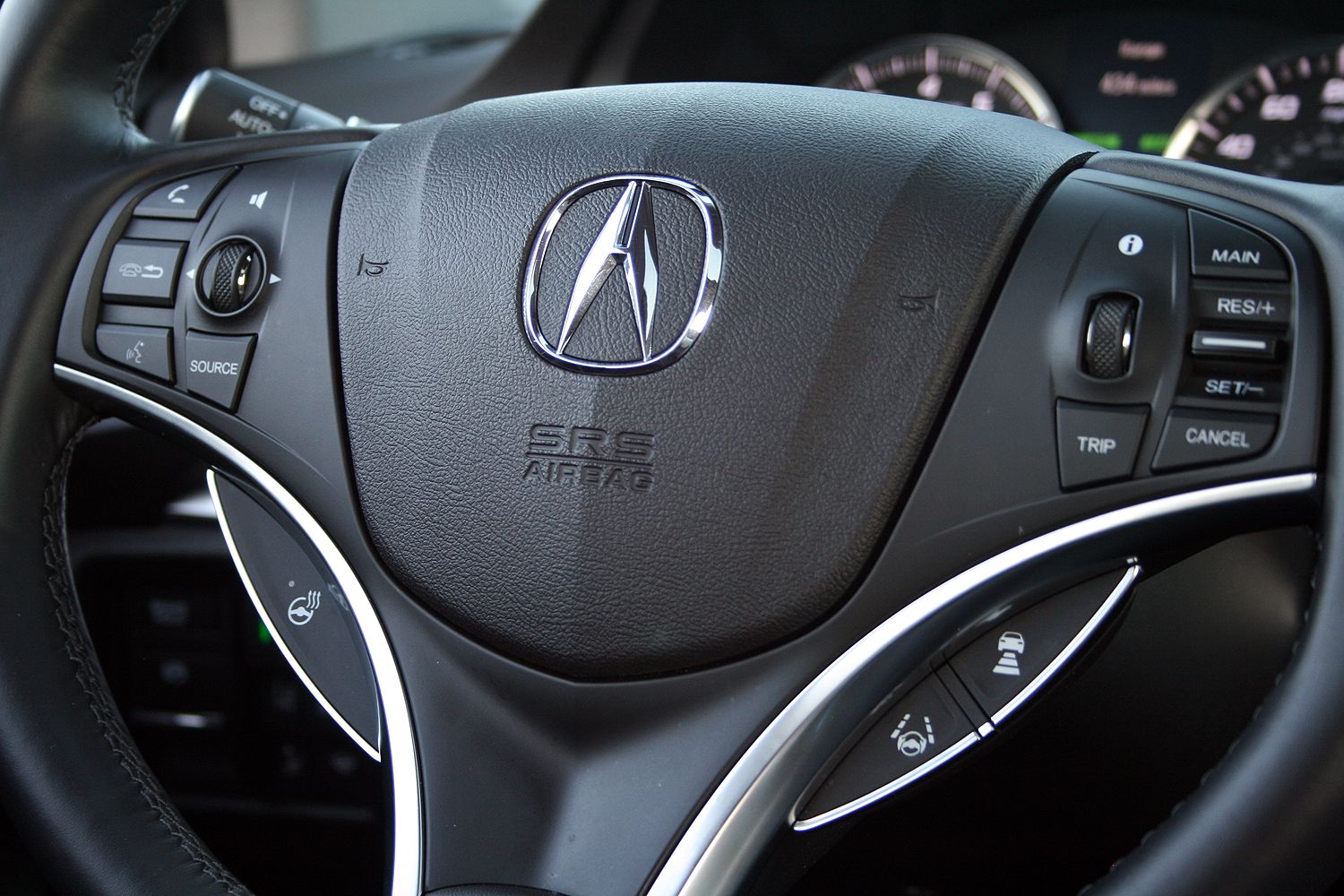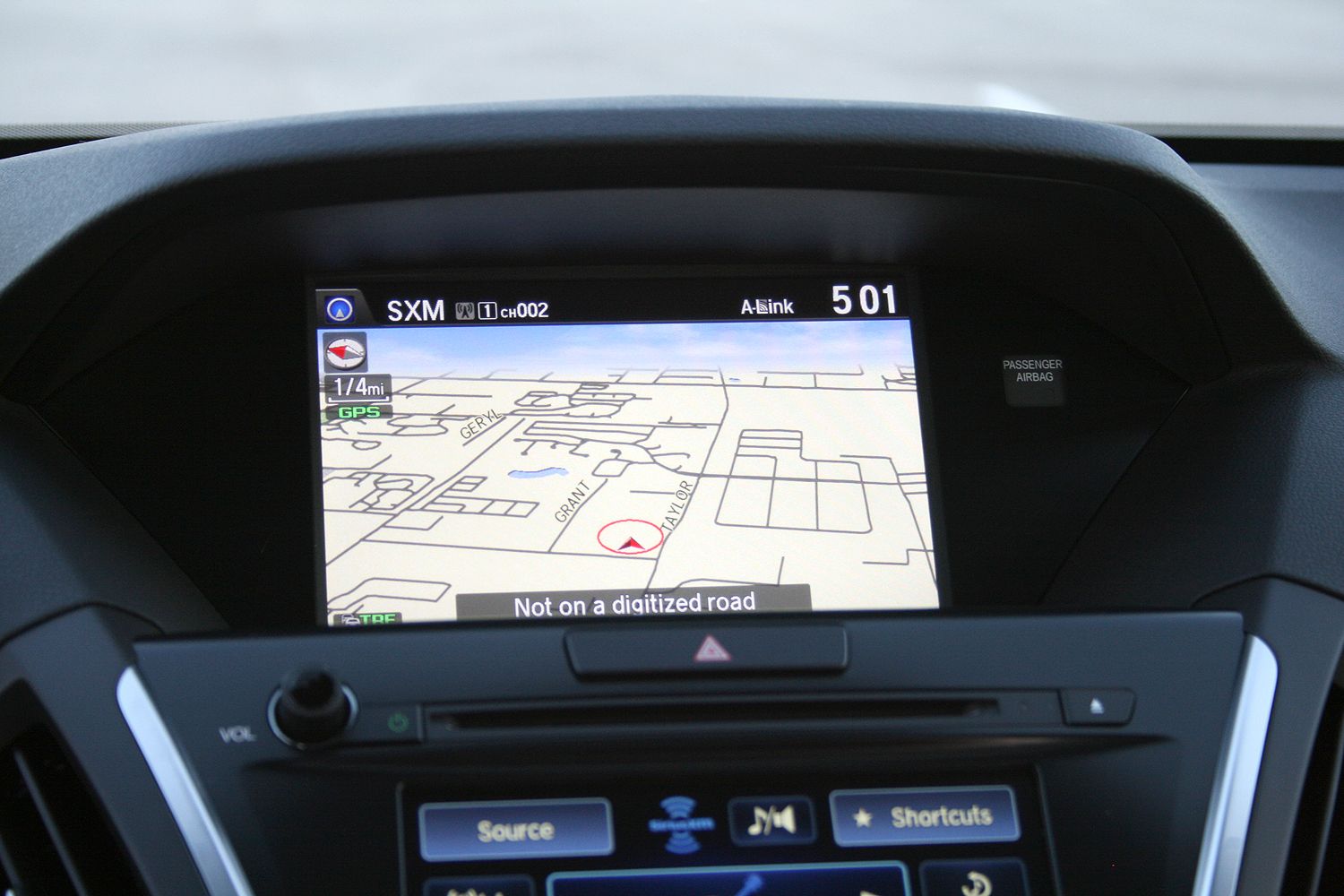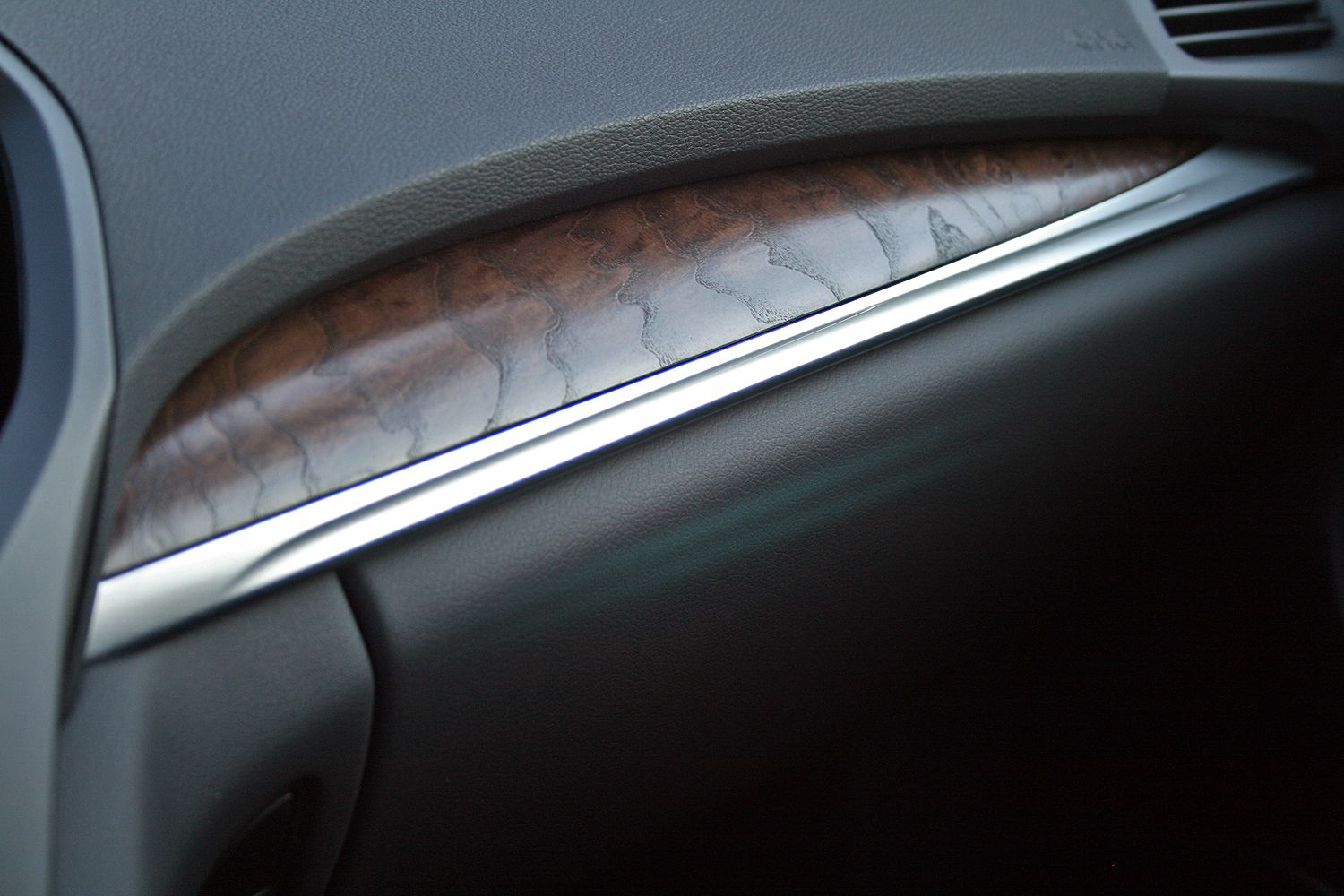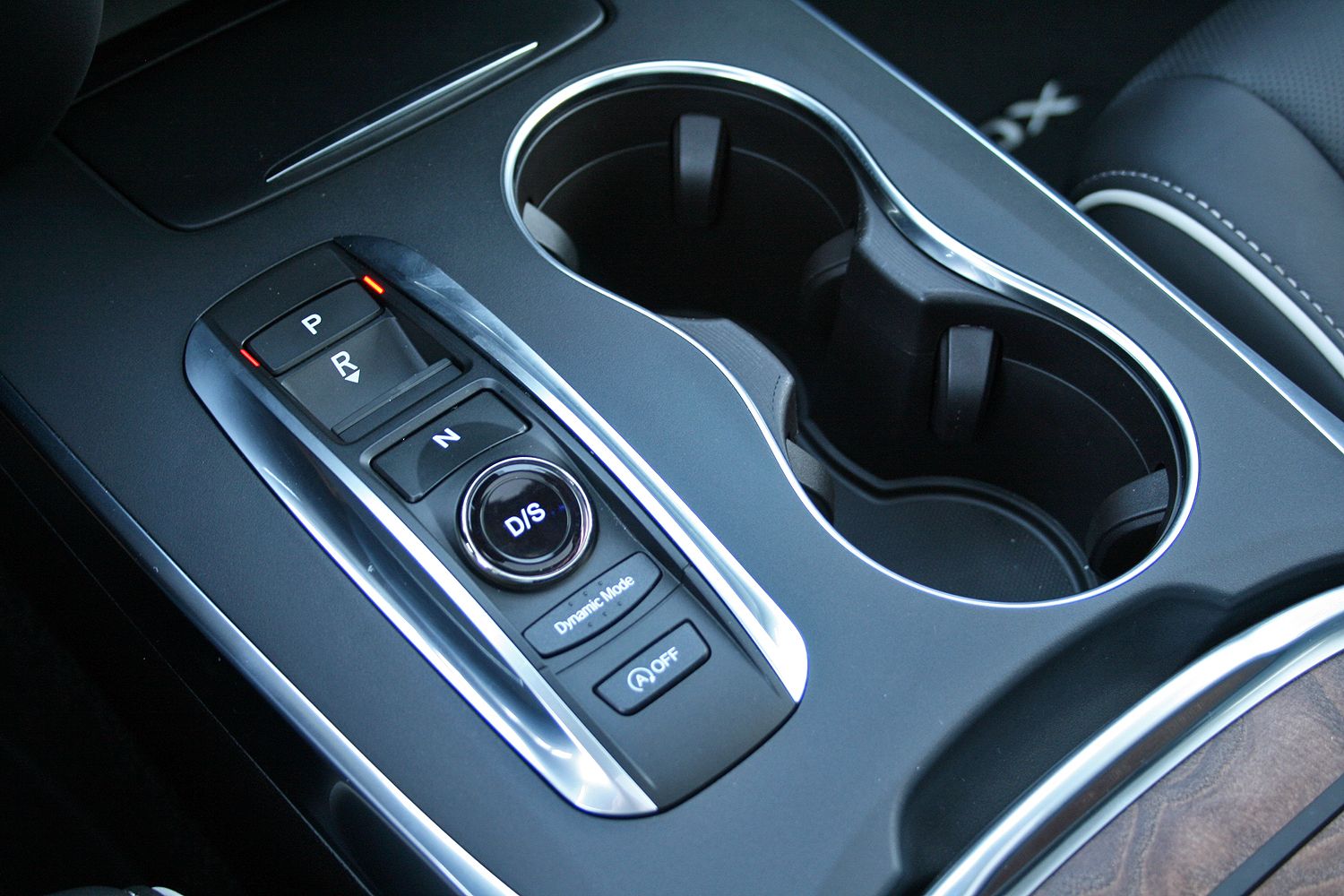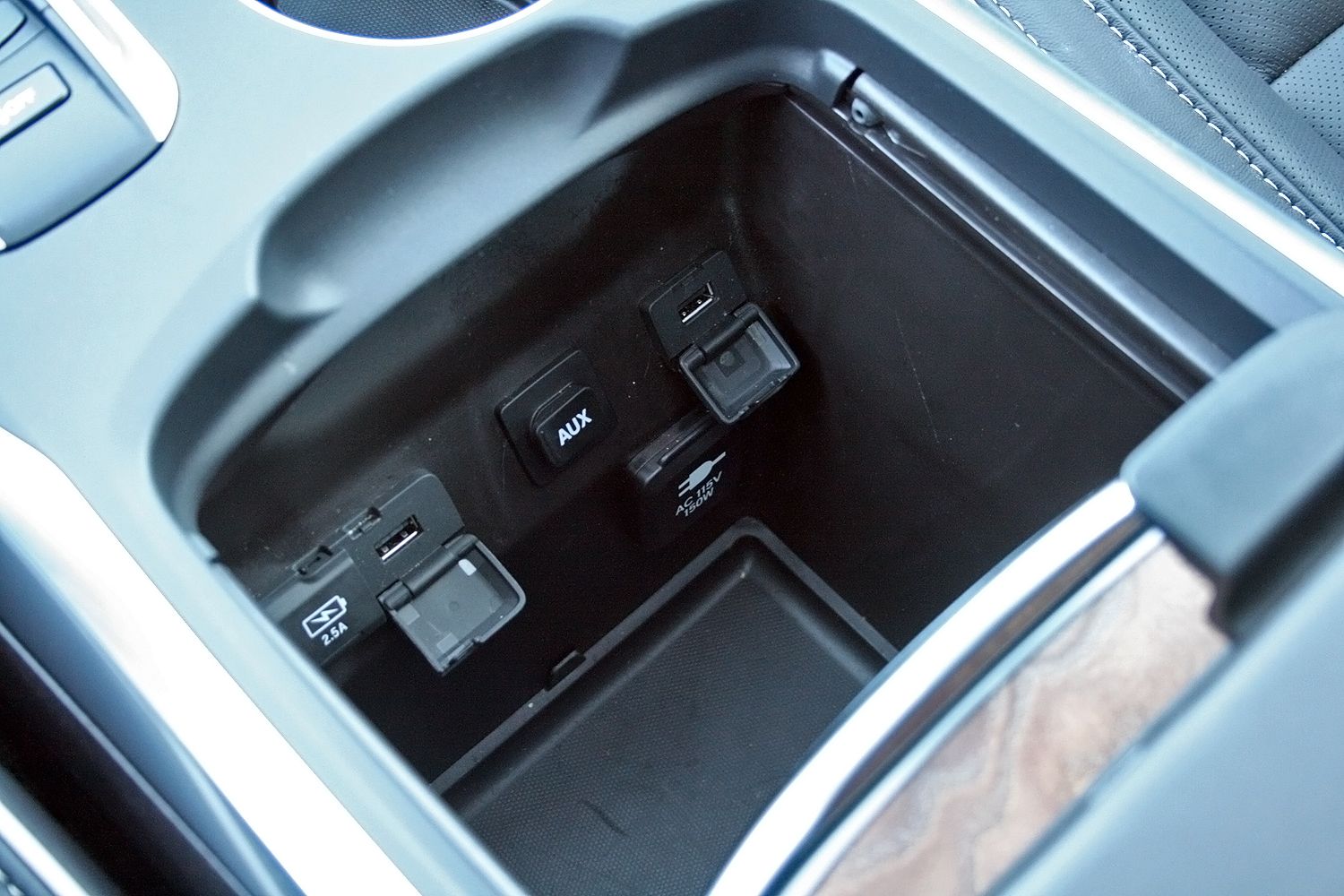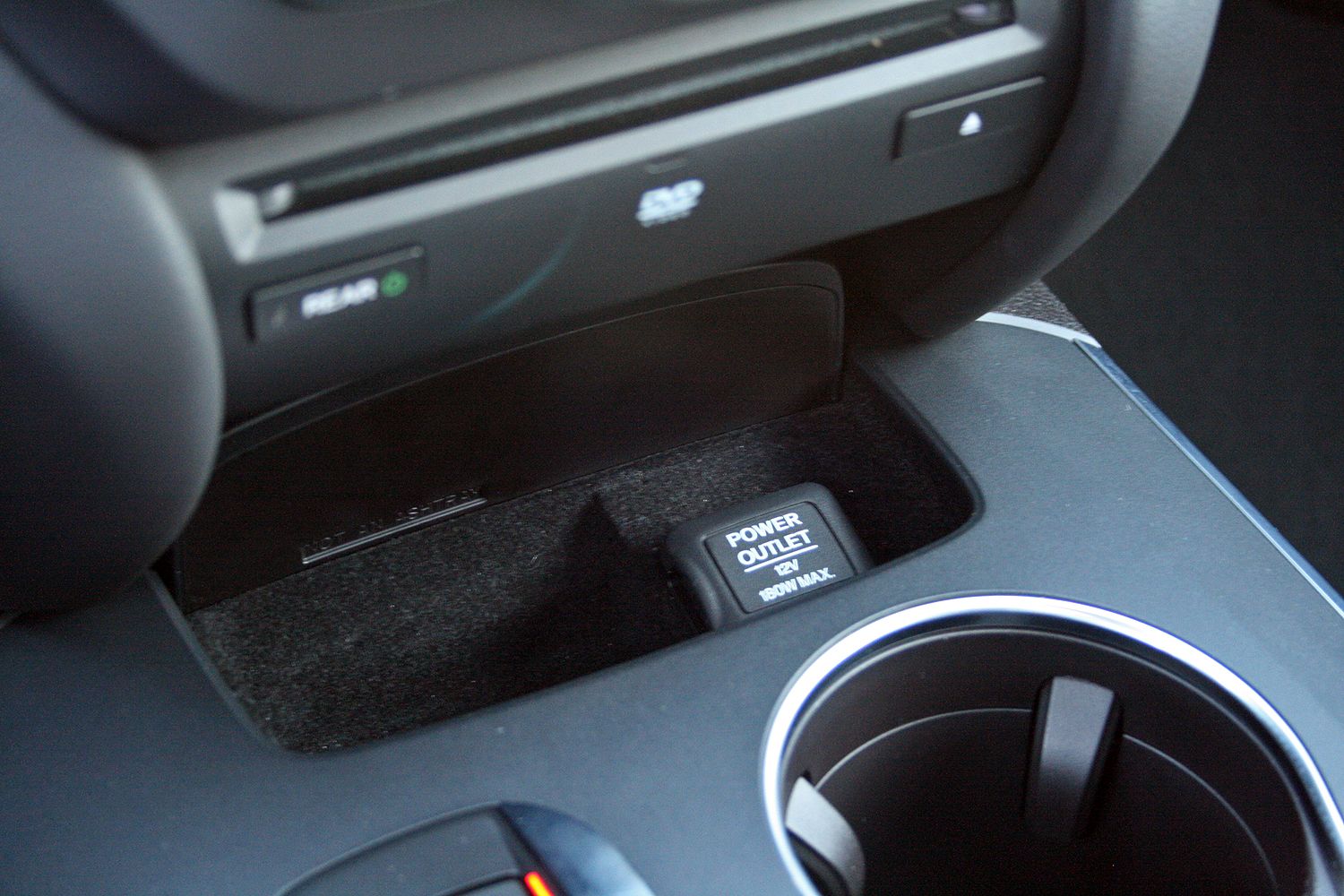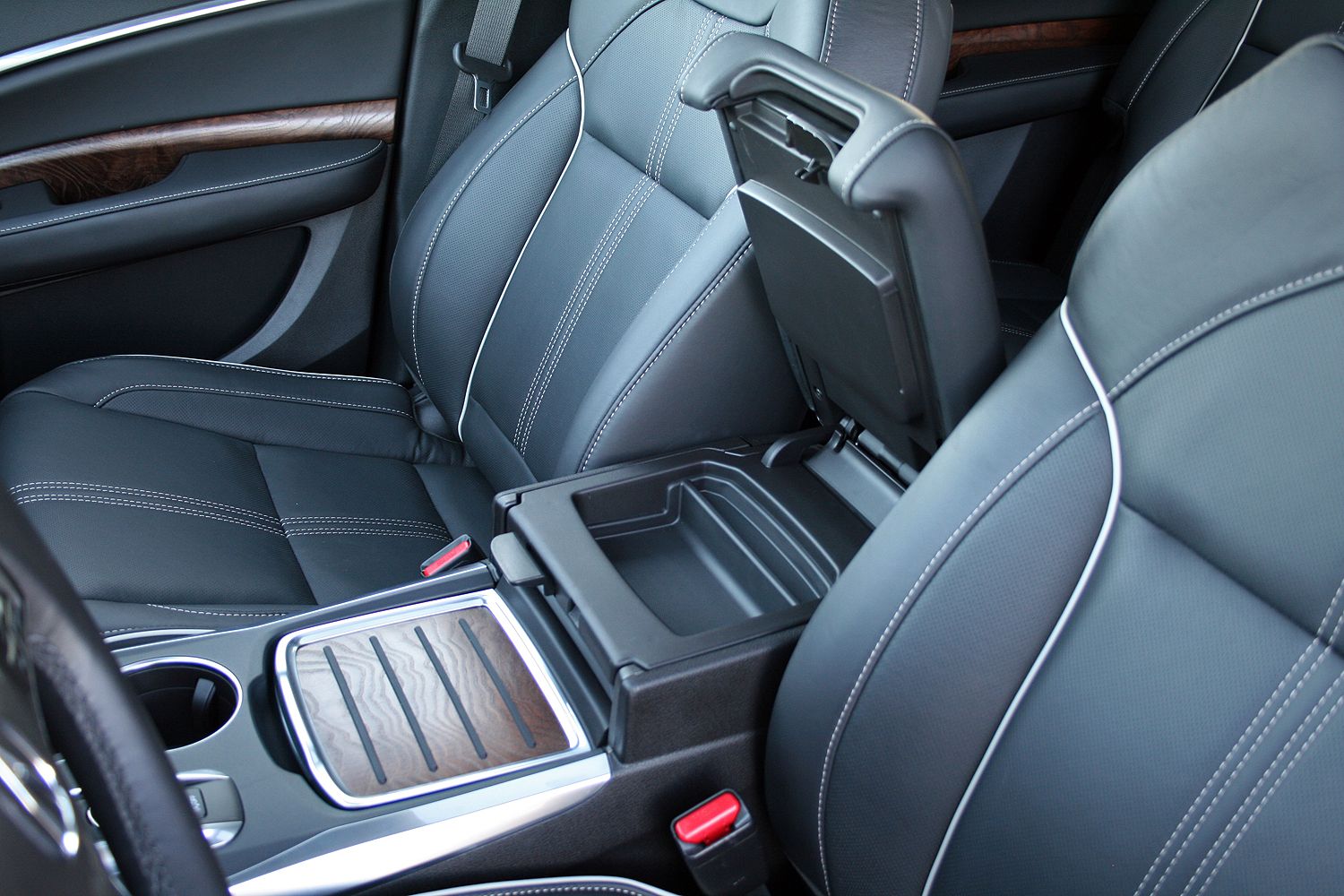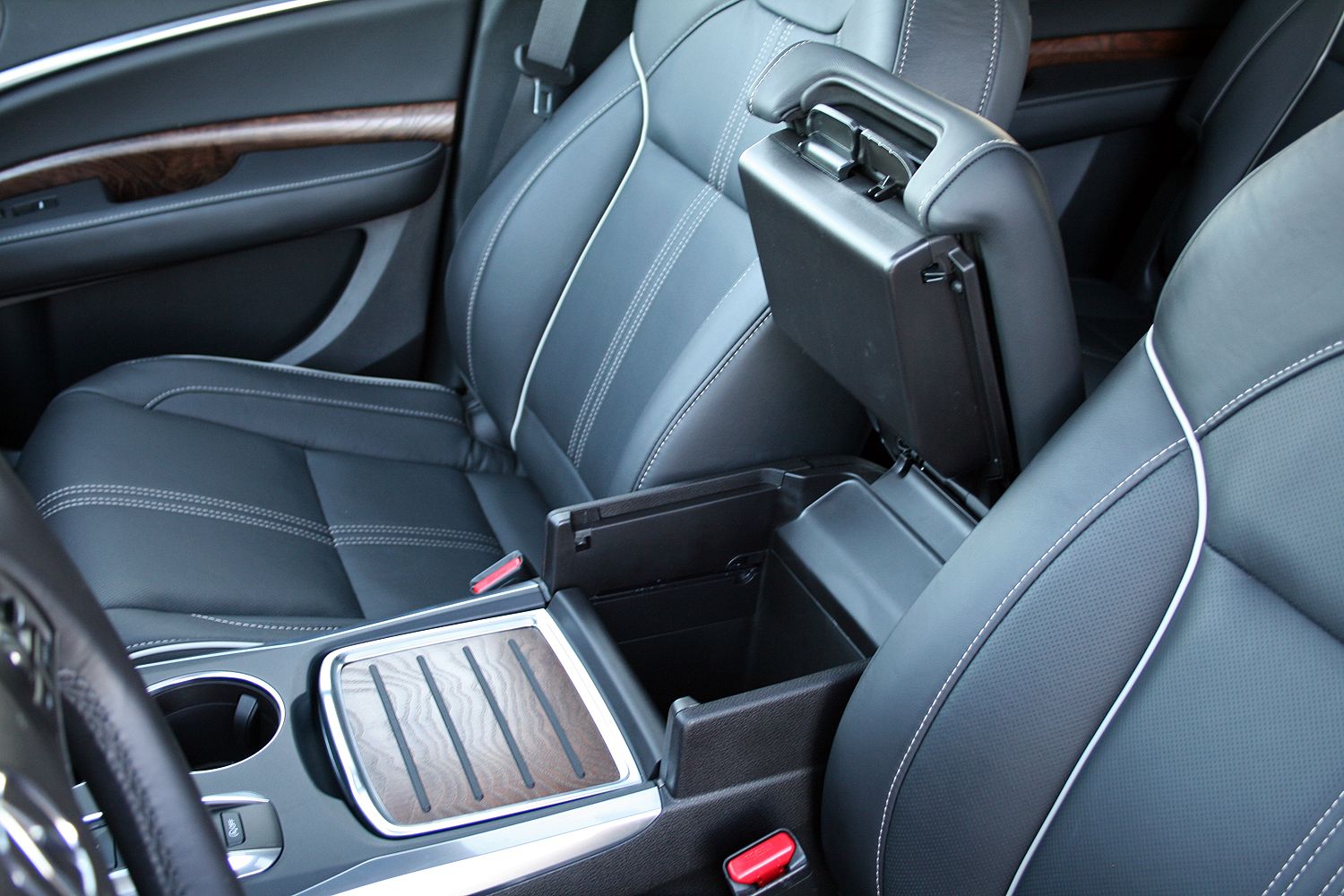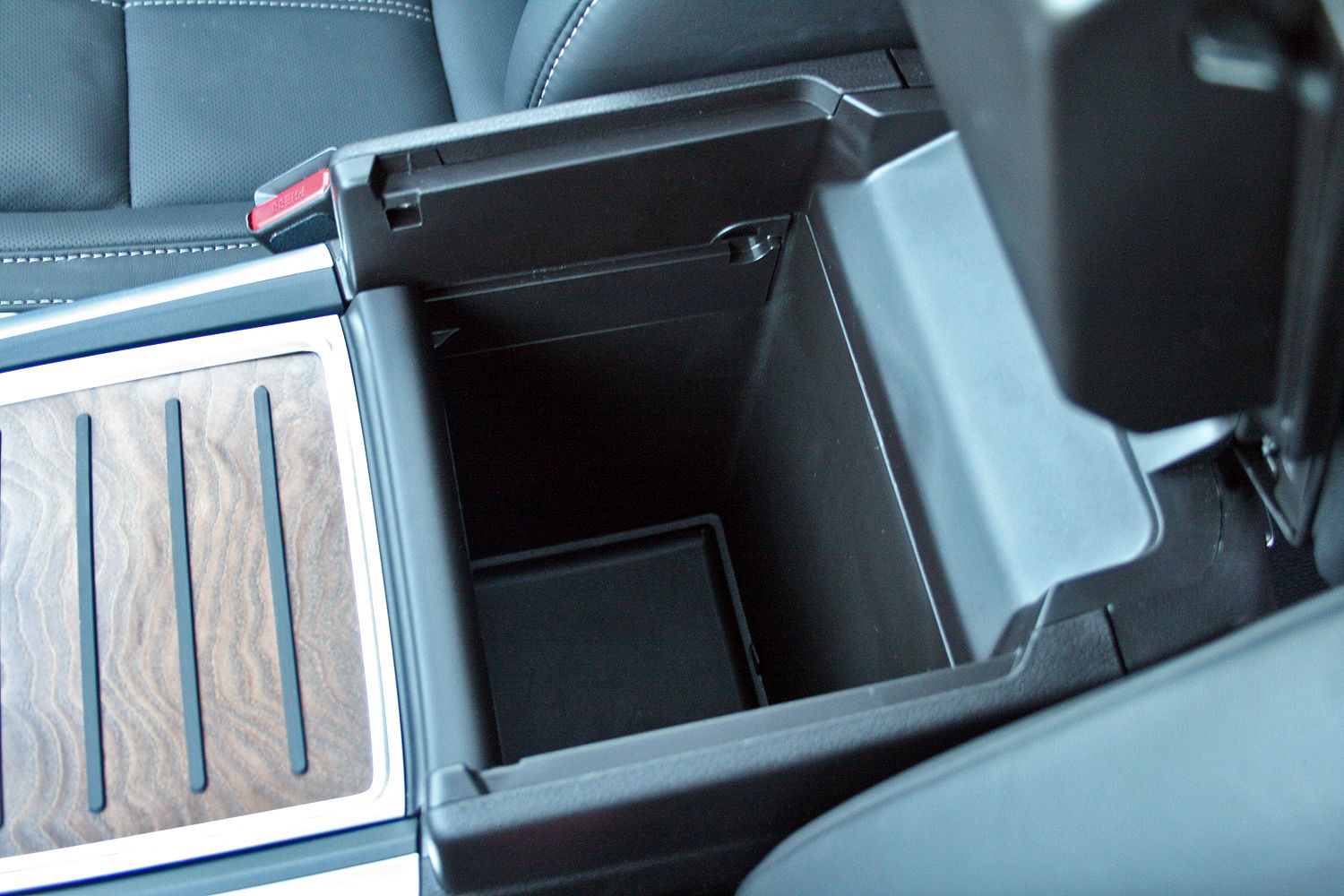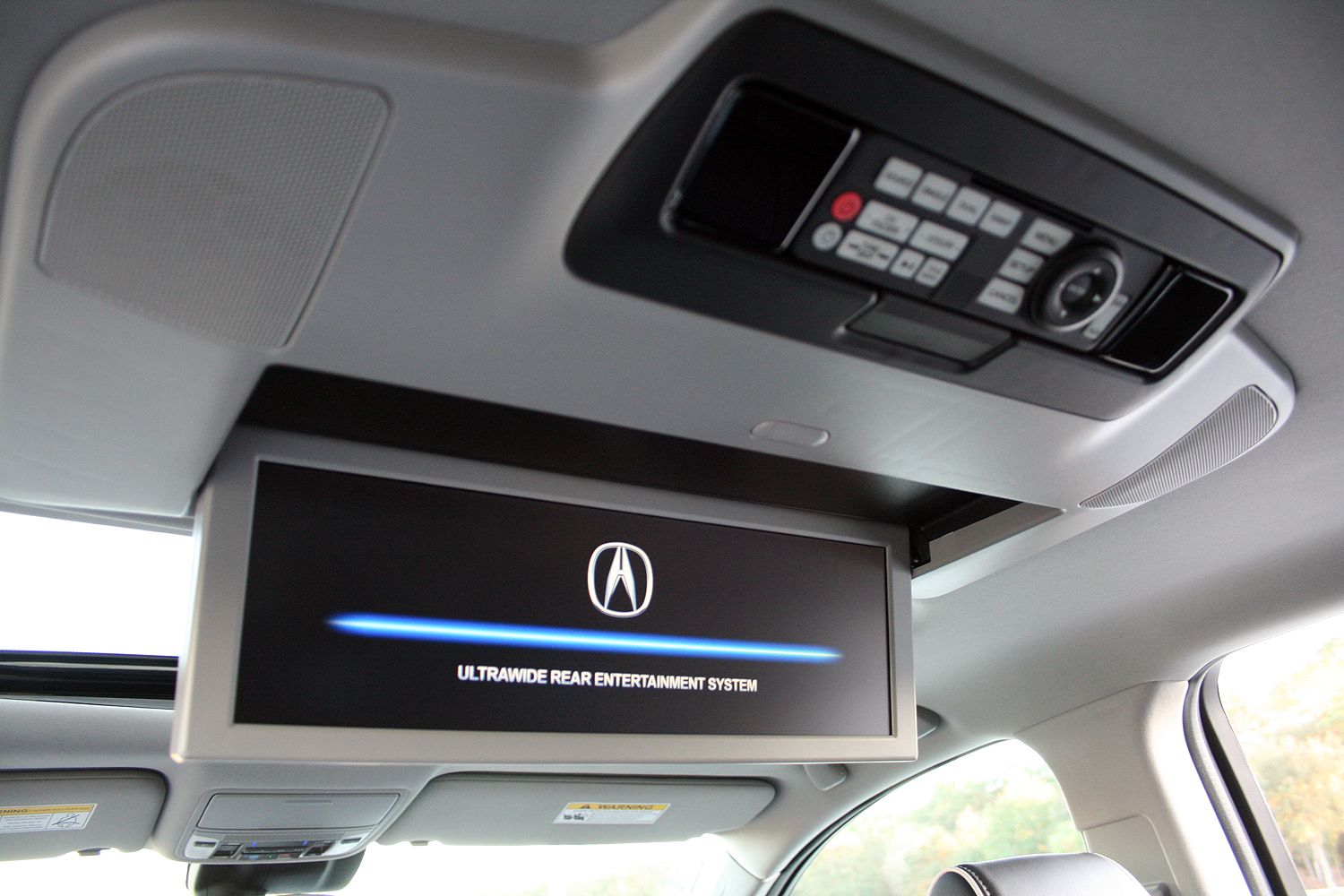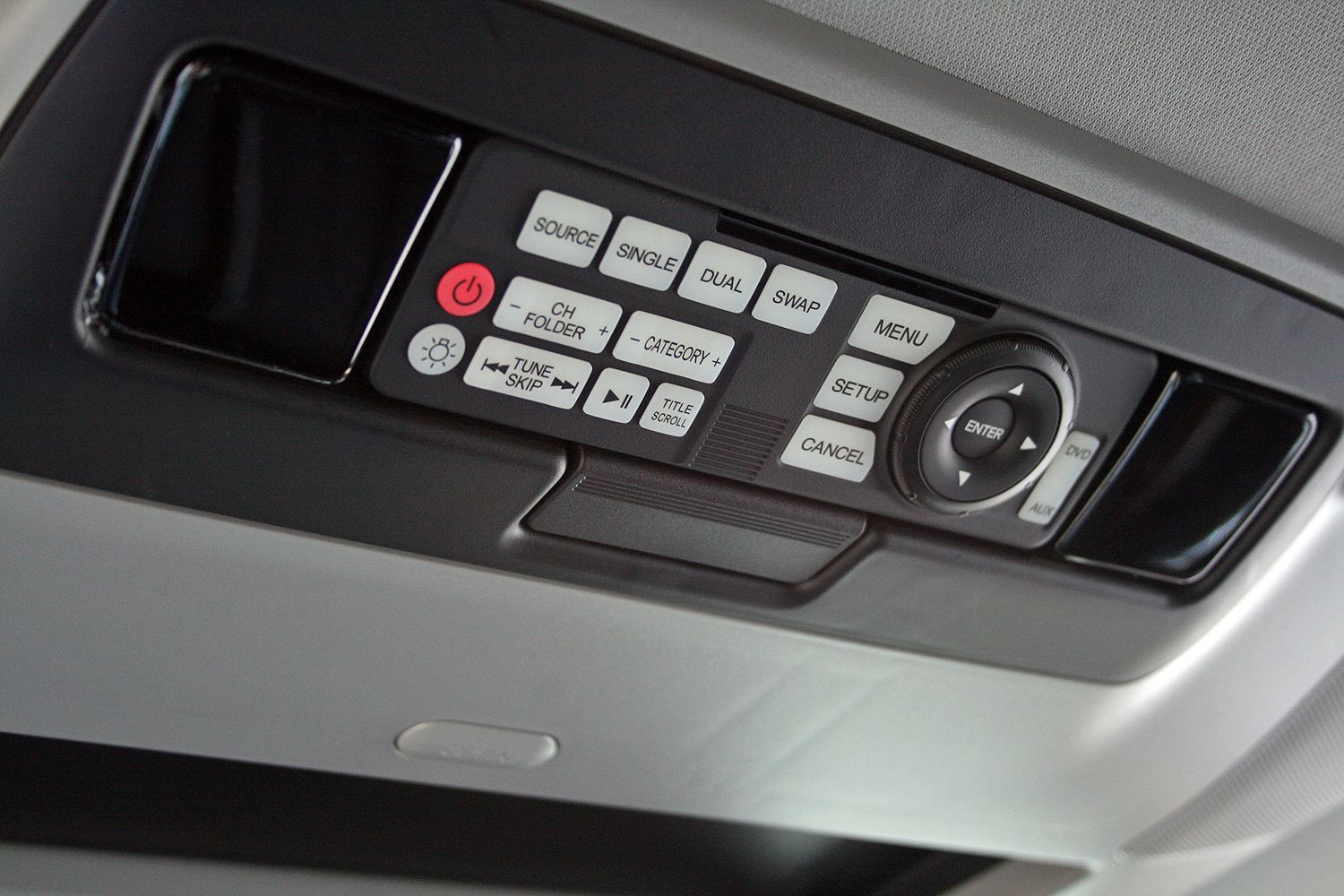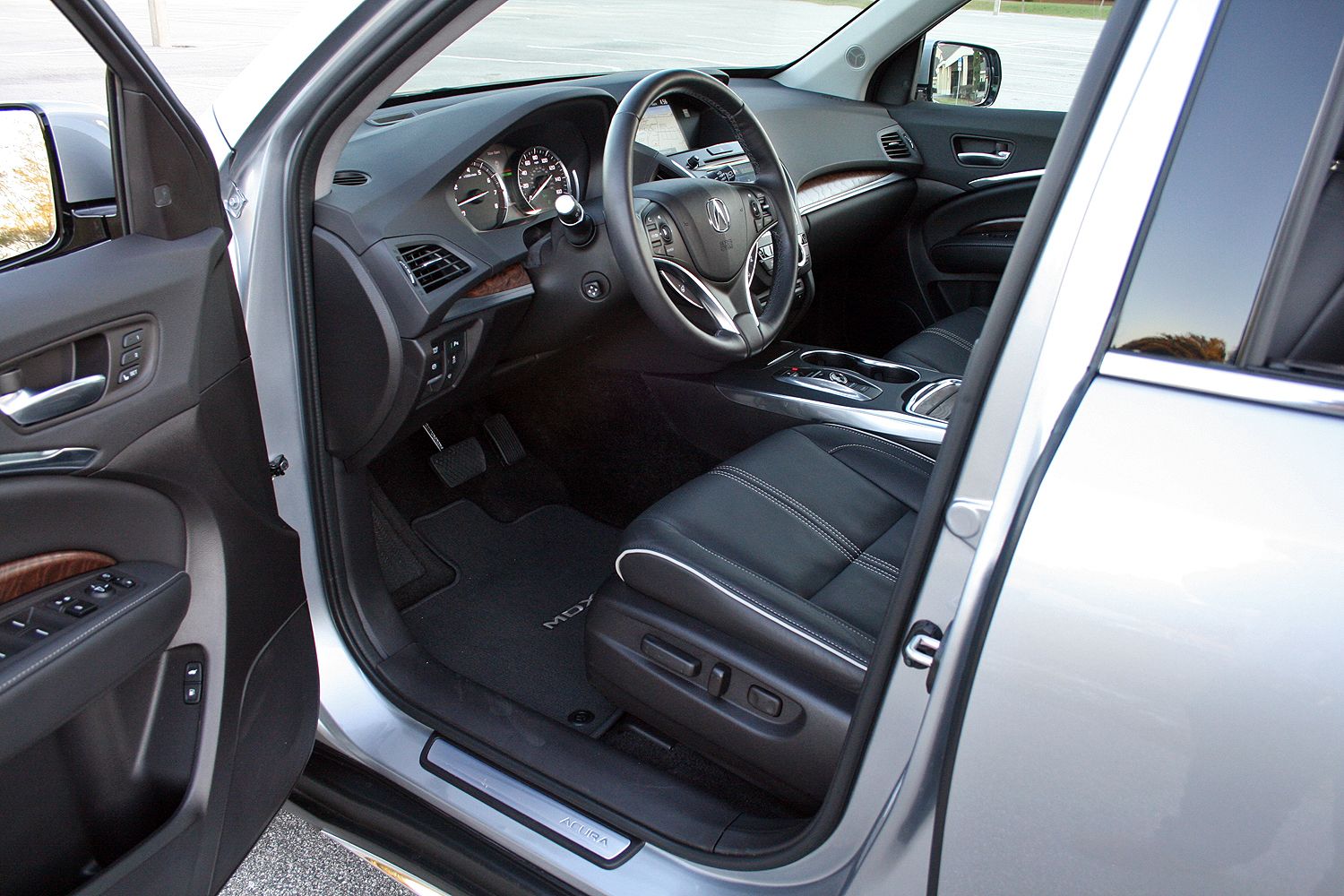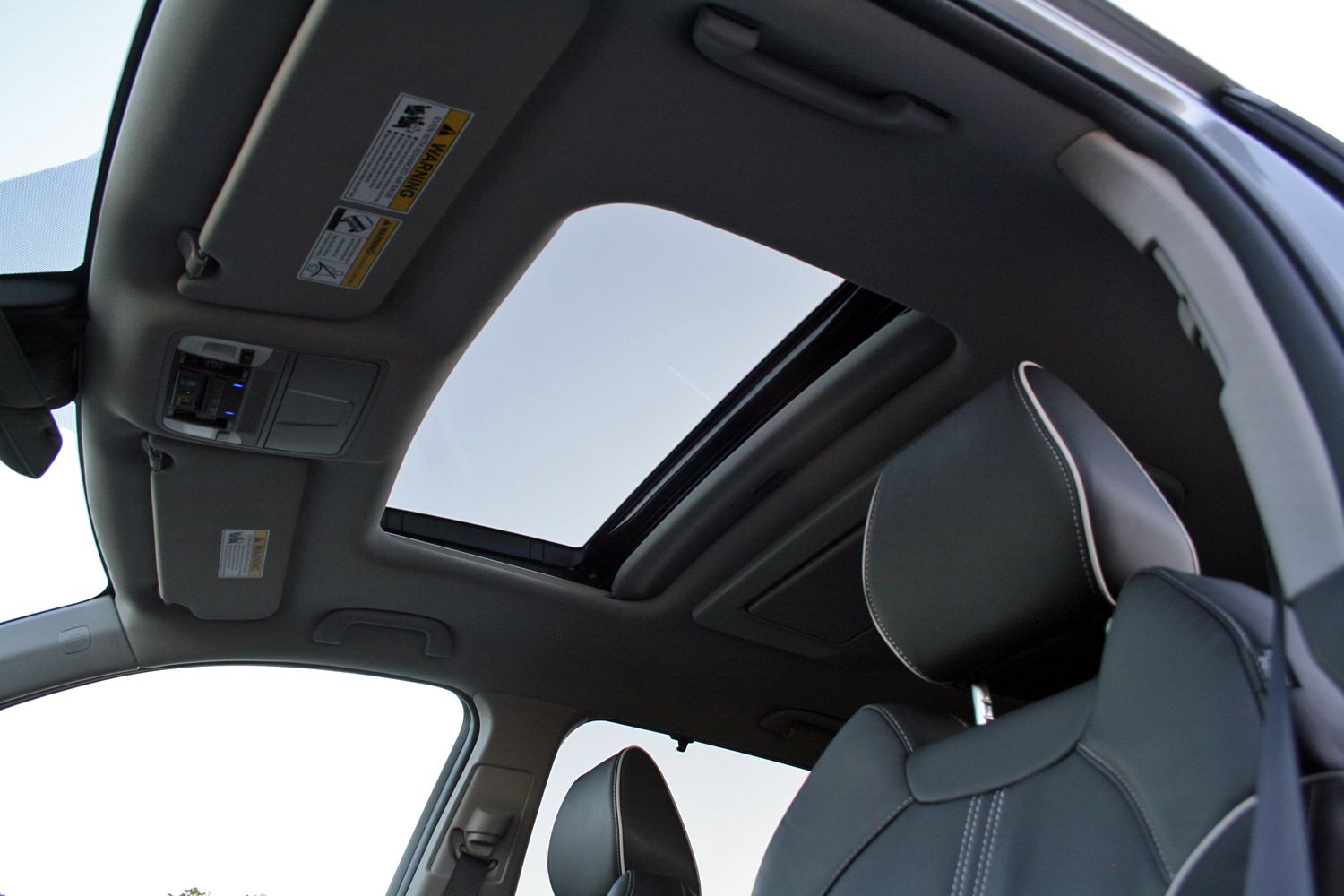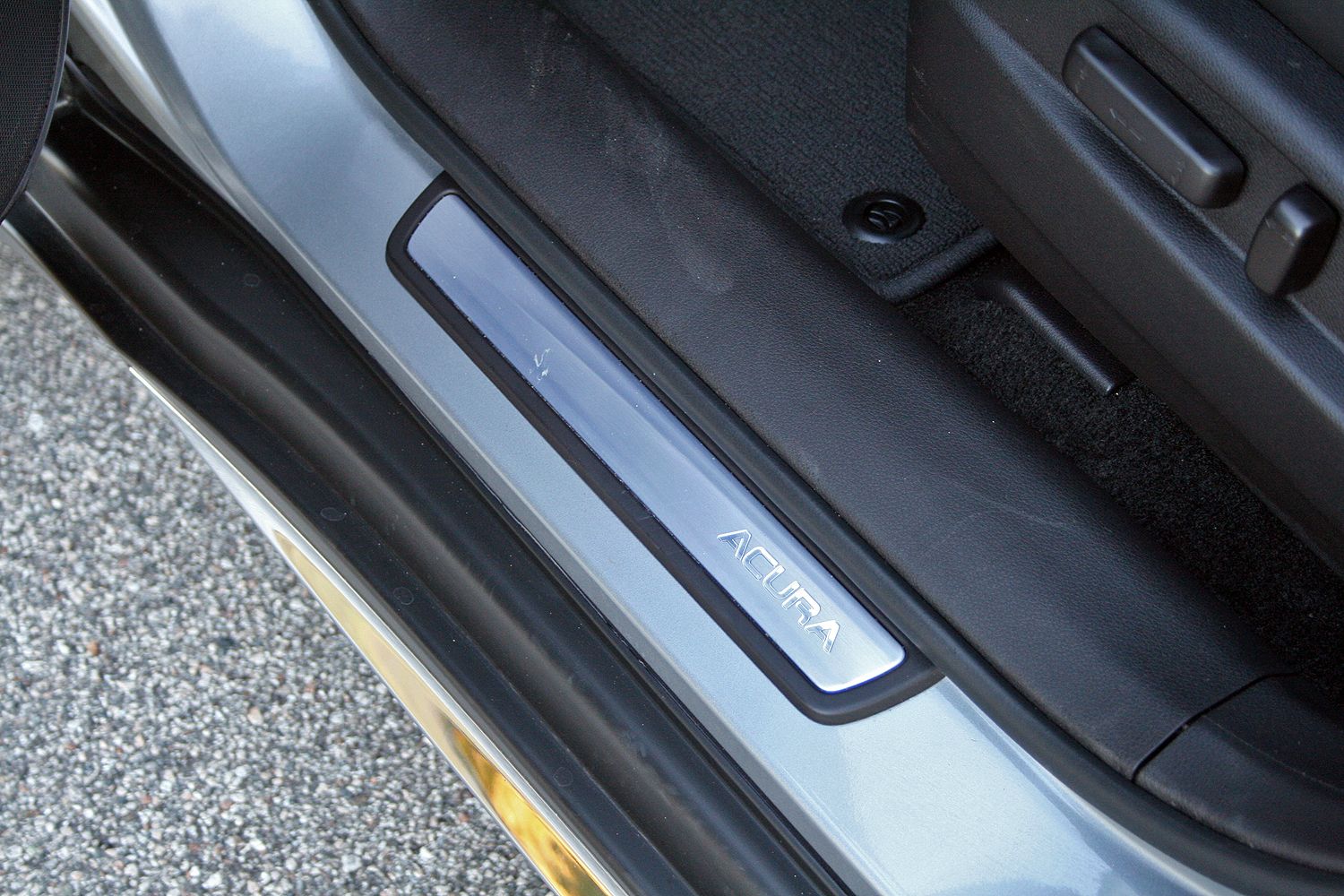The Acura MDX has been roaming streets since the turn of the new millennium. It has held fairly strong sales numbers, with 2014 being its best year with 65,603 examples finding homes. That makes sense, as the 2014 model year marked the first year of the current generation. But sales have slowly slipped, with Acura only moving 49,252 MDX models in the first 11 months of 2016. However, the three-row crossover has a new hope – a heavily refreshed face for the 2017 model year.
The new MDX loses the unloved “shield” or “beak,” as some called it, trading it in favor of a pentagonal grille with a massive Acura logo affixed front and center. It takes after the Acura Precision Concept. A revised rear fascia and chrome rocker panels further add a level of luxury not present before.
Matching the updated looks are a slew of updated safety systems. AcuraWatch is now standard on every MDX and includes Forward Collision Warning, Automatic Emergency Braking, Lane Departure Warning, Lane Keep Assist, and Adaptive Cruise Control. Thanks to these new systems, along with the LED headlights that scored an “Acceptable” rating with the IIHS, the MDX made the IIHS’ Top Safety Pick+ list for 2017.
The underpinnings continue almost unchanged, however, including the 3.5-liter V-6, nine-speed automatic transmission, and Acura’s available Super Handling AWD system. That’s not a big deal, as the V-6 continues to offer excellent power and efficiency. The i-VTEC and direct-injection 3.5-liter makes 290 horsepower and 267 pound-feet of torque while achieving 19 mpg city, 26 mpg highway, and 22 mpg combined on models equipped with SH-AWD.
To get a feel of the refreshed 2017 MDX, Acura sent me an example to test for a week. I used it as a daily driver – chauffeuring the kid to school, picking up groceries, and making runs across town. Here are my thoughts and impressions.
Continue reading for the full driven review.
2017 Acura MDX – Driven
- Make: Array
- Model: 2017 Acura MDX – Driven
- [do not use] Vehicle Model: Array
Video Review
Exterior
Acura is launching a new design style with the 2017 MDX. Gone is the questionable shield that sat atop the grille of every model of the last 10 years, making way for a five-sided chrome grille with a piano black insert with a huge Acura badge sitting front and center. Updated LED headlights grace the flanks of the grille, while new LED fog lights help light the road immediately ahead of the MDX. Both work incredibly well at dispelling darkness. The lower fascia is also new, now sporting some chrome trim that is echoed around the bottom edges of the rocker panels and rear bumper. It’s a cohesive design that brings the MDX into a more upscale neighborhood.
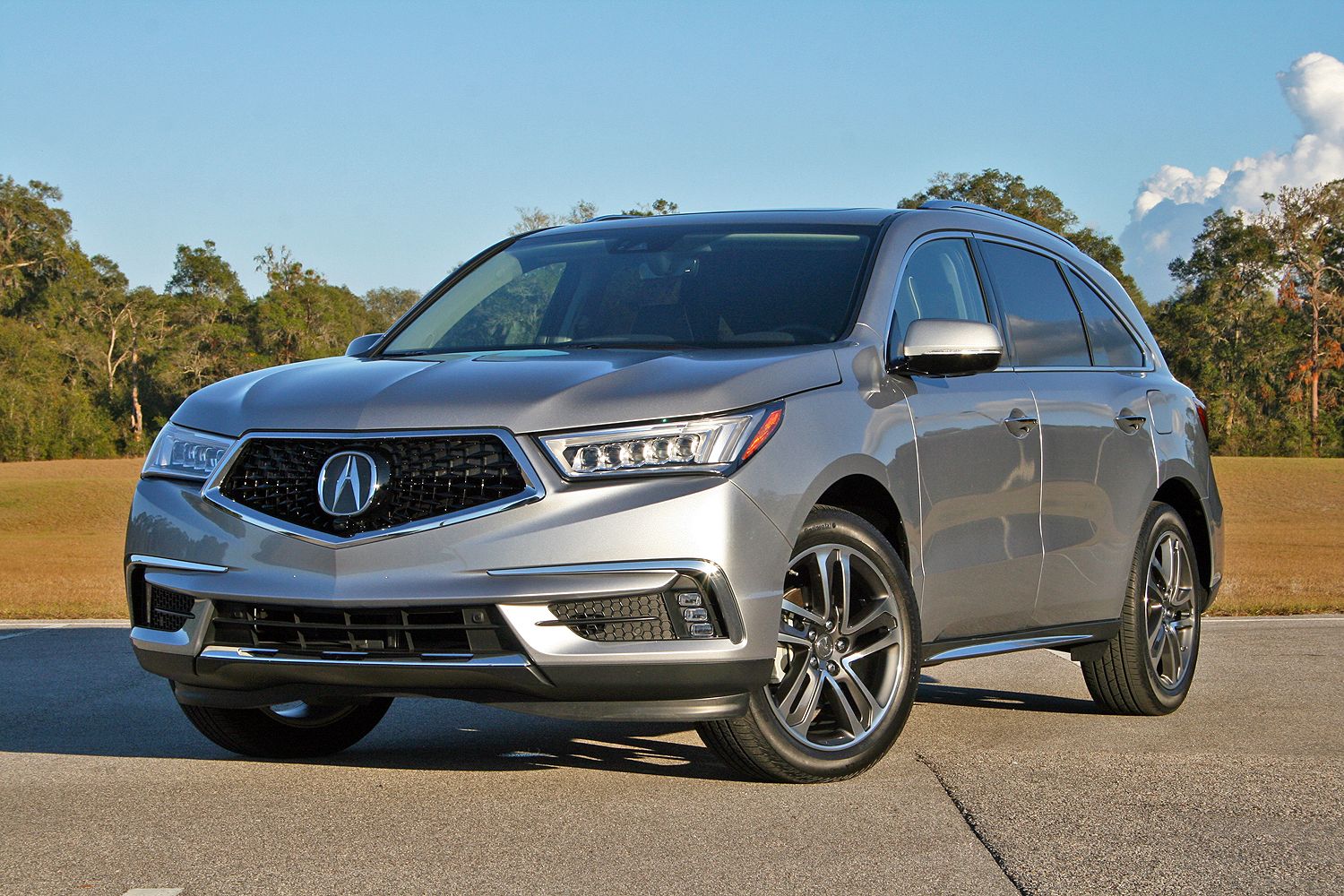
|
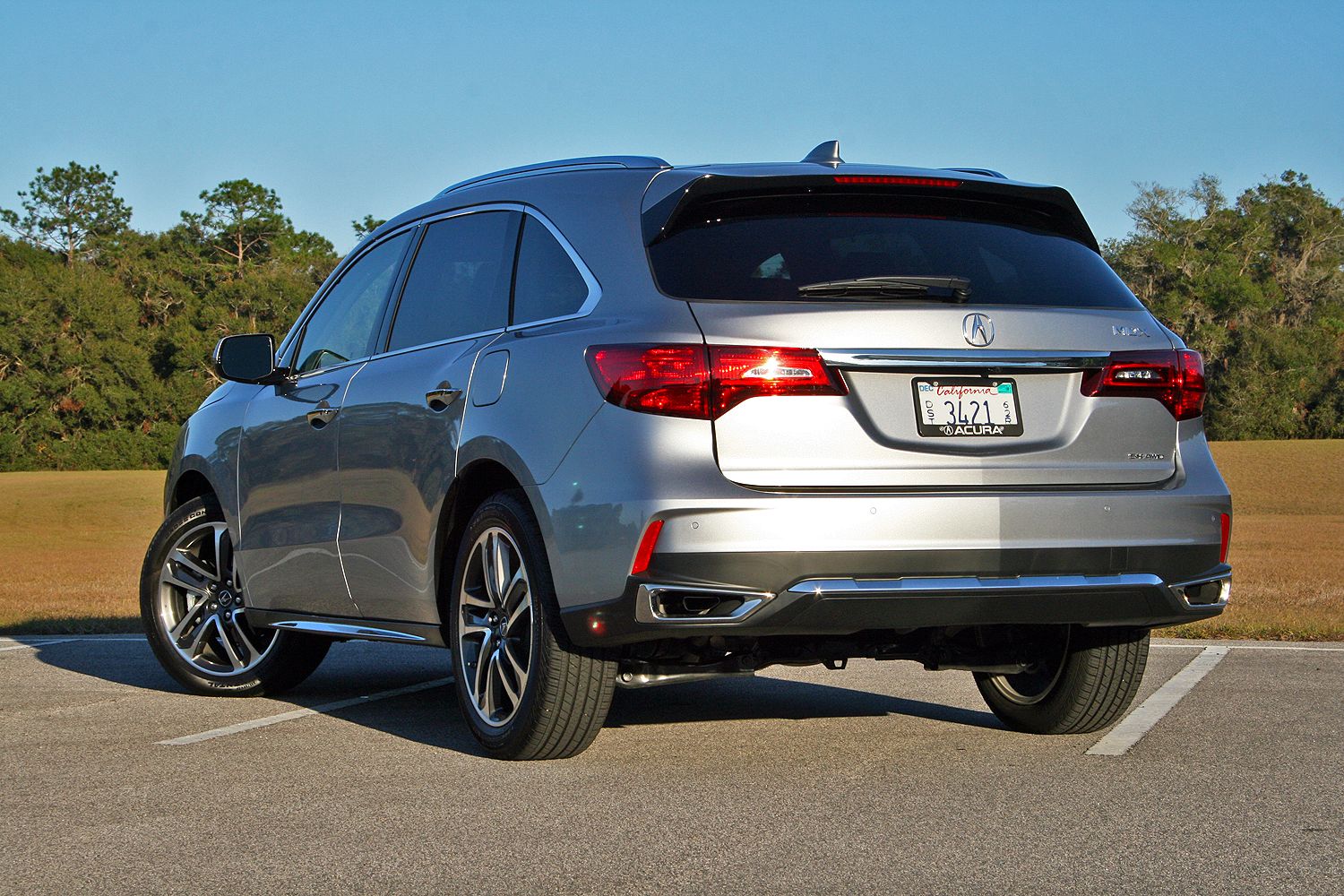
|
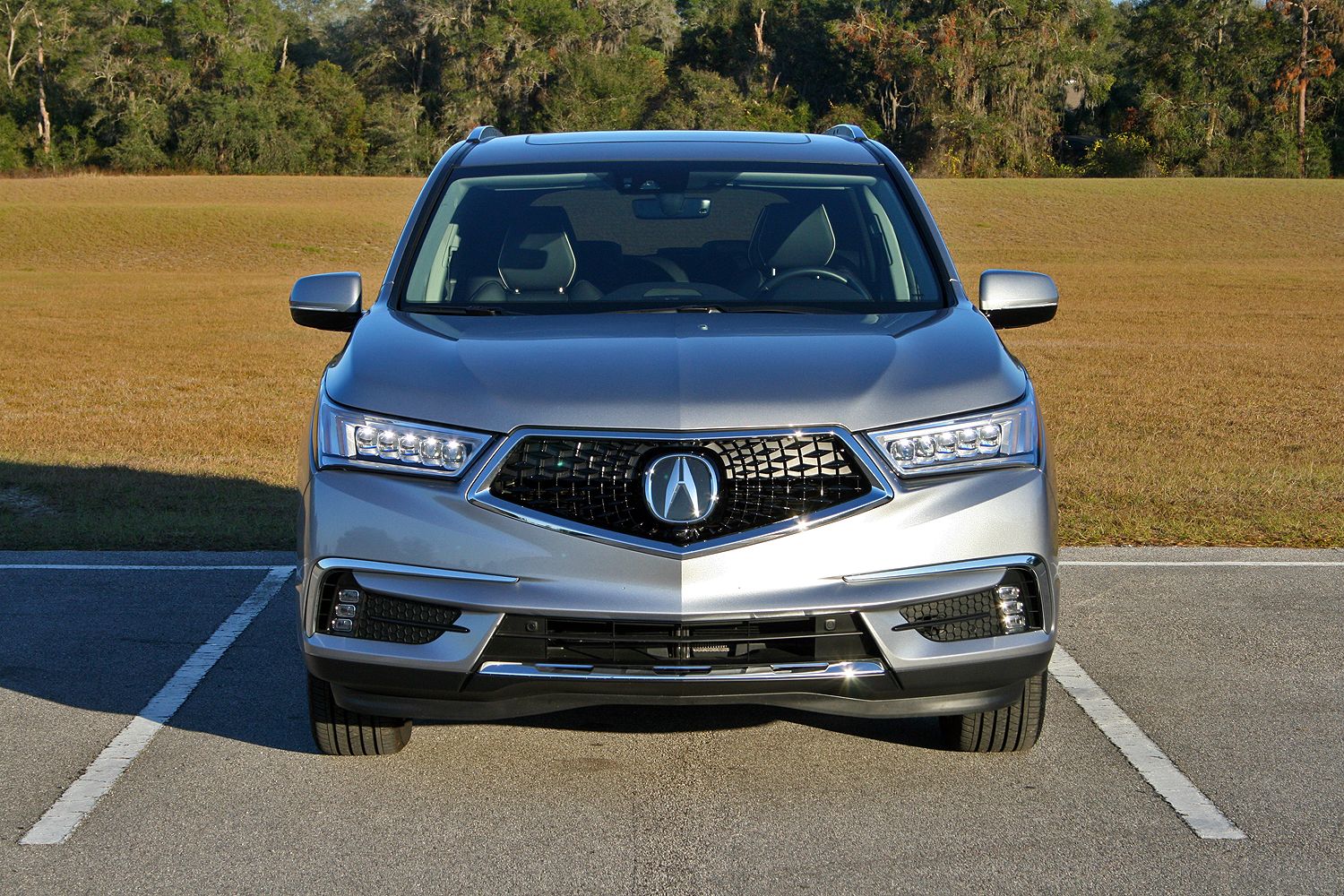
|
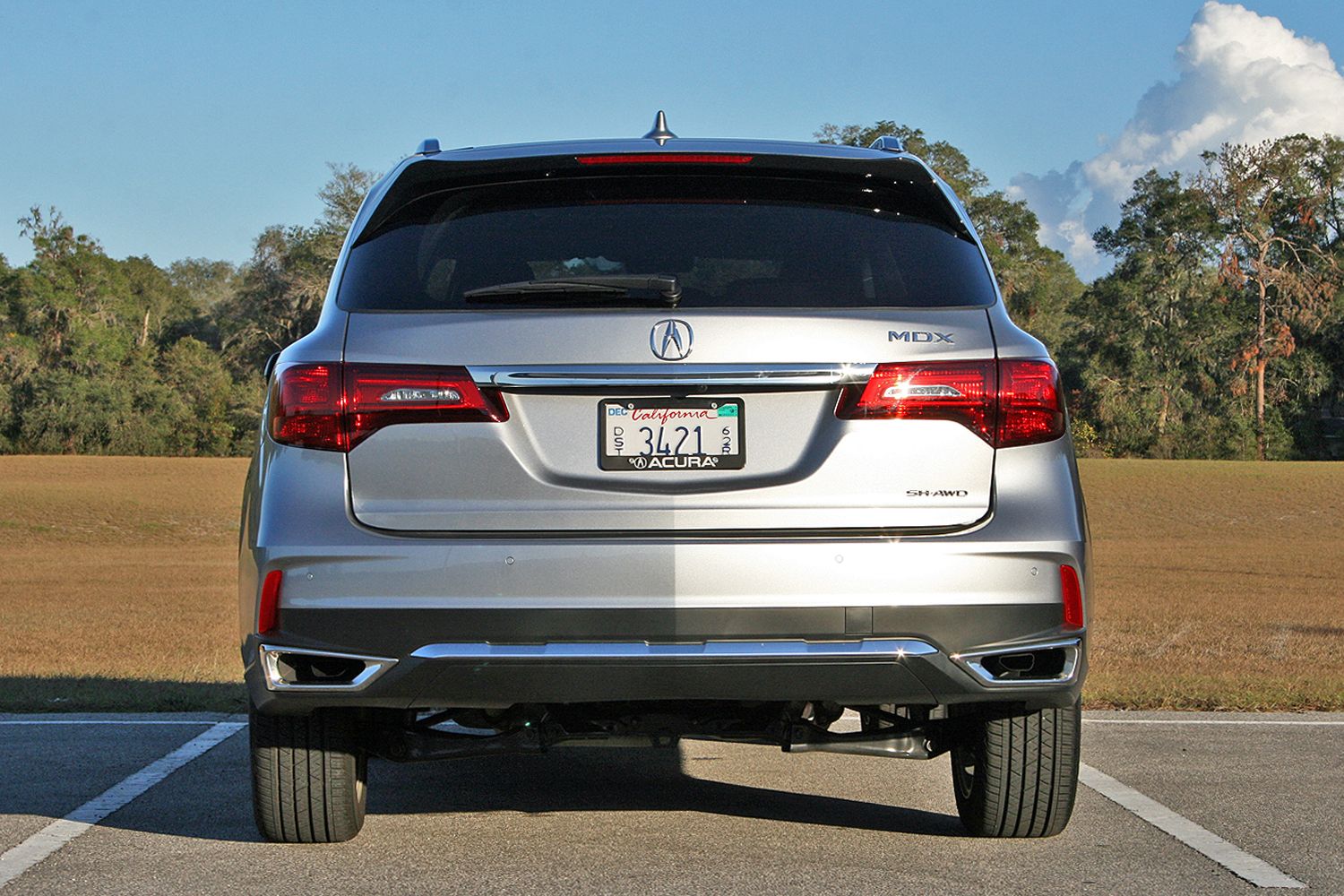
|
The roofline and side profile aren't changing for 2017, but isn’t a concern thanks to the extensive nature of the other updates. The MDX still features its sloping roofline and tall greenhouse. Outward visibility is generous, especially thanks to the large side mirrors.
Overall, the 2017 Acura MDX is a handsome crossover that better aligns itself with the luxury market. It would not look underprivileged at a country club or golf course parking lot. Plus, the MDX would have no trouble hauling several sets of clubs thanks to its cavernous interior.
The Competitors
The Acura MDX is up against some stiff competition in the 2017 model year. Two of the strongest rivals are the Audi Q7 and Volvo XC90. Both have that European flair and come loaded with technology. As for aesthetics, the Audi Q7 offers a reserved, minimalistic styling design that uses Audi’s corporate six-sided grille and LED headlights to grace the front fascia. The rest of the three-row crossover uses minimalistic styling with thin chrome trim adding pops of spice in all the right places.
For those who want to stand apart, the Volvo XC90 continues to look fresh for the 2017 model year with its large grille and distinctive Volvo badge flanked by beautiful LED headlights and conservative yet highly stylized sheet metal. The recipe for the rear end is much like the Audi Q7’s, with a more squared-off roofline rather than the coupe-like look of the MDX. Admittedly, I am a sucker for those Kardashian-like Volvo taillights. There’s just something about it…
|
Volvo XC90 |
Audi Q7 |
Acura MDX |
|
|
Wheelbase (Inches) |
117.5 |
117.9 |
111.0 |
|
Length (Inches) |
194.9 |
199.6 |
196.2 |
|
Width (Inches) |
84.3 |
87.1 |
77.2 |
|
Height (Inches) |
69.9 |
68.5 |
67.4 |
Interior
While the outside is visibly different than the 2016 model, the updates to the 2017 MDX’s interior are slightly less obvious. A new push-button shifter takes the place of the more conventional gear lever and is basically the only change. The rest of the interior’s aesthetics carry over. That’s not a bad thing, however, as the MDX still has an extremely high level of comfort and embedded luxury.
My tester came nearly fully loaded thanks to the Entertainment package, Technology package, and Advance package. Each brings high levels of equipment. The Entertainment package makes the second-row bench remain standard (though the Advance package alone would add second-row captains chairs). It comes with three positions and heated outboard seats. Also included is the nine-inch VGA screen with removable remote, an eleventh speaker for improved video sound, rear door sunshades, and a 110-volt power outlet in the center console.
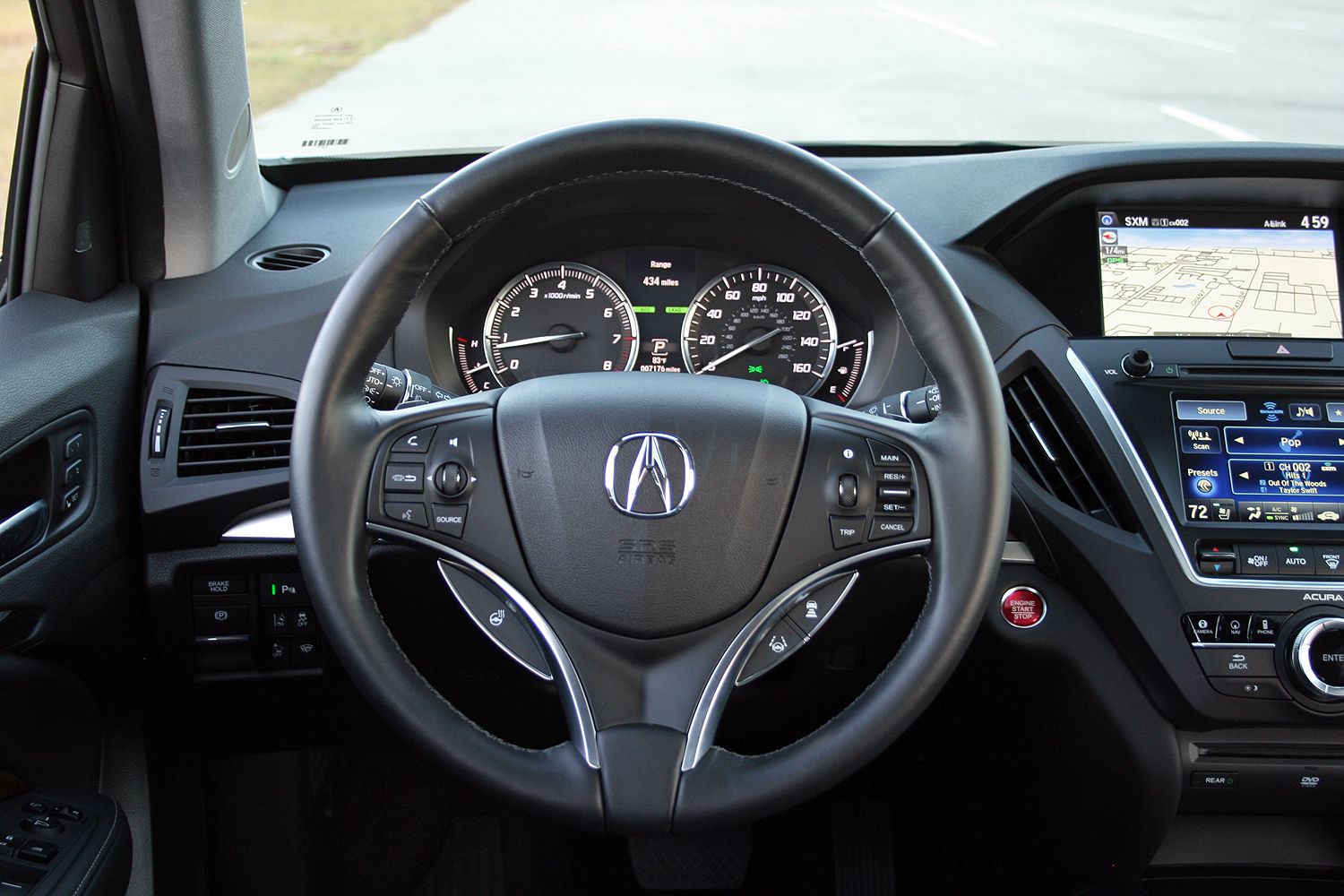
|
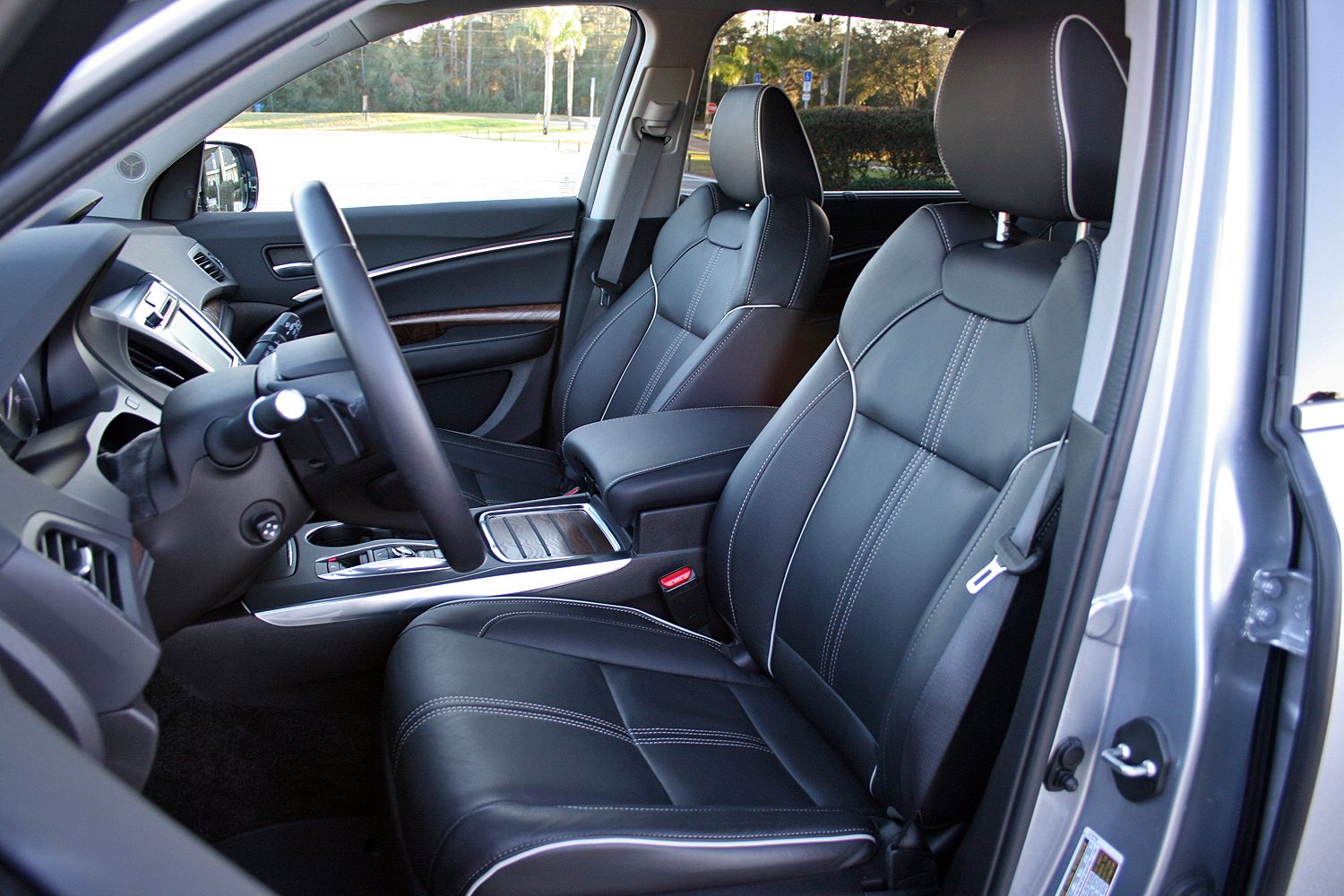
|
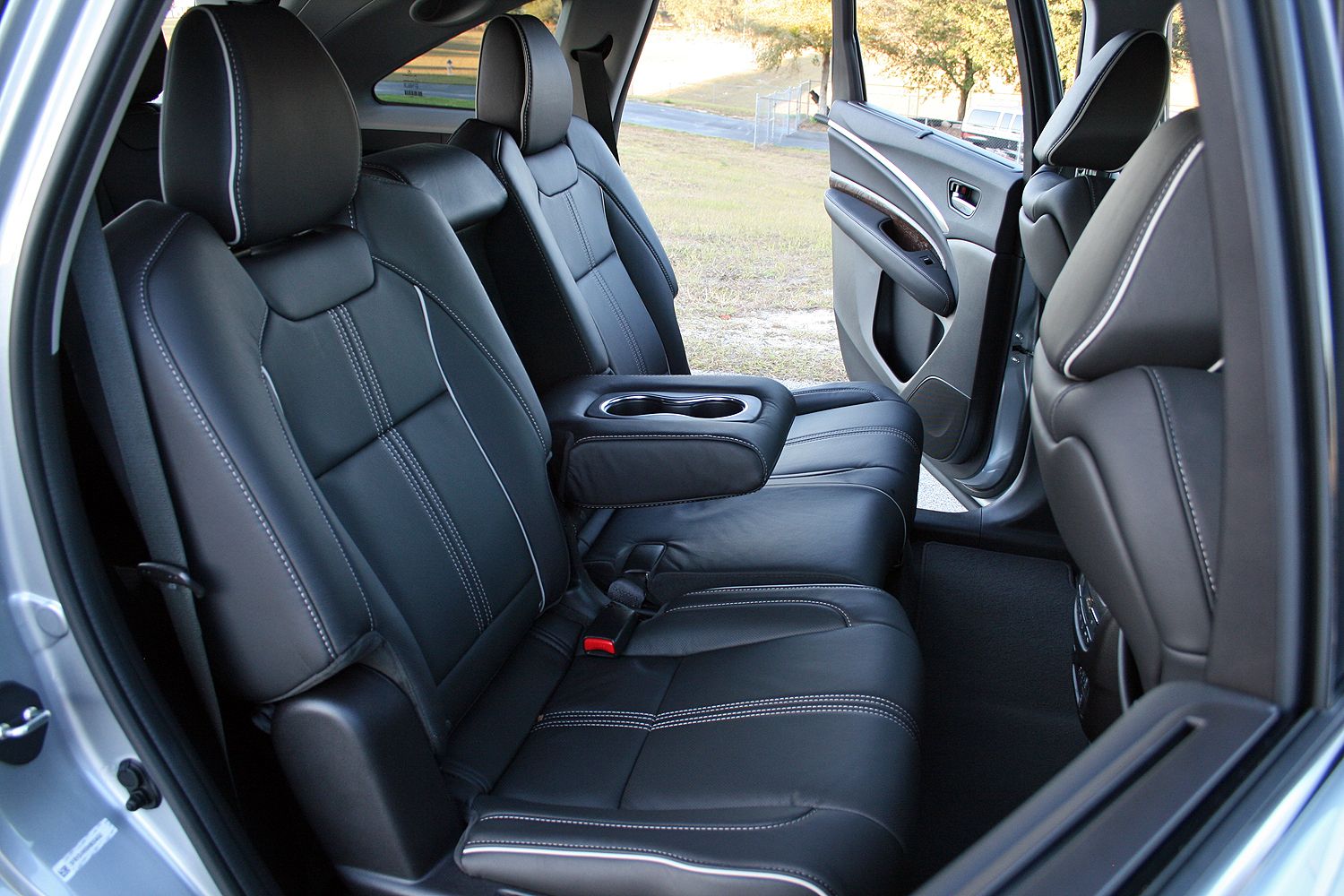
|
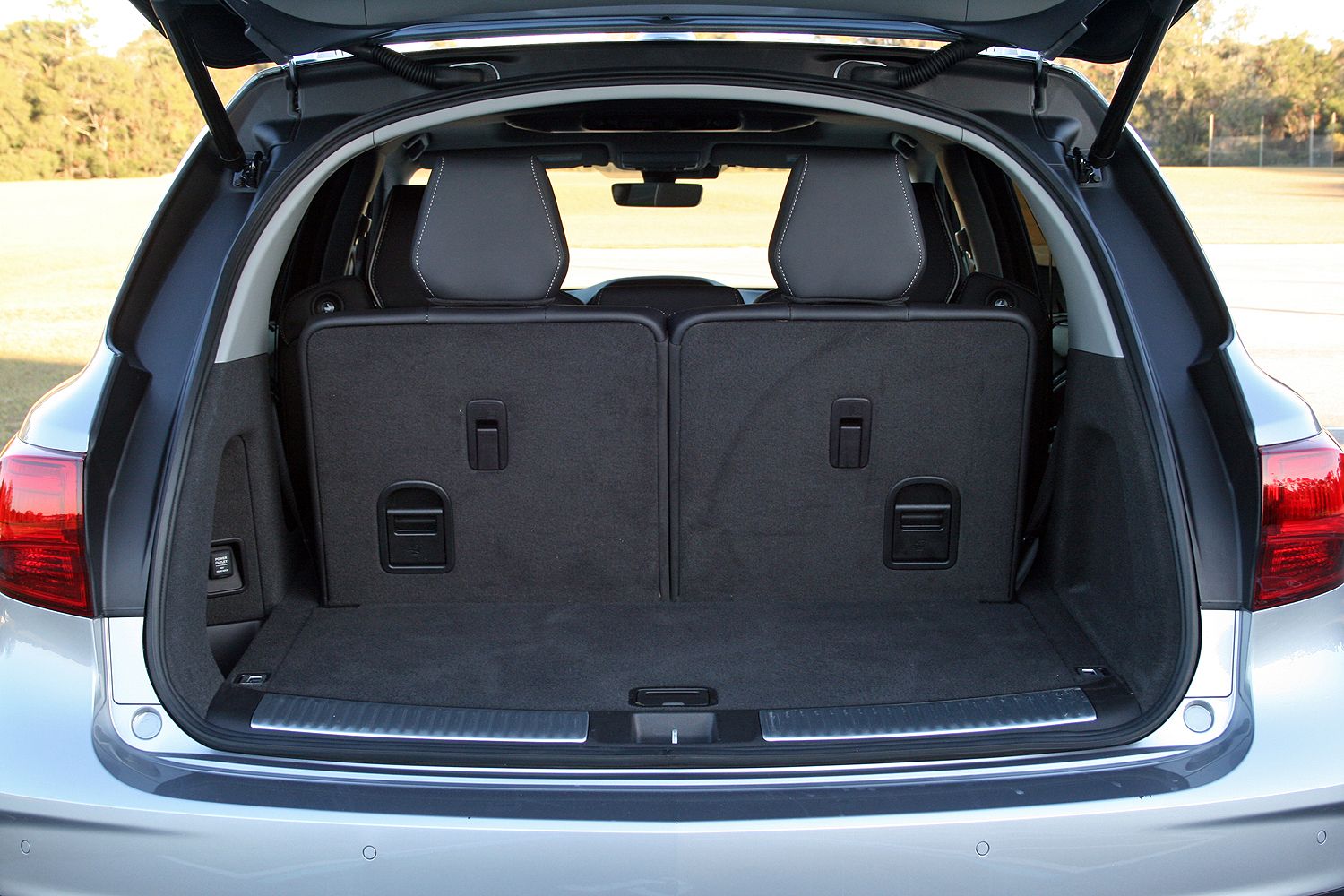
|
When combined with the Technology package and Advance package, the Entertainment package expands the rear nine-inch TV screen to a full 16.2-inch, Ultra-Wide screen with split screen capability and a twelfth speaker. Also included is a GPS-linked climate control, remote engine start, the Multi-Information Display (MID) with Turn-By-Turn Guidance, Rear Door Smart Key Entry, blind spot information, rear cross traffic monitor, Acura Navigation with 3D View and HD traffic with Traffic Rerouting, the ELS Studio premium sound system, and a handful of other features.
The Advance package really adds on the luxury. It brings the perforated leather with contrast stitching and piping, heated and vented front seats, a heated steering wheel, two USB charging ports in the third row, and the Surround View Camera system.
Each package adds more to the price, of course, with the Entertainment package adding $2,000; the Technology package adding $4,410; and the Advance package adding $6,040.
Besides technology, the MDX offers good ole-fashioned passenger room. The second row is immensely comfortable thanks to reclining seatbacks, a fold-down center armrest, heated outboard seats, the sun shades, and of course, enough legroom for full-size adults. When it comes time to haul more passengers, the second row can slide forward allowing for more third-row legroom. Entry into the third row is super easy thanks to an electronic release on the 60/40 split second row. Even my four-year-old figured out how to use it without having to be shown.
When it comes to hauling stuff, the second and third rows fold conveniently flat, allowing for 90 cubic feet of room. Even with the third row in place, the MDX still offers plenty of room for groceries or an overnight bag. Plus, there is a moderately sized storage compartment under the load floor, perfect for a trailer hitch, ice scraper, or other odds and ends.
The Competition
All three of these crossovers has attractive and luxurious interiors. The Audi wears its new high-tech looking dash with Audi’s digital gauge cluster and pop-up infotainment screen. A large trackpad just ahead of the gear shifter controls the system. A spacious second row offers room for three, while the third row holds two. Both rear rows are electronically folding for easy use. There is plenty of cargo room, with 14.8 cubic feet behind the third row and 71.6 cubic feet with the second and third row folded.
If it’s high-end luxury with a classic feel you’re after, the Volvo is certainly the answer. The rich leather is complemented by open-pore wood and aluminum trim pieces. An iPad-like infotainment screen holds most of the buttons and functions normally found on the dash, including HVAC and radio controls. The Volvo also has a digital cluster. Like the other two in this comparison, the Volvo has space for three in the second row and two in the third row. Both rows fold flat, revealing 85.7 cubic feet of room. Behind the third row is 15.8 cubic feet.
|
Volvo XC90 |
Audi Q7 |
Acura MDX |
|||
|
Volvo XC90 |
Audi Q7 |
Acura MDX |
38.9/38.5 |
38.4/38.8/35.9 |
38.1/38.3/35.6 |
|
Head Room first/second/third row (Inches) |
40.9/37.0 |
41.7/38.8/29.2 |
41.4/36.6/28.1 |
||
|
Leg Room first/second/third row (Inches) |
57.7/56.5 |
59.5/58.5/49.4 |
61.1/59.1/54.7 |
||
|
Shoulder first/second/third row (Inches) |
85.7 |
71.6 |
90.9 |
Drivetrain
The Acura MDX comes powered by the familiar 3.5-liter V-6 found throughout the Honda lineup. In this model, it makes 290 horsepower at 6,200 rpm and 267 pound-feet of torque at 4,500 rpm. The engine has an all-aluminum design and features direct fuel injection, i-VTEC, and Variable Cylinder Management.
The i-VTEC system, or Intelligent Variable Timing and lift Control, increase power by advancing the valve timing relative to the engine rpm. The system kicks on at roughly 4,500 rpm and increases the valve openings and keeps them open longer for an increase in airflow. Matched with that is an increased level of fuel supply.
When it comes to saving fuel, the Variable Cylinder Management system cuts fuel and spark to three of the six cylinders. This happens when loads are light, like driving along a flat highway or coasting down a hill. From the driver’s seat, the system works unobtrusively and is completely imperceptible.
The engine is transversely mounted into the engine bay and is mated to a nine-speed automatic transmission. FWD comes standard, but the optional SH-AWD is available on every trim. SH-AWD, or Super Handling All-Wheel Drive, greatly improves grip on slick surfaces. Not only does it prevent wheel slip, it also uses torque vectoring to help guide the MDX into corners by adding power to the outside wheel. All this happens without the driver having to do anything.
The EPA rates the 2017 Acura MDX with SH-AWD at 19 mpg city, 26 mpg highway, and 22 mpg combined. During my week of testing in mixed driving, I averaged 21 mpg combined.
For those wanting to save more on fuel, Acura is now offering a hybrid model. It uses a smaller, 3.0-liter V-6 and a seven-speed, dual-clutch automatic transmission to power the front wheels, while the rear wheels are powered by twin electric motors. The combination is good for 325 horsepower and an EPA-estimated 25 mpg city and 26 mpg on the highway.
The Competition
The Audi Q7 has two engine choices: a 252-horsepower, 2.0-liter turbocharged four-cylinder and the 3.0-liter supercharged V-6. For those wanting to save money, the four-cylinder is the better choice – it costs roughly $5,800 less. The supercharged V-6, however, is the one you want. It boasts 333 horsepower and 325 pound-feet of torque. Regardless of engine, the Q7 uses an eight-speed automatic transmission and Audi’s quattro AWD system.
The Volvo offers even more choices than Audi. The standard engine is a 2.0-liter turbo-four in the XC90 T5. It makes 250 horsepower and 258 pound-feet of torque. An eight-speed automatic sends power to the front wheels or to all four with the AWD option. Opt for the T6, and you’ll get a 2.0-liter four-cylinder with both a turbo and supercharger, which makes 316 horsepower. It comes standard with AWD and the eight-speed auto. Volvo even offers a hybrid version, the T8 Plug-in Hybrid, with the 2.0-liter turbocharged and supercharged four-cylinder connected to a 9.2 kWh battery pack that sends power to the eight-speed automatic. Combined together, the powertrain kick out an impressive 400 horsepower and 472 pound-feet of torque. AWD comes standard here.
|
Volvo XC90 T5 |
Volvo XC90 T6 |
Volvo XC90 T8 Hybrid |
Audi Q7 2.0 |
Audi Q7 2.0 |
Acura MDX |
|
|
Engine |
In-line 4-Cylinder Turbocharged |
In-line 4-Cylinder Turbocharged & Supercharged |
In-line 4-Cylinder Turbocharged/Supercharged Engine w/87 hp Electric Motor |
2.0-liter four-cylinder |
3.0-liter V-6 |
3.5-liter V-6 |
|
Horsepower |
250 HP @ 5,500 RPM |
316 HP @ 5,700 RPM |
400 HP @ 6,000 RPM |
252 HP @ 5,000-6,000 RPM |
333 HP @ 5,500-6,500 RPM |
290 HP @ 6,200 RPM |
|
Torque |
258 LB-FT @ 1,500-4,800 RPM |
295 LB-FT @ 2,200-5,400 RPM |
472 LB-FT @ 2,200-5,400 RPM |
273 Lb-FT @ 1,600-4,500 RPM |
325 Lb-FT @ 2,900-5,300 RPM |
267 LB-FT @ 4,700 RPM |
|
0 to 60 mph |
6.5 |
6.1 seconds |
5.3 seconds |
7.1 seconds |
5.7 seconds |
5.9 seconds |
|
Top Speed |
130 mph |
130 mph |
132 mph |
130 mph |
130 mph |
113 mph |
|
Weight |
4,293 Lbs |
4,627 Lbs |
5,059 Lbs |
4,696 Lbs |
4,938 Lbs |
4,001 Lbs |
|
Towing |
4,000 Lbs |
5,000 Lbs |
5,000 Lbs |
4,400 Lbs |
7,700 Lbs |
3,500 Lbs |
Safety
The Acura MDX is about as safe as modern crossovers come. Not only does it have all the requisite passive safety systems like airbags, crumple zones, seatbelts, and such, but it also comes with a full suite of active systems designed to prevent a crash altogether. It’s called AcuraWatch and it combines Forward Collision Warning, Automatic Emergency Braking, Lane Departure Warning, Lane Keep Assist, and Adaptive Cruise Control. This means the MDX monitors the road ahead for any obstructions, and will actively engage the brakes should the driver fail to stop in time. Because of this, the 2017 MDX was awarded the Insurance Institute for Highway Safety’s Top Safety Pick+ award.
Other active safety systems include blind spot monitoring with rear cross traffic alert and the 360-degree camera system that makes navigating tight spaces a breeze.
The Competition
The Audi comes with a slew of safety features, as well. So much so, that the IIHS also gave the Q7 a Top Safety Pick+ award for 2017. That’s thanks to its automatic front collision avoidance systems, “Good” rated crash test scores, and “Good+” rating for the LATCH system’s ease of use. Its headlights only scored a “Marginal” in the IIHS’ new testing regiments, however.
Volvo might be the first brand you think about when it comes to safety. That notion proves true with the XC90. It scored a “Good” rating in every crash test category and a “Superior” in front crash prevention. Sadly, its headlights only scored a “Marginal” in the IIHS’ new-for-2017 testing, so that keeps the XC90 from being a Top Safety Pick+. It did, however, earn the next level down – the Top Safety Pick.
Behind the Wheel
Acura didn’t change any of the MDX’s greasy bits for 2017, but it didn’t have to. The crossover drives much smaller than it is thanks to a tight turning radius, peppy engine, and sure-footed AWD system. Its tall greenhouse offers a great field of view outside, though radar sensors and the 360-degree camera system serve as a great failsafe system.
The MDX offers three drive modes: Normal, Comfort, and Sport. The difference between Comfort and Normal is nominal, though Sport mode keeps the engine revs more centered in the power band. The nine-speed automatic does have steering wheel-mounted paddle shifters, but they offer a slow and unrewarding response. You’re better off just letting the gearbox think for itself. Nevertheless, the MDX moves far better than a three-row crossover should.
Braking and turning fail to upset the MDX’s suspension system, with very little nose dive or roll. Acura says the MDX was tested on the Nürburgring – and while that might be true – this isn’t an NSX. It’s a family hauler that also happens to be fun to drive. Just not that fun.
Pricing
The 2017 Acura MDX carries a “base” price of $43,950. Start tacking on the Entertainment, Technology, and Advance packages, and you’re looking at $58,400 – just as my tester was priced at. Also added onto that is Acura’s $940 destination and delivery fee. That brings the price to $59,340.
|
Acura MDX |
$43,950 |
|
Entertainment package |
$2,000 |
|
Technology package |
$4,410 |
|
Advance package |
$6,040 |
|
SH-AWD |
$2,000 |
The Competition
The 2017 Audi Q7 carries a starting price of $49,000. That gets you the 2.0-liter four-cylinder and the Premium trim level. Opting for the V-6 moves the price to $54,800. The mid-range Premium Plus trim starts at $53,000 with the four-cylinder and $58,800 with the V-6. The range-topping Prestige trim only comes with the V-6 and starts at $64,300.
Volvo’s pricing has the largest range here. Its “base” T5 with FWD starts at $45,750. Adding AWD moves the price to $47,750. The more powerful T6 starts at $52,250 while the T8 Hybrid starts at $67,800. For those wanting a limousine, the XC90 Excellence, which also uses the T8 Hybrid drivetrain, carries a starting price of $104,900.
Other Comparable Crossovers
2017 Land Rover Discovery
For those wanting to explore the paths less traveled, Land Rover is has a new product for 2017 – the Discovery. The name should sound familiar, but this LR4-replacement is new from the lug nuts up. It rides on a unibody platform and has the ability to carry seven passengers while fording streams up to 33.4 inches deep. It rides on an adjustable air suspension that affords it outstanding off-road capabilities. Of course, the Discovery owes most its off-roading abilities to its Terrain Response 2 system that automatically operates its full-time 4WD system. The U.S. is getting two engine options – the 3.0-liter supercharged V-6 with 340 horsepower and 332 pound-feet of torque and the 3.0-liter Td6 V-6 turbodiesel with 254 horsepower and 443 pound-feet of torque. Both come mated to an eight-speed automatic transmission.
Prices for the 2017 Land Rover Discovery starts at $49,990 for the gasoline V-6 and $58,950 for the turbodiesel.
Read more about the Land Rover Discovery here.
2017 GMC Acadia Denali
The Denali trim level takes conventional GMC products and makes them into something more special. That’s so different with the new-for-2017 Acadia. This three-row crossover rides on a completely new chassis than the 2016 GMC Acadia and it’s far more upscale for it. The leather-lined interior offers room for seven while GMC’s extremely user-friendly IntelliLink infotainment system inhabits the dashboard. Analog gauges are supplemented by a large TFT display.
Standard in the Acadia Denali, power comes from a 3.6-liter gasoline V-6 making 310 horsepower and 271 pound-feet of torque. An eight-speed automatic does the shifting. FWD comes standard, but AWD is optional.
Prices start at $45,845 for the FWD Acadia Denali and $47,845 for the AWD version.
Find out more about the GMC Acadia Denali here.
Conclusion
The Acura MDX isn’t all new for 2017, but its advances in design, along with its host of technology, help make it a very competitive crossover in the three-row luxury segment. Its new face is far more lovable than that of the previous model, and the high-end active safety features make it an easy choice when caring for a family. Add to that a peppy yet efficient V-6 mated with a very competent AWD system, and you’ve got a great crossover. Of course, I can’t fail to mention the comfortable seating, easy-to-use second and third-row seats, and the “are we there yet?” squashing entertainment system. Of course, not every family needs all the bells and whistles, so it's nice that Acura allows the packages to be ordered separately.
All told, the MDX is a surprisingly luxurious, competent, and capable three-row crossover that has a handsome face and squishy inside.

